First-ever cases of HPAI confirmed in US ruminants
Poulsen urges biosecurity to protect herds
By Danielle Nauman danielle.n@dairystar.com
MADISON, Wis. — Many
Americans turned their attention toward March Madness last month.
The U.S. dairy industry found itself in the throes of its own version of madness as cows on dairy farms in Texas and Kansas began exhibiting symptoms of an illness later identied as highly pathogenic avian inuenza.
Dr. Keith Poulsen, director of the Wisconsin Veterinary Diagnostic Laboratory, spoke April 2 during a Professional Dairy Producer “The Dairy Signal.”
“The second week of March, farmers were dealing with an unknown morbidity event,” Poulsen said. “It was not acting like anything else we typically see on a dairy.”

As of April 9, the virus has been conrmed in 17 herds in six states: Texas, 9; Kansas, 3; New Mexico, 2; Idaho, 1; Michigan, 1; and Ohio, 1.
Farmers in the Texas panhandle began noticing a decrease in feed intake and reduced rumen motility as reported by rumination monitors. Cows suffering these symptoms were found to be second-lactation cows or older that were at least 150 days in milk.
The most unusual symptom was in the appearance of the milk of affected cows. While the cows did not



Farm transition gone right
Trust, patience bring dairy ownership to reality
By Abby Wiedmeyer abby.w@dairystar.com
HOLY CROSS, Iowa
Before the ink dried on the land contract Robert Nosbisch signed with his mentors, Dan and Laurie Clemen, he was back in the barn milking cows as he had been doing for the past 12 years.
The only difference was that he was the proud owner of the farm and all the cattle and machinery on it.
“I didn’t know them from Adam when I started, and it has worked out well; I have no complaints,” Nosbisch said. “There was a lot of trust involved. You’ve got to have patience.”
Nosbisch milks 160 cows in a double-8 parallel parlor and crops 280 acres. His heifers are raised down the road in facilities of which he also assumed ownership.
The trust was established when Nosbisch was a dairy nutritionist for the couple. Fresh out of college, Nosbisch wanted to farm but wanted to try a career in nutrition rst.
Dan Clemen was looking for help, so Nosbisch began working part time to help with chores. Eventually, the desire to farm won. He quit his nutrition job to work as a salaried employee for Clemen for ve years.
A family of milk haulers
Swart passes love of job to next generation
By Jan Lefebvre jan.l@star-pub.com
PENNOCK, Minn. —
Darren Swart would take his son, Tanner Rohner, and his daughter, Taylor Rohner Swart, on milk routes when they were growing up. Little did he realize those experiences would lead them to follow in his career.
“They were both still in car seats when I brought them early on,” Swart said.
“They’d go along with me just to get out of the house and to play with the kids on the other farms.”
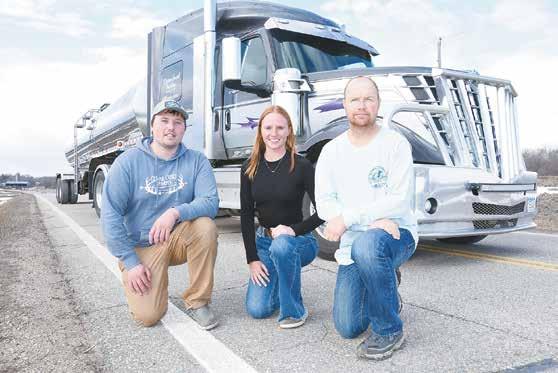
April 13, 2024 Volume 26, No. 4
A
“All dairy, all the time”™
Turn to HPIA | Page 8
ABBY WIEDMEYER/DAIRY STAR
Robert Nosbisch milks cows Feb. 21 at his farm near Holy Cross, Iowa. Nosbisch completed a farm transi on a er working toward ownership for 12 years.
Turn to NOSHBISCH | Page 2
MARK KLAPHAKE/DAIRY STAR
Turn to SWART | Page 6
Tanner Rohner (from le ), Taylor Rohner Swart and Darren Swart gather by Darren’s truck April 2 near Pennock, Minnesota. The three family members are milk haulers.
Sign up for our Newsletter up for our Dairy St r Milk Break Visit dairystar.com to sign up!
Dr. Keith Poulsen Director, Wisconsin Veterinary Diagnostic Laboratory
Published by Star Publications LLC
General Manager/Editor
Mark Klaphake - mark.k@dairystar.com
320-352-6303 (ofce)
320-248-3196 (cell) 320-352-0062 (home)
Ad Composition - 320-352-6303
Nancy Powell • nancy.p@dairystar.com
Karen Knoblach • karen.k@star-pub.com
Annika Gunderson • annika@star-pub.com Editorial Staff
Maria Bichler - Assistant Editor maria.b@dairystar.com
Stacey Smart - Assistant Editor 262-442-6666 • stacey.s@dairystar.com
Danielle Nauman - Staff Writer 608-487-1101 • danielle.n@dairystar.com
Abby Wiedmeyer - Staff Writer 608-487-4812 • abby.w@dairystar.com
Tiffany Klaphake - Staff Writer 320-352-6303 • tiffany.k@dairystar.com
Jan Lefebvre - Staff Writer jan.l@star-pub.com
Amy Kyllo - Staff Writer amy.k@star-pub.com
Emily Breth - Staff Writer emily.b@star-pub.com Consultant
Jerry Jennissen 320-346-2292

The goal for Nosbisch to take over the farm was mutual from the beginning. Nosbisch took over picking out bulls for breeding and making feed decisions and cropping plans within the rst couple of years of working for Clemen.
“He said if you are going to buy them all, you might as well pick the bulls,” Nosbisch said. “He took my opinion with a grain of salt but also showed me that sometimes it’s a long process, and you can’t have everything you want right away. It takes time to make money to pay for things you want to change.”
Before taking ownership of the operation, Nosbisch worked on


507-634-4413
920-979-5284
Jerry Nelson (SW MN, NW Iowa, South Dakota) 605-690-6260 • jerry.n@dairystar.com
Mike Schafer (Central, South Central MN) 320-894-7825 • mike.s@dairystar.com
Megan Stuessel (Western Wisconsin) 608-387-1202 • megan.s@dairystar.com
Julia Merten (Southeast MN and Northeast IA) 507-438-7739 • julia.m@star-pub.com
Bob Leukam (Northern MN, East Central MN) 320-260-1248 (cell)
bob.l@star-pub.com
Mark Klaphake (Western MN)
320-352-6303 (ofce) • 320-248-3196 (cell)

halves for two years. On Jan. 1, he bought the rest of the cows and later that month purchased the rest of the ground on a land contract. Nosbisch said the Farm Service Agency has offered help through various beginning farmer programs.
Cows are housed in two freestall barns. Milking takes about 2.5 hours with the help of a part-time high school student and a full-time laborer. Nosbisch’s wife works off the farm, and their young son spends afternoons watching his dad milk cows.
Calves are raised in a renovated hog barn with an automatic feeder. The upgrade came about ve years ago. Nosbisch said the ventilation
system leaves something to be desired but has been resulting in healthy calves thus far.
Heifers are brought back to the dairy once they are pregnant. Nosbisch would like to raise all the heifers on one site to eliminate trucking them back and forth.
Milk is shipped to Prairie Farms Dairy in Dubuque. Nosbisch credits the creamery for making the transition possible with good milk prices and a well-managed market. He was able to obtain the market right before the creamery implemented a quota system.












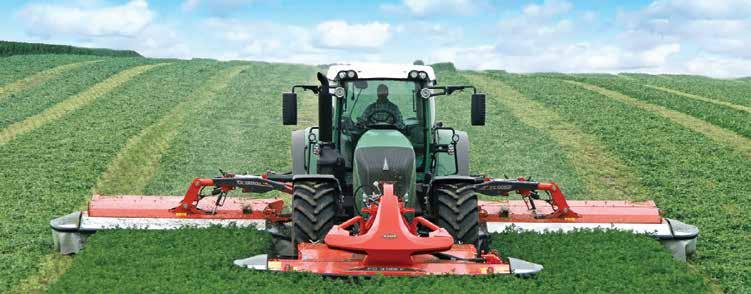










Page 2 • Dairy Star • Saturday, April 13, 2024 North America dealers. DAIRY ST R ISSN Print: 2834-619X • Online: 2834-6203 522 Sinclair Lewis Ave. Sauk Centre, MN 56378 Phone: 320-352-6303 Fax: 320-352-5647 www.dairystar.com Deadlines The deadline for news and advertising in the Dairy Star is 5 p.m. Friday the week before publication. Subscriptions One year subscription $42.00, outside the U.S. $200.00. Send check along with mailing address to Dairy Star, 522 Sinclair Lewis Ave., Sauk Centre, MN 56378. Advertising Our ad takers have no authority to bind this newspaper and only publication of an advertisement shall constitute nal acceptance of the advertiser's order. Letters Letters and articles of opinion are welcomed. Letters must be signed and include address and phone number. We reserve the right to edit lengthy letters. The views and opinions expressed by Dairy Star columnists and writers are not necessarily those of the Dairy Star / Star Publications LLC. The Dairy Star is published semi-monthly by Star Publications LLC, 522 Sinclair Lewis Ave., Sauk Centre, MN 56378-1246. Periodicals Postage Paid at Sauk Centre, MN and additional mailing ofces. POSTMASTER: Send address changes to Dairy Star, 522 Sinclair Lewis Ave., Sauk Centre, MN 56378-1246. © 2023 Star Publications LLC Advertising Sales Main Ofce: 320-352-6303 Fax: 320-352-5647 Deadline is 5 p.m. of the Friday the week before publication Sales Manager - Joyce Frericks 320-352-6303 • joyce@saukherald.com National Sales Manager - Laura Seljan (National Advertising, SE MN)
fax:
507-250-2217 •
laura.s@dairystar.com Assistant Sales Manager - Kati Schafer (Northeast WI and Upper MI)
• kati.s@dairystar.com
Con nued from NOSHBISCH | Page 1 Isaacson Sales & Service Lafayette, MN Dave's Repair Farm Equipment Hills, MN Northland Farm Systems Owatonna, MN Bodsensteiner Implement Company Elkader, IA Burco Sales Independence, IA Dee Implement Of Waukon Waukon, IA Kunau Implement Company Dewitt, IA Rexco Equipment Farley, IA Greiner Implement Company Ottumwa, IA Helmuth Repair Kalona, IA Beck Implement Elgin, MN Woller Equipment Swanville, MN Miller Sellner Slayton Slayton, MN Invest in Quality ® www.kuhn.com Visit your local KUHN Hay & Forage dealer today! FC 25 F & 30 SERIES | Triple Mower Conditioners 10'2" – 32'6" working widths MAXIMUM OUTPUT. OPTIMAL FORAGE. ® ® blades UP TO $4 , 000 OFF NEW FC MODELS CONTACT YOUR LOCAL DEALER: Offer ends: June 28, 2024 ABBY WIEDMEYER/DAIRY STAR
a farm transi on this year, making him the proud owner of this dairy opera on near Holy Cross, Iowa. The 280-acre farm is home to 160 cows and
family.
Robert Nosbisch completed
Nosbisch’s
Turn to NOSHBISCH | Page 5


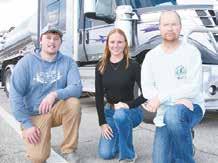
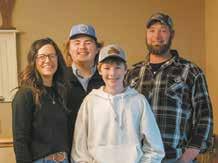
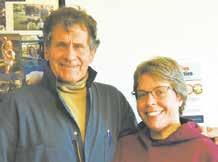

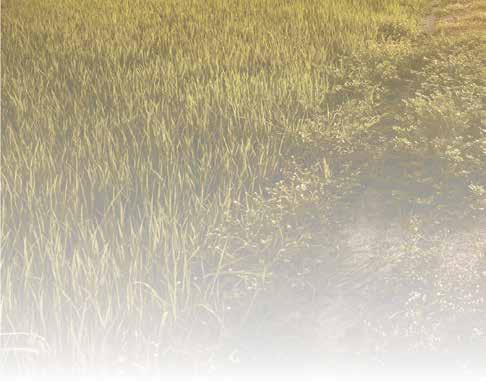

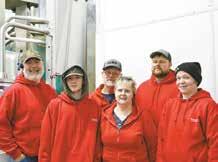


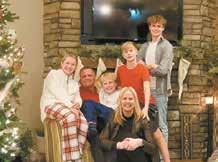
















How have your increased your role on the farm? First Section: Pages 15 - 16 FROM OUR SIDE OF THE FENCE: For additional stories from our other zone, log on to www.dairystar.com Dairy Star • Saturday, April 13, 2024 • Page 3 Clasemanns embrace robotic milking system Second Section: Pages 3 - 4 Long Prairie, MN Zone 2 Zone 1 A day in the life of the Kilburgs Second Section: Pages 12, 14 - 15 Bellevue, IA Kids Corner: The Maassen family Third Section: Pages 12 - 13 Maurice, IA Sonstegard specializes in fertility, conventional practices First Section: Pages 26 - 27 Hoffman, MN Lake City boys basketball team places second at state tournament First Section: Pages 32 - 33 Lake City, MN Behind the Emblem: Sleepy Eye FFA Third Section: Pages 10 - 11 Sleepy Eye, MN Columnists Ag Insider Page 10 First Section F Dear County Agent Guy Page 36 First Section Dea Ag P Firs The “Mielke” Market Weekly Pages 10 - 11 Second Section Veterinary Wisdom Page 37 First Section Vet W Pa P Fir F s From the Zweber Farm Page 38 First Section n F Zwe P Firs Country Cooking Page 22 Second Section C C P The NexGen Page 39 First Section Swart passes love of job to next generation First Section: Pages 1, 6 - 7 Pennock, MN Ellsworth, MN Timmers win PDCA Distinguished Breeder Award First Section: Pages 23, 25 Trust, patience bring dairy ownership to reality First Section: Pages 1, 2, 5 Holy Cross, IA

to Pine Country Bank! With our expertise and commitment to personalized assistance, we’re here to ensure that farmers have the resources they need to thrive in an ever-changing landscape. Contact us to learn more about our ag lending services:


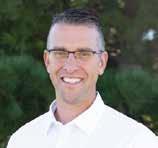

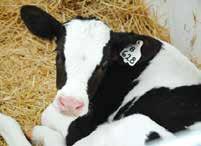


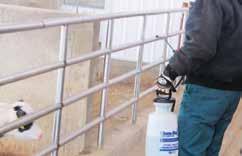


Page 4 • Dairy Star • Saturday, April 13, 2024 FOR MORE INFO - CONTACT ONE OF THESE DEALERS... Lang’s Dairy Equipment, Inc. 2337 Millennium Rd. • Decorah, IA 52101 (563) 382-8722 295 East Main Street • Lewiston, MN 55952 (507) 452-5532 Precision Dairy Equipment 24548 IA-13 • Elkader, IA 52043 (563) 245-2560 Tri-County Dairy Supply, Inc. 4107 N US HWY 51 • Janesville. WI 53545 608-757-2697 Bob’s Dairy Supply 540 E. County Rd. A • Dorchester, WI 54425 (715) 654-5252 Eastern Iowa Dairy Systems 105 3rd Ave. NW • Epworth, IA 52045 (563) 876-3087 Farm Systems 58 Interstate Drive • Melrose, MN 56352 Brookings SD • (320) 256-3276 Leedstone 222 E Co Rd 173 SE, Melrose, MN 56352 (877) 608-3877 24260 Cty. Rd. 27 • Plainview, MN 55964 (800) 548-2540 1720 Freitag Dr. • Menomonie, WI 54751 (866) 467-4717 2580 9th St. E. • Glencoe, MN 55336 (877) 864-5575 Fuller’s Milker Center, LLC 423 U.S. 61 • Lancaster, WI 53813 900 US Hwy. 14 West • Richland Center, WI 53581 (800) 887-4634 Gorter’s Clay & Dairy Equipment 1400- 7th St. SE • Pipestone, MN 56164 (507) 825-3271 Redeker Dairy Equipment W12287 Liner Rd. • Brandon, WI 53919 (920) 346-5576 United Dairy Systems 210 N. Industrial Pkwy • West Union, IA 52175 (563) 422-5355 132 W 11th St. • Monticell, IA 52310 (319) 465-5931 Advanced Dairy LLC 9 State Rd. 29 • Spring Valley, WI 54767 (715) 772-3201 913 W. Main St. • Mondovi, WI 54755 (715) 926-5777 967 West Ave. N • West Salem, WI 54669 (608) 633-6690 2195 Hwy. 23 • Mora, MN 55051 (715) 772-3201 117 West Circle Dr. • St. Charles, MN 55972 (507) 932-4288 1449 Homecrest Ave SE • Wadena, MN 56482 (218) 632-5416 THE NEXT GENERATION IN ON-FARM WATER TREATMENT Chlorine Dioxide Technology Dirty Water? • Respiratory Issues • Scours • Crypto • Salmonella • E-coli GREATLY REDUCED: Pure 3000 CLEAN IT UP WITH Removes IRON, MANGANESE and SULFUR in water! HEALTHIER CALVES HEALTHIER COWS HIGHLY EFFECTIVE AGAINST: Prototheca • Staph Aureus Mycoplasma • Pseudomonas Chlorine-Dioxide Disinfectant / Sterilant • Calf hutches • Calf bottles • Calf nipples • Calf buckets Use EXSPOR
Fast and effective against ALL kinds of harmful substances including bacterial spores as well as bacteria, viruses and fungi! STOP BACTERIA WITH FOAM OR SPRAY ON • Parlor/milk room walls • Drains and more!
Dave
President/ Chief Lending
Tim Twardowski Senior Agricultural Lender (320) 632-9740 tim@pinecountrybank.com Chad Van Beck Senior Business Lender (320) 393-4200 chadv@pinecountrybank.com Mike Mastey Agriculture/Commercial Loan Officer (320) 333-9250 mikem@pinecountrybank.com LITTLE FALLS 1201 1st Ave. NE / 320-632-9740 RICE 750 Cty Rd 21 / 320-393-4200 ROYALTON 412 N. Hwy 10 / 320-584-5522
Empowering
for a sustainable tomorrow.
on:
Welcome
Cebulla Vice
Officer (320) 632-9740 dave@pinecountrybank.com
pinecountrybank.com
farmers

“We were milking the most we’ve ever milked right before the quota, so that helped us a lot,” Nosbisch said. “I haven’t had to buy any quota, and that’s also why we get paid more.”
Everything that is grown on 280 acres is used for feed. Additional corn and hay is purchased. Cows are fed a total mixed ration of corn and alfalfa. Feed is stored in silage bags, but Nosbisch plans to upgrade to bunker silos.
“Bags take up a larger footprint,” Nosbisch said. “We have all the equipment to use bunkers except the packing tractors. Bunkers take up less space.”
Nosbisch also plans to lean on technology for updates. First, he plans
to install activity collars on the cows within the next year to help with the challenges of breeding and move him toward his long-term goals.
“I’m going to do everything I can without building new to improve efciency and make things easier,” Nosbisch said. “For a smaller dairy like me, the goal is to make it protable with less labor.”
Nosbisch hopes that by becoming more efcient, he will be able to convert to a robotic milking system within the decade.
“If you don’t have goals, you’re just spinning your tires,” Nosbisch said. “You’ve got to take it day by day but also have some ambitious goals.”

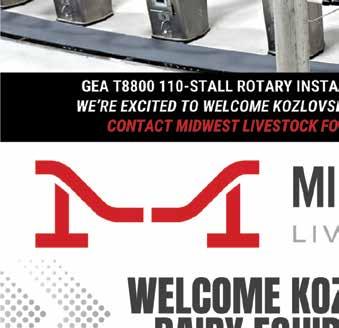







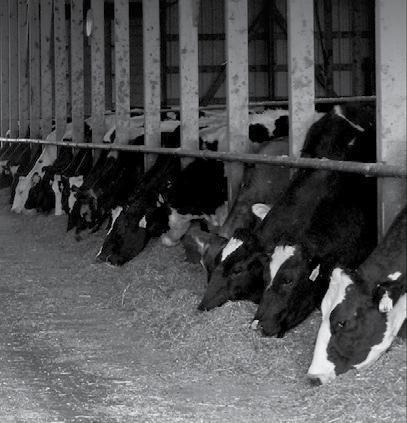

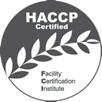


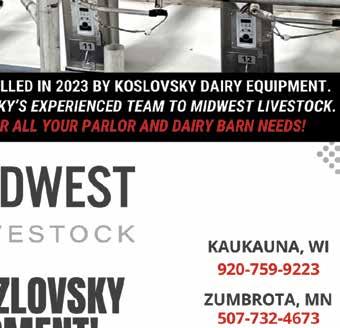


Dairy Star • Saturday, April 13, 2024 • Page 5 320-836-2145 or 800-450-2145 www.famofeeds.com Check out our newly redesigned website to nd a Famo Feeds dealer near you! At Famo Feeds, we strive to provide the best support for your operation and work to accommodate your specific needs. From calf to cow and everything in between! TRUST THE EXPERTS • Milk Replacers • Starter Feeds • Protein Concentrates • Premixes • Minerals • Animal Health Products • Lick Tubs FEED THEM FAMO!
Con nued from NOSHBISCH | Page 2
ABBY WIEDMEYER/DAIRY STAR
A calf drinks from an automa c feeder Feb. 21 at Robert Nosbisch’s farm near Holy Cross, Iowa. Calves are raised in a renovated hog barn.

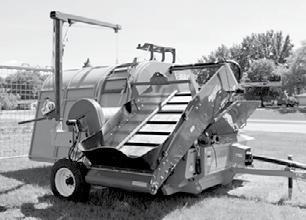


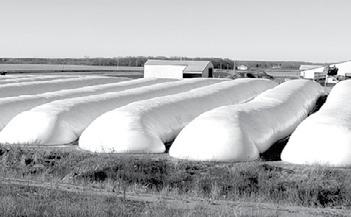

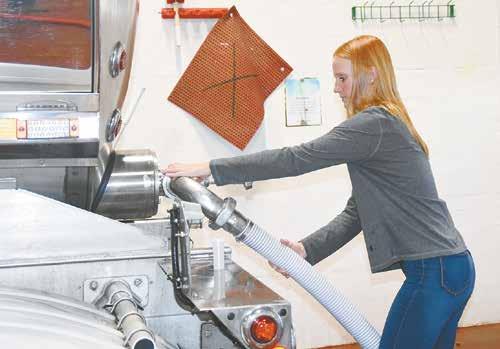
Today, Rohner and Rohner Swart drive milk routes and ll in as relief haulers. Swart hauls milk for Meadow Star Dairy, owned and operated by Riverview LLP in Pennock.

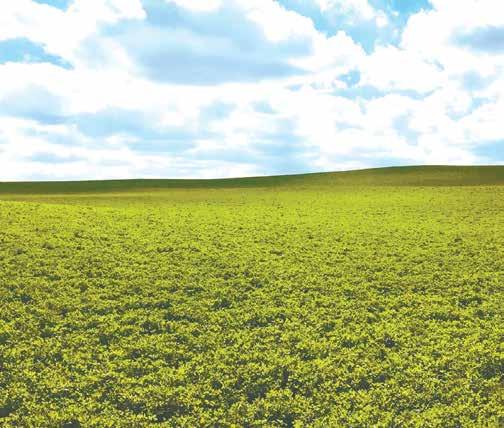

















With all three drivers hauling milk on various shifts, sometimes over 12 hours a day each, the family’s schedule can be hectic.
“I always run overnights, Taylor runs early mornings, and Tanner works for whoever calls — days and nights,” Swart said. “It’s a revolving door around here. It’s very odd if you see all three of us at home at one time.”
The trio hauls milk to plants in Litcheld and Paynesville. At times, they end up at the same plant at the same time.
“One time we were all at Litcheld, and the lab technician said, ‘You guys have hauled 12 loads of milk in here today; you lled a silo all by yourselves,’” Swart said. “A silo is just short of 600,000 pounds of milk.”
Milk haulers are not limited to their number of hours or miles per day. Swart said while it does not force haulers to limit their hours, it also leads to long days.
“The cows never stop milking, so we have to keep hauling,” Swart said.
The family is able to vacation together because haulers are willing to help each other.
“We’ve all made good connections




















in the industry, so we know which drivers to call if we need someone to drive for us,” Rohner Swart said. “That’s a nice part of the milk industry. You get so close by spending so much time together at the plants that everyone is willing to help anybody.”
Swart has been hauling milk since January 1998. The milk hauler for his dad’s farm asked Swart to help with hauling.
“I was only going to haul milk for a few years and then take over the family farm, but they offered me (to purchase) my own truck, and here I am, still hauling milk,” Swart said.
At rst, he worked on routes across Stearns County and found he enjoyed the job.
“It was the farmers and the families (that made the job a pleasure),” Swart said. “Instead of having one family, I had 30 families. The people and the kids — I really enjoyed it.”
When Rohner graduated from high school, he chose to work for Swart’s parents, Roger and Mary, milking cows on his dairy farm. A few years later, Rohner Swart was facing graduation.
“I had no idea what I wanted to do after graduation, and Dad suggested getting my (commercial driver’s license) and having that as a backup plan if whatever I wanted to do didn’t work



Page 6 • Dairy Star • Saturday, April 13, 2024 www.LangeAgSystems.com Specializing in Livestock Equipment and Construction, New and Used Bagging Machines, Silage Bags, Bunker Covers and Grain Storage! NRCS PRE-APPROVED TANKS Web: jptank.com Phone: (920) 948-2286 Email: jptankconcrete@gmail.com
Con nued from SWART | Page 1
MARK KLAPHAKE/DAIRY STAR
Taylor Rohner Swart unloads her milk truck April 3 at AMPI in Paynesville, Minnesota. She has been hauling milk since she was 18 years old.
Turn to SWART | Page 7 LARGE SELECTION OF USED MOTORS ON HAND FROM 1-10 HP 105 County Rd. 10 • Albany, MN 320-845-4690 WWW.AMPSRS.COM New Winco 50 KW PTO unit ..................Call Winpower 25/15 PT2 w/trailer, powershaft, load cable ...........$1,600 GENERATORS We Sell and Service Generators! Each WINCO PTO generator is designed using the highest quality components and the best workmanship available. Baldor 5 HP .........................................................$450 Century 5 HP .......................................................$450 Leroy-Somer 3 HP ...............................................$350 (2) GE 7-1/2 HP ...................................................$550 DeLaval 7-1/2 HP ................................................$550 GE 1-1/2 Stirator motor .......................................$175 WE STOCK FRACTIONAL TO 10 HP SINGLE AND 3-PHASE MOTORS! • quick • dependable • nearly 40 years experience WE ALSO DO MOTOR REPAIR O New Winco 100 KW pto unit - Call Pulaski Warehouse, Inc. 5777 Quarry Drive • Pulaski, WI 54162 Phone 920-822-3536 • Fax 920-822-5030 www.pulaskiwarehouse.com Your Complete Seed Dealer In Wisconsin BEST QUALITY • BEST PRICES! Brunner Seed, Corn & Soybeans, PWI Seed Corn • Alfalfas • Clovers • Grasses • Trefoil • Hay & Pasture Mixes Inoculants Seed Corn • Open Pollinated Seed Corn • Roundup Ready Seed Corn
Untreated Seed Corn
Forage Peas and Pea Mixtures
Seed Oats
Barley
Spring & Winter Wheat Soybeans Round Up Ready Soybeans
Rye Grain
Certi ed OrganicSeed • Lawn Grasses
Huge Selection of Bulk Garden Seeds • Deer Plot Seeds
Ask for pricing on Conservation Mixes PULASKI WAREHOUSE, INC. 5777 Quarry Drive - Pulaski, WI 54162 2-1/2 Miles South of Pulaski on Hwy. 32 or 2 Miles North of Hwy. 29 on Hwy. 32, Then 1/2 Mile East of Hwy. 32 on Quarry Drive Phone: 920-822-3536 HOURS: Mon.-Fri. 8-5; Sat. 8-Noon Call for NRCS & CRP mixes!
•
•
•
•
•
•
•
•
•
out,” Rohner Swart said. “I fell in love with driving, and I’m still here.”
Rohner Swart began her career in October 2021 when she was 18.
“I love everything about hauling milk — how you get alone time driving to and from the plant, but you’re still getting interaction with people and meeting new people all the time,” Rohner Swart said. “You still get to be around the cows without having to milk them.”
Soon, her brother obtained his CDL.
“Being around (my dad and sister), I thought it would be a good idea, and I started hauling milk last August,” Rohner said. “I’ve always liked to drive. Whenever my friends and I went on trips or to cattle shows, I was always the one driving.”
Even though the siblings had experience with driving tractors and hauling and backing up trailers, hauling milk was complex since the trucks have anywhere from 13-18 gears.
“When you’re accelerating, you’re going through all (the gears) within half a mile,” Rohner said.
Having three haulers in the family allows them to rely on each other.
Since Swart works nights, his daughter and son use his truck during the day at times. Swart also has a spare truck.
Once, when Swart’s truck broke down, they all needed the spare truck, so they shared it. The truck was on the road for 24 hours a day, three days straight. Swart, Rohner and Rohner Swart met each other on the road between their shifts to switch drivers.
Swart’s current truck is the fth truck he has owned during his nearly 26-year career. His trucks travel 300,000-400,000 miles before being replaced.
“I put on 10,000 miles a month,” Swart said.
The spare truck has 900,000 miles on it and has earned numerous nicknames through the years, the latest being “White Trash.”
“The nicknames change depending on how frustrated we are,” Swart said. “When it is really giving me trouble, my wife calls it ‘Satan’s Mistress.’ It is very well known among everyone at the plant.”
Swart, Rohner and Rohner Swart also rely on each other for staying alert on the road.
“If somebody gets tired, we can call and say, ‘Just talk to me for the next 20 minutes until I get to the plant,’” Swart said. “Once you get to the plant, you’ll start moving and wake up again. Then, you’re good to go.”
When one member of the trio meets another on the road, they wave to each other or ash their headlights in greeting. They also alert each other when weather is a concern. All

three said bad weather is about the only time their job is less than enjoyable.
“I’ve been in the ditch a couple of times, I’ve been sliding sideways down a driveway, I’ve had the whole truck sideways on the road, and I’ve had people spin out in front of me,” Swart said.
In his long career, Swart has witnessed changes.
“When I started, I had 14 stops a day and was hauling 42,000 pounds at my low and about 60,000 pounds at my high,” Swart said. “At my high, I had 35 farms, and now I have one. I haul four loads a day out of Meadow Star at about 220,000 pounds of milk a day. That’s how much the industry has changed.”
He has found that he pre-
CHECK OUT THIS EQUIPMENT
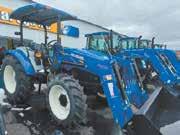
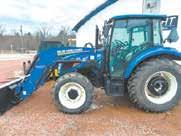
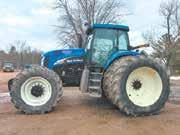

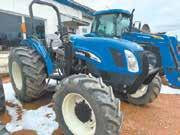
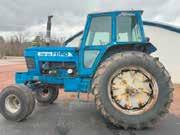


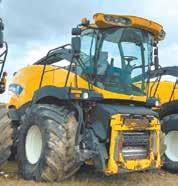



fers working nights, with a shift that usually runs from 7 p.m. to 7 a.m. or longer.
“You’d think running nights would be boring, but it’s relaxing, and there is not as much trafc,” Swart said. “Lately, the sunrises and the sunsets have been really pretty, and when driving overnight, I see a lot of shooting stars.”
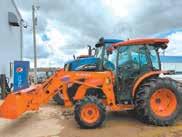


Dairy Star • Saturday, April 13, 2024 • Page 7 715.223.2374 107827 County Rd N Colby, WI 54421 www.cherokeegarage.com NEW New Holland Workmaster 75 4WD, Rops, Loader $3,250 in Rebates Available 0 % Financing Available Used 2022 New Holland Powerstar 75 Cab, Heat, A/C, Loader, 4WD, 850 Hours Sale Price $47,500 Used – 2003 New Holland TG285 Cab, Heat, A/C, Powershift, 4WD Local Trade, Clean Unit $78,000 Used –1994 Agco 9655 Cab, Heat, A/C, 4WD, 18 Speed Powershift, 3 Remotes, 6230 Hours Sale Price $36,500 Used - 2020 Kubota MX6000 Cab, Heat, A/C, Loader, Hrs 66, Excellent condition $ 42,500 Used - 2008 New Holland TN70A 4WD, Rops, 810TL Loader, Powershuttle, Ready to Work! Sale Price $27,000 Used 1979 Ford TW10 2WD, Cab, Heat, A/C $17,500 Used 2014 New Holland FR850 380FPA Hayhead, 750BFI 10 Row Cornhead 3565 Engine Hrs, 2702 Cutterhead Hrs Completely field ready. Sale Price $183,000 Used 2011 Kuhn 900 Merge Maxx 2 In Stock $39,800 each Used New Holland DB313R 13’ Cutting Width, Rubber Rolls, Starting at $25,000 Used Kuhn FC883 & FC313 2 Pairs Available Choice $25,000 Used New Holland DB316R 16’ Cutting Width, Rubber Rolls, Excellent Condition $27,500
HAND! ON
ON
Con nued from SWART | Page 6
MARK KLAPHAKE/DAIRY STAR
Tanner Rohner washes his truck and trailer a er unloading milk April 3 at AMPI in Paynesville, Minnesota. Rohner started hauling milk last year.
have mastitis, the milk took on a colostrum-like consistency. When milk conductivity caused the affected cows to be pulled out for examination, fevers ranging from 103-106 degrees were noted.
Farms saw nearly 10% of their herds being affected, Poulsen said, causing a signicant drop in overall production, with the production of affected cows dropping up to 30%.
The rate of incidence was fast, Poulsen said, with most cows exhibiting symptoms within four to six days of the initial cow. New cases in the herds typically tailed off by days 1012.
As common ailments were ruled out, farmers and their teams of animal health specialists began searching to nd answers.
Concurrently, the Minnesota Board of Animal Health announced March 20 that a young goat had tested positive for HPAI, the rst instance of a U.S. domestic ruminant contracting the virus. That goat resided on a property where a backyard poultry ock had been depopulated due to HPAI in February. The goats and poultry shared access to the same water source.
Meanwhile, affected farms in the Southwest began reporting dead birds on their properties. Additional testing commenced March 22. The U.S. Department of Agriculture’s Animal and Plant Health Inspection Service issued a press release March 25 conrming that cows on dairies in Texas and Kansas had tested positive for HPAI.
Based on those tests, wild mi-

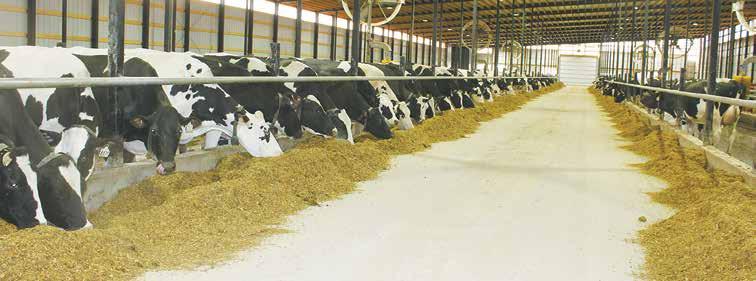
gratory birds were believed to be the source of the HPAI infection in dairy cattle.
“Cows aren’t dying,” Poulsen said. “We are not seeing the same thing we see in domesticated poultry. They are getting sick, decreasing in their milk production. Like any disease, though, as the affected cows have returned to milk, their lactation curves are typically muted.”
Poulsen said it is important to remember that so far, the incidence of disease is limited in the population of dairy cattle being affected.
“We don’t see it in transition cows or fresh heifers, replacement youngstock or steers,” Poulsen said. “We haven’t noted it in any of our beef or cow-calf populations in any state. So, what is different about those cows?


Why are we seeing clinical signs in those cows that go off feed and drop in milk? That is yet to be determined. It is odd, because typically when you talk about disease incidence and prevention, we focus on transition cows and youngstock.”
The Centers for Disease Control and USDA continue to assure people the health risk to the general public remains low. However, the CDC conrmed April 1 that a dairy farm worker in Texas exhibited symptoms of conjunctivitis, testing positive for HPAI after having contact with infected cows.
Poulsen reiterated that the risk to public health is low.
“All dairy producers need to know this: All pasteurized milk and cooked meat are safe for consump-
tion,” Poulsen said. “There is no reason for the consuming public not to trust the safety and wholesomeness of their food supply.”
Poulsen said that the biology of this strain of inuenza is not new.
“This is the circulating strain of inuenza we watched in Europe in early 2020,” he said. “In 2022, it made its way through the migratory bird population through North America, down into South America and back. We’re still seeing this in our wildlife population. So far, it’s been the worst foreign animal disease in U.S. history, because we have depopulated close to 100 million birds.”
This is not the rst time mammals have been affected by HPAI. Over 130 different mammalian species have been affected.
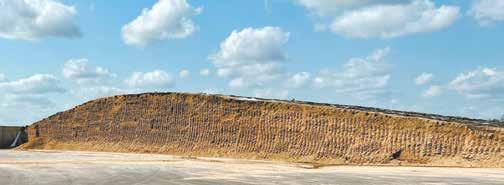





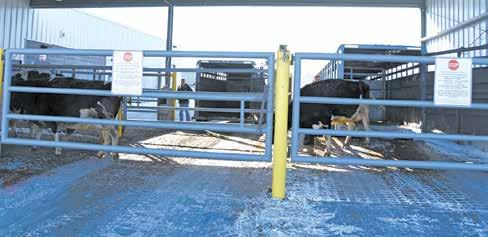
Page 8 • Dairy Star • Saturday, April 13, 2024 Lake Lillian, MN 1-800-THE-SILO CONTACT YOUR LOCAL DEALER TODAY! IOWA Post Equipment 712-476-4500 WISCONSIN Dorner Equipment Green Bay • 920-655-3215 St. Joseph Equipment Lacrosse • 608-769-7796 Swiderski Equipment Wausau • 715-551-7893 Ritchie Equipment Cobb • 608-623-2331 easyrakefacer.com SILAGE FACER www.easyrakefacer.com SILAGE FACER www.easyrakefacer.com PATENT #7,588,203, #8,011,608, #8,336,795 NO MOVING PARTS MAINTAIN CUT LENGTH STAY IN THE HEATED CAB CALL FOR YOUR ALL DEMO TODAY TOP PRICES PAID & CONTRACTING AVAILABLE Your Market For: Holstein Steers • Fed Dairy Cows • Lean Dairy Cows Your local area buyer for MN, IA and WI. Long Prairie Buying Station Bruce Belter • 507-429-0359 Holstein Steers • Lean Cows • Bulls • Fed Cows Tyrel Lembke • 877-300-9298 Long Prairie, MN Lean Cows • Bulls Dean Derricks • 920-655-4730 Green Bay, WI Holstein Steers • Fed Cows • Lean Cows Chad McQuade • 605-668-4275 Yankton, SD Lean Cows • Bulls Mike Baczwaski • 800-445-0042 Gibbon, NE Fed Cows • Lean Cows • Bulls Cody Ritter • 320-293-5212 • 320-732-8358 Long Prairie, MN Green Bay Dressed Beef
Con nued from HPIA | Page 1
|
9
Turn to HPIA
Page
DANIELLE NAUMAN/DAIRY STAR
Holstein cows eat a total mixed ra on on a Wisconsin dairy farm. While no cases of the highly pathogenic avian inuenza have been detected in Wisconsin, as of April 9, there are 17 conrmed cases in six U.S. states.
“Most of our affected mammalian species are what we consider mesocarnivores, or scavenging carnivores,” Poulsen said. “They are eating dead birds, animals like cats and some hunting dogs in Nebraska. Right now, we’re talking about affected sea mammal populations that are scavenging dead birds in Washington. It’s a little different than our ruminant species; this is a new manifestation of the virus.”
Poulsen said the question to be answered is how the cows became affected and how the virus is transmitted.
“Cows don’t scavenge dead birds; they are herbivores,” Poulsen said. “It made us wonder if birds were the primary source. The topography in the panhandle of Texas is quite different than Wisconsin. It’s a desert, and the water sources are often shared by migratory birds.”
Following the movement of lactating dairy cattle from Texas and Kansas to herds in Michigan and Idaho, cow-to-cow transmission was noted.
“We’re still working (on) how that happened,” Poulsen said. “We know testing milk samples is a good way to identify it. We’re looking at if it could have been manure or urine, but the jury is still out. In people, we tend to spread u by aerosolization or coughing, but we know most animals don’t have respiratory disease.”
Poulsen said that in Wisconsin, migratory bird populations are monitored. The virus has been detected both last fall and this spring. He said that the virus is referred to as an enveloped ribonucleic acid virus, meaning it thrives in cold, wet weather.
The warm, dry weather in February and early March caused most of the migratory birds to move through the area quickly, although the migration is not yet over.
“Last fall was different,” Poulsen said. “It was warm, and due to the drought, the harvest was late. So, we saw migratory birds staying and comingling, because there was a lot of food available for them. We saw domestic poultry affected last fall, and we just nished the cleaning and sanitation earlier this year.”
As of April 2, Poulsen conrmed that no known cases of HPAI are present in Wisconsin. He urged farmers to be vigilant and bring concerns to their herd veterinarians immediately.
“If you see animals that present the symptoms of decreased feed intake and rumination, production drops, change in the appearance of milk or fevers, contact your veterinarian,” Poulsen said. “Those animals can be reviewed to see if they meet the criteria for testing.”
Poulsen said if a farm has animals that meet the case denition, the USDA will pay for testing up to 20 animals. That testing can be done by any accredited veterinarian.
“While HPAI is reportable, in Wisconsin and many other states, it is not actionable,” Poulsen said. “We shouldn’t be concerned about any quarantine, control zones or depopulation on these farms at this time. There is no indication for that at this time.”
Implementing biosecurity plays a vital role in protecting a dairy farm, Poulsen said.
“Many dairy producers ship calves to warm, dry climates because it is more efcient and cost-effective for health and productivity reasons,” Poulsen said. “We move cattle all over the country to be more efcient. That does institute risk, but we have a signicant infrastructure to diagnose and manage that risk. It’s not perfect, but it is pretty good.”
Poulsen recommends dairy farmers use the American Association of Bovine Practitioner’s guidelines for implementing biosecurity measures. That includes simple measures such as boot washes and increased sanitation. Others, such as quarantining new animals on the farm for 14-21 days, can be challenging.
“That is really hard to do on dairies, having facilities dedicated only to quarantining animals,” Poulsen said. “Dairy farmers should ask their veterinarians to go through those biosecurity protocols with them to see what they can do to safeguard and mitigate risk for any disease. Some things are going to be long-term plans. We need to think of the return on investment and the cost for biosecurity essentially as an insurance plan.”




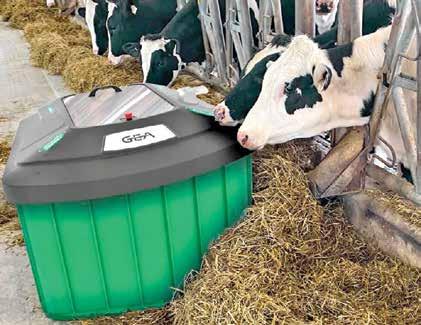
The GEA RoboRebel refuses to conform to the past and is pushing a new path forward.
The RoboRebel rotating belt can handle a variety of feed piles. The smart sensor determines the load on the belt and adjusts the path of the robot automatically. When a large pile is detected, it turns into the pile and forces the feed towards the animal.
Working around the barn 24/7, you can be sure it is doing its job of providing your cows with optimal access to feed any time of the day and night.
Improved work efficiency
Better access to the feed
Efficient feed push-up can contribute to the reduction of refusals.
Improved animal health
Frequent feed pushing is beneficial on hoof health. Keeping feed within reach lowers the pressure on their front hooves and necks.
Improved milk production
Better bottom line
By keeping feed pushed towards the feed fence animals have access to feed and can increase dry matter intake.
Dairy Star • Saturday, April 13, 2024 • Page 9 NELSON’S AGRI STRUCTURES Dean Nelson • Central and Northern Minnesota • Grove City, MN • 320-857-2633, Cell 320-699-3297 RIVERSIDE HOOP BARNS, INC. US Hwy. 75 At IA/MN Stateline • Steen, MN • 507-392-2870 • Fred A. Tilstra & Sons THE NO COMPROMISE FABRIC STRUCTURE DAIRY, MACHINERY & HAY STORAGE Commercial Agri Buildings Single and Truss Arch available from 20’-120’ wide Flo-Coat® Galvanized Steel Tubing Supplied by Allied Tube & Conduit Heaviest gauge steel in the industry Pre-engineered truss buildings ASK US ABOUT GOVERNMENT FUNDING FOR HAY STORAGE WE ALSO SELL REPLACEMENT TARPS! LAKESIDE HOOP STRUCTURES, LLC Eastern Minnesota and Wisconsin • Harris, MN • 651-248-6302 • Craig Moline Call 320-352-6303 to place your classied OR mail to: Dairy Star, 522 Sinclair Lewis Ave., Sauk Centre, MN 56378 OR e-mail to: nancy.p@dairystar.com
the
times you want, the same way every time and without having to worry about it getting done.
After feed distribution, the RoboRebel pushes the feed towards the feed fence,
number of
Con nued from HPIA | Page 8
PROTECT AGAINST SLIPS & FALLS
• Traction in all directions
• Reduce animal stress
• Aids in heat detection
• Cost effective & practical





Human case of HPAI reported

We offer grooving & scarifying
CALL TODAY!
www.bestfootingconcretegrooving.com
Tell the advertisers you saw their ad in the Dairy Star!
A dairy worker in Texas has tested positive for highly pathogenic avian inuenza. The Centers for Disease Control and Prevention said the case is relatively mild with the only symptom being a case of pink eye. The patient was treated with u medication and told to isolate. This is only the second person to be diagnosed with this subset of avian inuenza, with the rst case being in Colorado two years ago. This would be the rst time HPAI jumped from birds to cattle to people. According to an agency news release, “This infection does not change the H5N1 bird u human health risk assessment for the U.S. general public, which the CDC considers to be low.”
No impact to human health or the milk supply

national milk price,” Schmidt said. “Because the vast majority of our milk goes to cheese and cheese is the low market price right now, our average milk price in the Midwest is not close to the national average milk price. Our dairy farmers are telling us DMC isn’t providing the support that they had typically come to expect.” DMC payments kick in when margins are at $9.50 per hundredweight or less. Due to increased costs, Schmidt said that the margin should increase to $10 cwt. AMPI would like to see changes to the DMC program when the farm bill is completed. Schmidt remains hopeful that a farm bill will pass this year, but her optimism is cooling with it being an election year.
By Don Wick Columnist Ag Insider
Attorney general gains protections for dairy farm employees during litigation

After the U.S. Department of Agriculture conrmed the presence of HPAI in a small number of dairy herds, the National Milk Producers Federation executive vice president of communications and industry relations Alan Bjerga was quick to assure the dairy industry. “We’re not seeing disruptions in milk supply or an animal health crisis, but we’re keeping an eye on it because it’s something new,” Bjerga said.
No long-term impact on dairy cattle

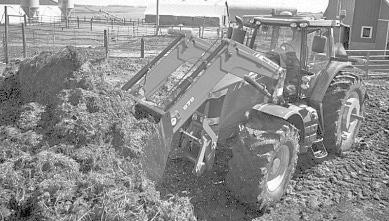
The HPAI cases in Texas and Kansas dairy herds will not have a signicant impact on milk prices. “If you look at the numbers, we look at this maybe impacting milk production by 1%-1.5% over some period of time,” said Mike North, principle, Ever.Ag. “There’s not going to be this big lightning bolt; it’s not going to be like the stories we heard about large chicken ocks with avian u euthanized.” North, who is also a past president of the Dairy Business Association, said dairy cows may exhibit u-like symptoms for two or three weeks. Once it’s done, production returns to normal. “Milk quality returns to normal and safety is never a problem through that entire period,” North said.
MN House ag committee update on HPAI
The Minnesota House agriculture committee heard an update on HPAI after the virus has infected dairy cattle, goats and one human. Minnesota Board of Animal Health executive director Dr. Brian Hoefs said their agency is working with other agencies and organizations to form protocols for mitigating risk to livestock and caretakers. Hoefs said those handling raw milk should wear personal protective equipment. “I grew up on a dairy farm,” Hoefs said. “We dipped a pitcher in the milk for breakfast every morning. Not a good idea in light of this information.” Pasteurized milk is safe to handle and consume.
Additional scrutiny for large dairy farms
A bill that triggers a full environmental impact statement for farms with more than 10,000 animal units was reviewed in the Minnesota House environment and natural resources committee. Minnesota Farmers Union president Gary Wertish testied in favor of this bill. “Our members do have questions about what a natural disaster, emerging animal disease, a human disease that affects workers or other disruptions would mean for such a large operation,” Wertish said. “I think more about the social and economic effects that are more fully addressed with an EIS.” Daryn McBeth represented the Minnesota Milk Producers Association, speaking against this bill. McBeth described the current environmental regulations as robust and a mandatory EIS would just add cost and time to any project. “To say to a dairy enterprise from another state or western Minnesota that has seen its share of dairy expansion in the last 20 years that you’re not welcome in Minnesota would be sending the wrong message at a time when our farmer-owned dairy processing plants are already struggling,” McBeth said. The bill was held over for possible inclusion in an omnibus later in the session.
Adjustments sought in DMC calculation
USDA’s Dairy Margin Coverage triggers a payment for participating farmers when the difference between the all-milk price and the average feed price falls below a certain level. DMC was triggered in 11 of the 12 months in 2023. Associated Milk Producers Inc. vice president of marketing Sarah Schmidt said the risk management program was working as intended. “That said, the calculation for that program uses a
The Minnesota Attorney General’s Ofce has reached a temporary injunction with Evergreen Acres Dairy in Paynesville. With this announcement, employees at ve facilities in Stearns County and one in Redwood County will be paid while legal action continues. The Minnesota Attorney General’s Ofce sued the dairy farm in January for failing to pay workers and charging rent for poor quality housing.
Bongards releases earnings
Bongards reported 2023 earnings of $29.5 million on sales of $822 million. Patronage earnings of $19.7 million resulted in a 20% cash payment to members of 26 cents per hundredweight. In addition, Bongards will revolve the remaining half of the 2013 equity in the amount of $4 million. Checks will be made before Aug. 1.
Milk output increases
Milk production in the 24 major dairy states totaled 17.4 billion pounds in February. That’s up 2.4% from one year ago. In Minnesota, milk cow numbers dropped 7,000 head in the past year, but milk production rose 1.5%. South Dakota had the biggest increase in milk production, up 14.8%. That was helped by the addition of 19,000 cows to the state’s dairy herd.
Climate-Smart program pays eco-friendly farmers
The USDA is rewarding farmers for adopting climate-smart agricultural practices. At the Central Plains Dairy Expo in Sioux Falls, South Dakota, Minnesota Milk Producers Association CEO Lucas Sjostrom said Midwest dairy farms are eligible for these funds. “We have $50 million available for farmers in the Upper Midwest,” he said. Details for eligibility are being negotiated.
Alfalfa variety selection should not be ignored
Insects and diseases continue to evolve. According to Land O’Lakes Inc. alfalfa and forage specialist
Jeff Jackson, seed treatments and new chemistries can help, but variety selection also has a role. “If you’re not paying attention to variety selection and nding the varieties that will work best in your soil type, it can be a pitfall to getting a stand established,” Jackson said.
WDE recognition announced
World Dairy Expo has announced its 2024 award winners. Jim Barmore, Marty Faldet and King Hickman of GPS Dairy Consulting LLC in Lakewood, Minnesota, are being recognized as the Industry People of the Year. Former Semex CEO Paul Larmer, of Guelph, Ontario, is being honored as the International Person of the Year. Larson Acres Inc., which milk 2,800 cows at Evansville, Wisconsin, is home to the Dairy Producers of the Year. The award ceremony will be Oct. 2.
Trivia challenge
The average retail price for a gallon of whole milk was $4.01 in 2023. That answers our last trivia question. For this week’s trivia, what are the ofcial colors of FFA? We will have the answer in our next edition of Dairy Star.
Don Wick is owner/broadcaster for the Red River Farm Network of Grand Forks, North Dakota. Wick has been recognized as the National Farm Broadcaster of the Year and served as president of the National Association of Farm Broadcasting. Don and his wife, Kolleen, have two sons, Tony and Sam, and ve grandchildren, Aiden, Piper, Adrienne, Aurora and Sterling.
Page 10 • Dairy Star • Saturday, April 13, 2024 REISERIMPLEMENT Waukon,IA 563-568-4526 AfterHours: Ken563-380-3137•Dave563-380-8680 www.reiserimpl.com CHECKOUTTHE 7700SERIES Used Equipment PLANTING/TILLAGE MISCELLANEOUS TRACTORS ‘20 Kinze 3660, 16R30, bulk fill ‘12 CIH 1250, 16R30, bulk fill ‘97 Kinze 2600, 31R15” DMI 530B Disc Ripper CIH MRX690, 5 shank disc ripper disc JD 980 Field Cult., 44’ w/harrow CIH 4800 30’ Field Cult, w/3 bar coil tine harrow BUILT TO KEEP GOING. BECAUSE A FARM NEVER SLEEPS. Kory 185 Gravity Box, 250 bu w/gear Brent 640 Gravity Box Loftness 20’ Stalk Shredder, NICE!! ‘08 AGCO 3000 corn head, 8R30, poly JD 146 loader w/bucket Skid Loaders HAY & FORAGE ‘14 MF 9770 SP, w/9196 double conditioning rolls, 1,200 hrs Hesston 565A Round Baler ‘20 MF 3983 Hicap Rake, 12 wheel ‘19 Kuhn GA7501 Rotary Rake ‘22 MF 1393, 13’ Disc/Mow Cond. ‘16 Pottinger NovaCat Triple Mower w/rolls ‘17 JD 835 9’ MoCo, center pivot JD 946, hyd. swing, rubber rolls ‘14 CIH DC112 Disc Mow/Cond. Gehl 2450, 15’ hydro swing JD MX7 3PT Brush Mower Patz Bale Chopper ‘21 Rhino 3150-15’ Batwing Mower ‘00 MF 6270, MFWD, loader ‘21 MF 2850, CAH, hydro, loader, ONLY 139 HOURS! IH 966, 9,000 hrs. MF GC2400, 60” deck, 500 hrs. MF GC2400, 60” deck, 600 hrs. ‘21 MF GC1723, ldr., mower, 180 hrs. ‘18 MF 1705, 60” deck, 200 hrs. MF 285 w/MF loader ‘22 JD 3039R, CAH w/JD loader, 148 hrs. Farmall H ‘11 MF 8947 Telehandler, 3,000 hrs. ‘18 Bobcat 3400 SideXSide, C/H, 6,700 hrs. ‘16 Bobcat E50, long arm, thumb, 1,510 hrs. ‘18 Bobcat E50 long arm, 700 hrs. ‘20 Bobcat V923 Telehandler, 1,100 hrs. ‘15 Bobcat T870, SJC, highflow, 1,700 hrs. ‘22 Bobcat T770, 200 hrs. ‘20 Bobcat T770, 240 hrs. ‘21 Bobcat T770, highflow, 958 hrs. ‘19 Bobcat T770, SJC, 500 hrs. ‘20 Bobcat T770, CAH, highflow, SJC, 765 hrs. ‘20 Bobcat T770, SJC, 300 hrs. ‘18 Bobcat T770, SJC, 2,400 hrs. ‘14 Bobcat S770, 3,200 hrs. ‘18 Bobcat T770, A91, highflow, SJC, 2,000 hrs. ‘07 Bobcat T300, CAH, 1,900 hrs. ‘12 Bobcat S650, 9,000 hrs. ‘16 Bobcat S590, 3,900 hrs. ‘20 Bobcat S570, 2900 hrs. ‘19 Bobcat S570, CAH, SJC, 2,100 hrs. ‘14 Bobcat S570, ACS, CAH, 4,800 hrs. ‘13 Bobcat S570, CAH, 3,400 hrs. ‘15 Bobcat T550, ACS, Open Station, 1,855 hrs. ‘02 Bobcat S300 ‘20 Gehl R220, 1,000 hrs. ‘15 Gehl R190, 1,900 hrs. ‘04 Deere 250 Series II, 5,000 hrs. ‘13 Mustang RT2100 track ldr. 3,000 hrs ‘23 NH L318, C&H, 1,400 hrs. ‘21 Bobcat S76, SJC, 1,500 hrs. ‘20 Bobcat S76, 233 hrs. ‘22 Bobcat S64, 4,100 hrs. ‘21 Bobcat T76, SJC, 600 hrs. ‘21 Bobcat S76, CAH, SJC, 1,800 hrs. Bobcat T76 ‘23 Bobcat T64, CAH, 13 Hours! ‘21 Bobcat T64, 577 hrs. ‘22 Bobcat S64, SJC, 4,100 hrs. ‘21 Bobcat 564, foot, 2,900 hrs. ‘21 Bobcat S64, SJC, 2,700 hrs. ‘19 Bobcat E26 Mini Ex, OS, 700 hrs.
BEST FOOTING CONCRETE GROOVING Strum, WI 715-579-0531
Hey!
Sign-up for Dairy Margin Coverage ends April 29
Polzin encourages producers to protect against market surprises
By Stacey Smart stacey.s@dairystar.com
MADISON, Wis. — Enrollment in the Dairy Margin Coverage program typically takes place in the fall.
Without the passing of a farm bill last year, DMC received an extension and enrollment was pushed back to the new year.
April 29 is the last day that farmers can sign up for the DMC program at a Farm Service Agency ofce.
“When you enroll for 2024, it will retroactively go back to January,” said Leonard Polzin, dairy markets and policy outreach specialist at the University of Wisconsin-Madison Extension. “We did trigger a payment in January and February, and you would receive that.”
During a webinar March 22, Polzin shared details of the program and reasons producers should consider signing up.
“This is a continuation of the previous program that was in place last year, and except for some small tweaks, the program remains the same,” he said. “Coverage levels and premiums have not changed and will continue for another 12-month period. Once a different farm bill goes through, we would
look at changes at that time.”
Polzin said the ease and simplicity of the DMC program makes it compelling to consider.
“It’s not something you have to actively monitor like futures and options,” he said. “The FSA ofce takes care of knowing when payments are triggered and sending off the payments, etc.”
Following the same mechanics as last year, the program is based on the national average milk price, also known as the all-milk price, minus the value of the feed ration, which is the estimated price to produce 100 pounds of milk.
“There is no ration that perfectly ts everybody’s farm,” Polzin said. “The program tries to take the feed equivalent of fat, protein, carbohydrates and energy, and calculate them to nd that ration for 100 pounds of milk.”
When enrolling in the program, Polzin said there are two things to consider: percentage of coverage and coverage level. Farms can insure 5%-95% of their historic production level. Polzin said most people choose the maximum amount. The coverage level ranges from $4-$9.50 per hundredweight of margin coverage, with most people selecting coverage on the higher end.
The rst 5 million pounds of annual production is covered in Tier 1 of the program, and everything greater
Turn to DMC | Page 12
“Troubleshoot issues and analyze all aspects of the dairy.”
What do you like about the Dart program?
ability to customize reports to help analyze the trends on the farm.
Why did you decide to use Dart and how long have you been using it on your dairy? I’ve been using Dart for 13 years. It’s a very user friendly program that we could not only input and manage our cow information but also build reports, graphs, and lists to help troubleshoot issues and analyze all aspects of the dairy.
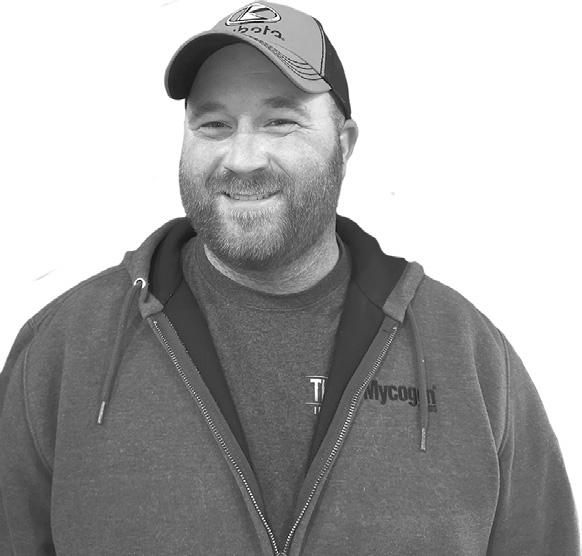
Which Dart features do you use the most? I use Dart for all my animal records, ID, treatments, matings and genetic data, but I probably use the pocket dairy on my phone the most. I can take all the info with my anywhere I go.
What are some other DHIA tests you use? We also use DHIA for Leukosis and Johnes testing.
Tell us about your farm. My wife Robyn and I milk 180 cows with my sister Jocelyn and dad Jim. We raise our own heifers, have a commercial ock of sheep and farm around 350 acres primarily for feeding the livestock.
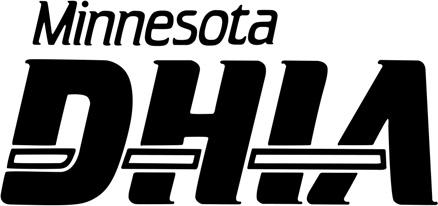
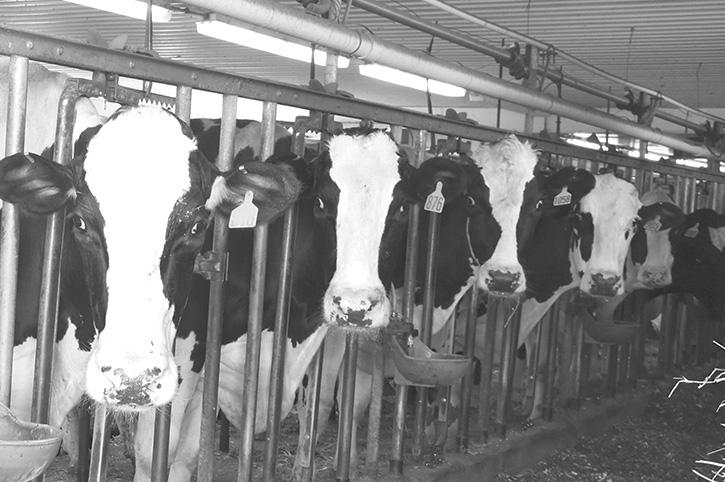





6,700 hrs. .....................$65,000
CIH 8920, 2WD, 7,900 hrs. .....................$59,000
CIH 8920, 2WD, 4,100 hrs ......................$72,000
CIH 8920, FWA, 2,600 hrs ....................$110,000
CIH MX240, 4,700 hrs .............................$85,000
CIH MX220, FWA, 3,600 hrs. ..................$88,000
CIH MX120, 2WD, 3,800 hrs. ..................$72,000
CIH MX120 w/loader ...............................$75,000
CI 7220 w/6500 hrs., 2W ......................Coming In
CIH C90, 4,000 hrs. ..............................Coming In IH 5088, 7,100 hrs. ..................................$26,000
IH 1466 restored, new 20.4x38
Firestones ..............................................$38,000
IH 1486, 6000 hrs. ................................Coming In IH 1456, cab ............................................$22,000
IH 1086, 9,700 hrs. w/ldr. ........................$23,000
IH 1066, no cab .......................................$13,500
IH 1086, 5,000 hrs. ..................................$24,000
IH 686 ......................................................$14,000
TILLAGE
CIH Tigermate II, 26’ ...............................$28,000
CIH Tigermate II 26’ w/rolling basket.......$32,000
CIH Tigermate 200 w/basket, 34’ ............$42,500
CIH
CIH
CIH
CIH
Dairy Star • Saturday, April 13, 2024 • Page 11
Sauk Centre, MN Buffalo,
763.682.1091 www.mndhia.org DHIA: Now MORE than ever
MN
Peter Beck Flying Cow Dairy Princeton, MN • 180 cows
like the
I
Quality Consistency KLC Farms Roasting, Inc. 320-352-3326 Visit www.roastedbeans.com Preferred By Bovines Everywhere Get your cows attention • Energy • Protein • Amino acids • Bypass protein Protein Feed them KLC Roasted Soybeans! GREENWALD FARM CENTER FARM Greenwald, MN • 320-987-3177 WWW.GREENWALDFARMCENTER.COM Twine, Wrap & Net Wrap IN STOCK! GREAT SELECTION OF USED GRAVITY BOXES ON HAND! CIH 527B .................................................$17,500 CIH 530C Ripper, nice.............................$38,000 JD 2700 5-shank ripper ...........................$17,000 DMI Tigermare 26’ field cultivator ............$16,000 DMI 900 ripper ................................................Call DMI 530B lead shank ..............................$16,500 Glencoe 7400 8-shank disc chisel .............$9,000 HAYING & FORAGE EQUIP. Sitrex QR12, QR10, QRS rakes ....................New Many sizes of rakes available All Sizes of Sitrex Rakes ........................On Hand GRAVITY BOXES & GRAIN CARTS Many Sizes of Gravity Boxes...................on Hand Demco 450 ..............................................$12,500 Demco 550 ..............................................$14,500 Brent 657 gravity box, green & black.......$23,000 Brent 644, green ......................................$17,500 Brent 644, tarp & fenders ........................$21,000 J&M 540 box, red ....................................$13,500 J&M Green 385 gravity boxes ...................$5,000 J&M 385, red .............................................$5,000 Killbros 387 ................................................$9,000 MISCELLANEOUS New Red Devil 8’ Snowblowers.............On Hand Brillion XL32 32’ packer ...........................$36,000 H&S 3137 370 bu. manure spdr ..............$23,000 USED TRACTORS CIH 9330, FWD, PTO, 3 pt., 2,800 hrs. .$125,000 CIH 8940, FWA, 1,800 hrs. ..................Coming In CIH 8920, 2WD, 3,500 hrs ......................$84,000 CIH 8920, 2WD,
Tigermate 200, 28’ w/rolling basket..$40,000
Tigermate 200 28’ w/basket .............$37,000
RMX 340 28’ w/mulcher ...................$44,000
Various Sizes of Rock Wagons On Hand Mandako Land Rollers All Sizes DO YOU HAVE AN UPCOMING AUCTION? Advertise It In The Call (320) 352-6303 for more information. DAIRY ST R★
3800 16’ disc ......................................$9,500
than that is covered in Tier 2. The margin coverage level for Tier 1 ranges from $4-$9.50 cwt, while Tier 2 ranges from $4-$8. Premiums are 0-15 cents cwt for Tier 1 and $0-$1.813 for Tier 2.
“The price is a fairly good deal for producers,” Polzin said. “When you compare the cost per hundredweight of DMC versus other products, it is quite cost competitive, especially in that rst 5 million pounds of production.”
Polzin encouraged dairy farmers to use the DMC decision tool at dmc.dairymarkets.org to determine premiums and payments.
“Make sure you select the appropriate year, 2024, in the top left corner when using this site,” Polzin said.
The most signicant change to the DMC program is the way that historic production is stated in sign-ups. Prior to this year, previous production history and supplemental production history were both listed. This year, the two have been combined and are being called DMC production history.
FSA has revised regulations to allow eligible operations to make a one-time adjustment to established production history. This adjustment combines previously established supplemental production history with DMC production history for farms participating in Supplemental DMC during a prior coverage year.
“It’s possible to include new supplemental history that you have not previously included by talking to someone at your FSA ofce,” Polzin said.
About 75%, or 17,000, of dairy operations in the U.S. enrolled in the DMC program in 2023 and received nearly $1.3 billion in payments, averaging $75,753 per operation.
“We’re probably going to hit that again this
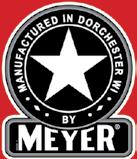
year,” Polzin said. “We’re very close to 100% participation in Wisconsin for dairies with established production history if you take out farmers who don’t sign up based on religious reasons. There is big utilization of the program, and we’re seeing quite a bit of benet to producers when we come across years that are not so positive in margin.”
Polzin said Wisconsin, New York, Pennsylvania and California are major utilizers of Tier 1 coverage with substantial pounds enrolled in the program.
The all-milk price is hovering around the $20 mark, but feed costs have come down quite a bit, Polzin said. Corn has dropped off recently, and soybean meal is coming down as well, bringing relief to feed costs.
The current forecasted period is not showing any DMC payment triggers, and farmers have asked Polzin why they should sign up in 2024.
“We’ve seen corn prices fairly low in the past, but there is no guarantee they’re going to keep going down,” Polzin said. “They could very well come back up again too. If milk prices continue to have additional down pressure, then it’s not unrealistic to have payments triggered over the next 12 months.”
When looking at the forecast in recent enrollment periods, Polzin said it was not uncommon for a portion of the year to look like it would not generate many payments, but as time went along, a lot of payments were made. This happened in 2023.
“It’s really hard to be bullish on price when we have so much production capacity coming online in the U.S. at the moment,” Polzin said.
Between now and the rst part of 2026, over $7 billion in production is slated to come online in dairy processing capacity. Tight demand and less-
than-favorable exports give Polzin reason to believe the industry could see price pressure that will weigh negatively on milk prices.
“The price has been holding fairly steady recently, and while it’s better than 2023, it is not a resoundingly strong milk price,” Polzin said. “To say that we’re out of the bottom for the dairy price cycle with only good news going forward is a tough claim to make.”
Polzin said the market response has been on the supply side, as production remains strong despite shrinking cow numbers.
“Until we see a response on the demand side come back fairly strong, it is a big ask of the market to deliver high prices, especially at Class III to hold us at good margins for a period of time,” Polzin said. “There are enough unknowns at the moment to warrant signing up for DMC.”



CONVENTIONAL SEED CORN SALE
Great price on worlds top hybrids. Non GMO grain is earning market premiums (up to $2 over CBOT). We offer proven, complete weed control programs for less than technology cost!
Maximize returns and IMPROVE YOUR BOTTOM LINE!
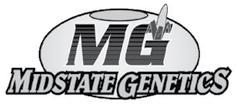

ORDER EARLY AND SAVE MORE!


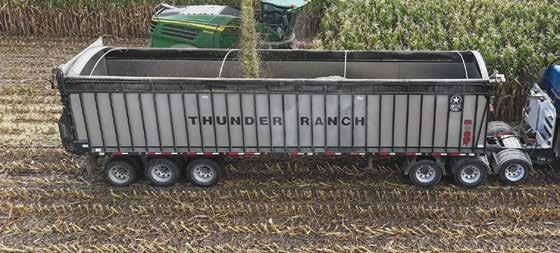

















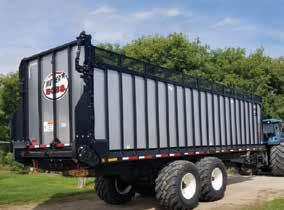




Page 12 • Dairy Star • Saturday, April 13, 2024 BOSS RT • 18 TO 40 FOOT MODELS • 8’ 1” INSIDE WIDTH FATBOY RT • 26, 30, 36 FOOT MODELS • 9’7” INSIDE WIDTH MEYER MANUFACTURING CORP. DORCHESTER, WI • 800-325-9103 MEYERMFG.COM BIG TIME! DORCHE MEYER IS YOUR ONE-STOP SHOP FOR FORAGE TRANSPORTATION. OUR XL VERSIONS HAUL BIG LOADS FOR BIG PRODUCTIVITY! O N. P N INDUSTRY-LEADING FEATURES! SIZES UP TO 2,500 CUBIC FEET! 9140RT 9130RT 1036RT MINNESOTA A & C Farm Service, Inc. (TMR Mixer Dealer) Paynesville, MN Fluegge’s Ag, Inc. Mora, MN Gorter’s Clay & Dairy Equip. Pipestone, MN Hammell Equipment Inc. Chat eld, MN Eitzen, MN Harmony, MN Rushford, MN Midwest Machinery Co. (Full Line) Caledonia, MN Princeton, MN Glencoe, MN Wanamingo, MN Glenwood, MN Howard Lake, MN Midwest Machinery Co. (Forage Boxes Only) Alexandria, MN Sauk Centre, MN Schlauderaff Implement Co. Litch eld, MN Werner Implement Co., Inc. Vermillion, MN Wingert Sales & Service Plainview, MN IOWA K&A Farm Equipment, Inc. Strawberry Point, IA Scherrman’s Implement Dyersville, IA Monticello, IA SOUTH DAKOTA Pfeifer Implement Co. Sioux Falls, SD Tractor Central Arcadia, WI Cameron, WI Chippewa Falls, WI Durand, WI Granton, WI Menomonie, WI Mondovi, WI Sheldon, WI West Salem, WI Westby, WI WISCONSIN Hupf’s Repair Center Beaver Dam, WI Johnson Tractor, Inc. Janesville, WI Luxemburg Moter Company Luxemburg, WI Midwest Machinery Co.(Full Line) Osceola, WI CALL OR SEE YOUR LOCAL DEALER FOR COMPLETE DETAILS!
Con nued from DMC | Page 11
A BETTER BOTTOM LINE!”
“FOR
DEALER INQUIRES WELCOMED
320-237-7667 KLEENACRES.com
Dairy farmers are under attack by the National Milk Producers Federation
Thomas L. Olson, Black River Falls, Wisconsin
The National Milk Producers Federation has a National Dairy FARM Environmental Stewardship program.
This program is designed to lower greenhouse gas emissions from dairy cattle. This program is the height of hypocrisy.
According to the Dairy Management Inc. website, the U.S. dairy herd produces 1.3% of the nation’s greenhouse gas emissions. (NMPF provides a link to this information on their website.) The transportation industry produces 28%, according to the U.S. Environmental Protection Agency.
According to a study conducted by Virginia Tech and the U.S. Department of Agriculture, if the U.S. dairy herd was somehow removed, it would only lower greenhouse gas emissions by 0.7%.
If you are confused, you are not alone.
The NMPF website contains many pages about their different programs, so it is easy to research their ideas.
As dairy farmers, we have survived the FARM program because we had to. Dairy product buyers demanded that we abide by these rules. I am afraid that this National Dairy FARM Environmental Stewardship program will add a very costly economic burden on already struggling dairy farmers.
I urge each and every one of you to get ahead of this mess and tell your raw milk handler that we, the dairy producer, do not want this mandated on our dairy farm. The raw milk handler needs to make clear to the nished product buyer that they will not mandate this program on dairy farms. The nished product buyer needs to go to the NMPF website so they can see for themselves the hypocrisy.
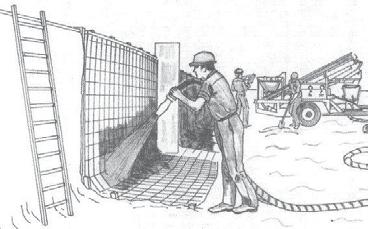



















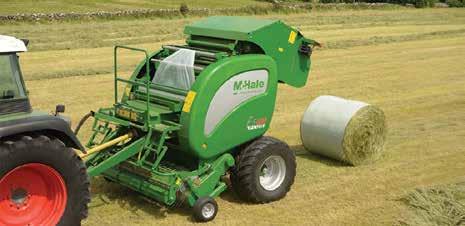
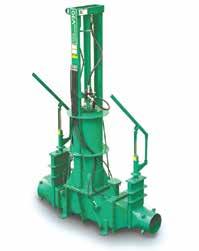



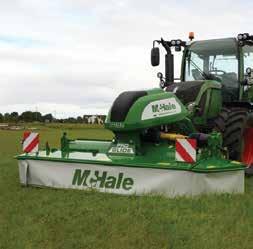


Dairy Star • Saturday, April 13, 2024 • Page 13 Learn more at edneyco.com | 888.443.3639 Designed with the demands of today’s Farmers & Contractors in mind to deliver the highest output and reliability. Balers, Hay Rakes, Mowers, and Much More! Hay Production Equipment R O T O T I L L E R COMMITMENT • QUALITY • DURABILITY • RESULTS Visit www.silverstarmetals.net for details and options on attachments Dealer Inquiries Welcome GET YOUR TILLING DONE WITH SILVER STAR SILVER STAR METALS LLC 715-229-4879 • Skid steer Quick Attach • Heavy Duty 7 gauge deck • Dual Drive Motors • 81” tillage width • Tillage Depth 4-6” • Enclosed Oil Bath THESE QUALITY ATTACHMENTS ALSO AVAILABLE: • Concrete Chuter • Brush Cutter • Roto-Tiller • Pallet Fork • Wood Splitter • Brush Grapple • Dirt Buckets • Driveway Grader • Bale Bedders • Mini Attachments • Trailer Mover • Sk • He • Du • 81” Till SILV WISCONSIN CONCRETE RESTORATION Jetcrete Pneumatically Applied Concrete
Silo Relining
Barn Walls and Basement Resurfacing
Bunker Silo Wall and Deteriorating Barn Walls Restoration
steel
to bunker walls
gauge
•
•
•
Approximately 1” of
reinforced material added
6
heavy duty wire mesh installed SERVING IA, MN, WI, IL AND SD CONTACT: 800-866-7327 • 563-586-2425 AND CELL 563-419-4279
LETTER TO THE EDITOR
FIELD ’S 608-437-5561 Your Material Handling Source Trusted sales and service since 1966 Mt. Horeb, WI FUTURO Enables liquid manure from a free stall barn to be transferred underground to a long-term storage Futuro with manual inlet and outlet guillotines and fitted with a 16” diameter suction pipe The suction pipe can be installed with the opening facing upwards or downwards, downwards is ideal when the manure is laden with sand. The Futuro is a low energy pump equipped with robust vales. It allows transfer of manure containing a small amount of bedding, such as sawdust, wood chips, chopped straw and sand. The Futuro can be fitted with a hopper to collect manure from a cross-gutter cleaner or skid-steer loader. It can also pump the contents of a reception pit by means of a suction pipe. Dairy manure Freestall barns Maximum consistency - 5” Straw & Hay Sawdust Sand Separated fiber * Mandatory to have air risers in the evacuation line
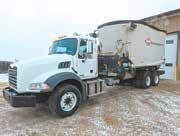




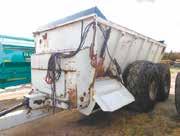

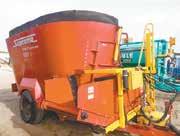
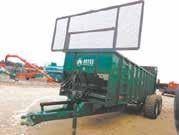
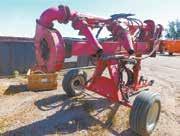
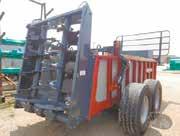
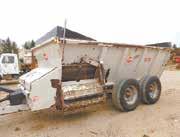

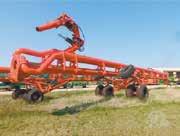
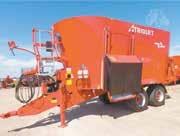


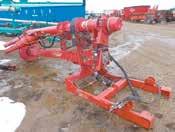









Page 14 • Dairy Star • Saturday, April 13, 2024 SAUK CENTRE, OFF I-94 ON THE CORNER OF HWY. 28 & 71 SOUTH We Have Equipment Coming out of our ears! 2017 Penta 9630HD #22133 - $72,500 New Nuhn 0738 Call 2010 Houle EL48-6D6100 #2384 - $59,900 Kuhn Knight 8150 #2284 - $59,500 New Fair Mfg 7830TD Call Jamesway 6X8 #2238 - $16,500 Jamesway 117400836 #2288 - $13,900 Artex SBX700 #2385 - $75,900 New Hagedorn HydraSpread Extravert 5290 - Call Hagedorn Hydra-Spread 410 #2407 - $20,900 Haybuster CMF830 #21112 - $49,900 Kuhn Knight SLC126 #2291 - $42,900 2011 Supreme Intl 500T #2268 - $42,500 2018 Penta 8030HD #22140 - $72,500 2020 Hagedorn Hydra-Spread Series II 2277 #2382 - $38,900 2021 Kuhn Knight VTC1120GII, #23130 - $195,000 Meyer 9530 #2351 - $95,900 Trioleit Solomix 2-2800ZKX-T - Call Highline CFR650 Top Gun #23119 - $30,500 NDE 552 LP #2281- $12,500 2018 Artex SB600 #23121 - $49,000 New & Used Ready to go! Ja M i n n e s o ta ’s LargestFeeding and ManureHandli n g D e a rel Ifyouhavea barn, we haveasolution. www.dairylandsupply.com
from our side our side OF THE FENCE THE
How have you continued to increase your role on the farm?
Grace Jeurissen Lester Prairie, Minnesota McLeod County 105 cows
When did you know you wanted to be a farmer, and why are you considering a career in dairy?
During my freshman year of college, I realized how much I missed being involved in the everyday activities on the farm.

I took advantage of the time I spent on the farm prior to that point, so I moved home and went to a two-year agriculture program to take more technical and hands-on farm-related classes. I want to pursue dairy farming because I enjoy the variety of tasks I get to do every day. I love working with cattle and nding ways to be efcient at my job while working toward ensuring success for the future of our family farm.
How have you continued to increase your role on the farm? While in college, I took courses in livestock reproduction, nutrition and did a foot trimming course. I continue to study updated bull proofs and breeding trends. I make most of the breeding selections on the farm. I work fairly independently on the farm, which gives me the choice to decide which task I should prioritize that day.
What is the most enjoyable chore to do on the farm? I enjoy looking through bull books and selecting which cows get bred to which bulls. I like to see what the calves turn out like. I like milking as well, but because of my more limber physical ability, I do most of the freestall work while my parents do most of the milking.
What excites you about the future of the dairy industry? I see potential in the technological advances we have at our ngertips. From cow health to employee and labor management, modern technology helps ease the challenges that come with running the family farm. Farming isn’t an easy occupation. Having ways to free up time gives us the chance to hone in on other areas that need attention.
What challenges do you have as you embark on your career? Farm transitions are a difcult part of every young farmer’s career. Challenges such as varying milk prices and increased cost of inputs, among other things, are a challenge that will always be prevalent. My grandpa dealt with it, my parents dealt with it, and someday, that will be something I manage. Another challenge is the physical demands that come with life on a farm. I’m not the biggest person, so there are tasks I struggle with physically.
Tell us about your farm and your plans for the dairy this year. We milk 105 cows, primarily Holsteins, in a double-12 parallel parlor. We ship to First District Association in Litcheld, Minnesota. We also farm 500 acres. We are 100% family run. I work with my parents every day, and on weekends, when he isn’t at school, my brother, Sam, helps with equipment maintenance and repair. We are putting in new stall mats in the freestall barn and repairing our heifer lot this year. We are looking into purchasing additional bred heifers to ll our barn. I also have rst-generation crossbred calves due toward the end of the year that I’m excited to experiment with.
Deaken Beavins Mahnomen, Minnesota Mahnomen
County
240 cows

When did you know you wanted to be a farmer, and why are you considering a career in dairy? Growing up, I’ve always had a heart for cattle, especially dairy cows. I’ve always been fascinated by the dairy industry and how important milk is in our everyday lives. I’ve had an outstanding work ethic since a young age. During the summer, as a kid, I had a part-time job helping a friend on his farm. I absolutely loved getting in the fresh air, driving tractor and stacking wagons of square bales. As a kid, I went to a lot of farm shows as well as dairy cow shows with my dad. I realized I had a passion for farming at young age.
How have you continued to increase your role on the farm? Over the past eight years that my dad and I have been milking cows, I’ve been taking on more responsibilities. I mix all of the rations every day, keep the bedded packs bedded and occasionally help in the parlor if needed. I also help with the eldwork along with both facility and equipment maintenance. I’ve also invested in a couple pieces of equipment.
What is the most enjoyable chore to do on the farm? I enjoy mixing feed the most, because I like knowing what the intakes are as well as knowing that the cows are getting the correct amount of each commodity and forages to best t their nutrition needs. I also enjoy mixing feed every day, because I know that every bucket of haylage and silage that goes into the mixer was put up with pride and is of high quality.
What excites you about the future of the dairy industry? A few things that excite me about the future of the dairy industry are dairy equipment, dairy genetics and the science behind crop growth, because it all keeps improving.
What challenges do you have as you embark on your career? A few challenges I have are the same challenges every dairyman faces. One of the challenges is hired help. It is hard to nd good and reliable help. Another challenge is the cost of equipment nowadays. The low and inconsistent cost of milk makes it difcult.
Tell us about your farm and your plans for the dairy this year. My dad, Jeff, and I are milking 240 cows in a double-6 parallel parlor. The majority of the herd are Holsteins. We do have a few crossbreds in the herd. Our milk is shipped to Bongards in Perham, Minnesota. Within the next year, we plan to update our milking facility and slightly remodel one of the freestall barns. A while back, we purchased enough Dairymaster monitoring collars to put on the whole herd. My goal is to continue to grow the herd and become more self-sufcient, so I’m not relying as much on hired help.
Riley Pundsack Freeport, Minnesota Stearns County
130 cows
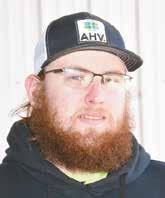
When did you know you wanted to be a farmer, and why are you considering a career in dairy? I knew I wanted to farm at a young age. I liked being outside and working with equipment. There is just something about not having to work for someone else and watching the work you put in show for itself.
How have you continued to increase your role on the farm? I’ve increased my role in the farm by not hiring out as much of the eldwork and doing more of our own. We used to hire out plowing, planting and spraying, pretty much everything. Now, we do most of it on our own. I’ve taken a bigger role on xing day-to-day things like maintenance on the robotic milking systems and farm equipment. I’ve become more involved in calf and cow care. I treat the sick calves, and I also do all the breeding on the farm.
What is the most enjoyable chore to do on the farm? Doing eldwork is one of the most enjoyable things to do on the farm. I really enjoy planting because of the pace and the peacefulness. I like watching what you put in the ground come out and develop into a plant. It’s a nice way to get out and relax most of the time.
What excites you about the future of the dairy industry? Seeing what new technology they come out with to help manage and care for the cows more.
What challenges do you have as you embark on your career? Learning about new ways to manage the animals and utilizing all the new technology that they come out with for milking systems.
Tell us about your farm and your plans for the dairy this year. I farm with my parents, Keith and Roxanne, and we milk around 130 cows with two Lely robotic milking units. Our milk is shipped to First District Association in Litcheld, Minnesota. In the years to come, I would like to expand our heifer facility and hopefully one day put up a calf barn to help keep their environment more controlled for calf health. We may add one or two more robots in the years to come.


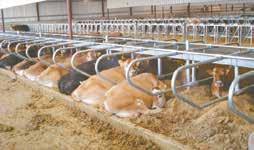
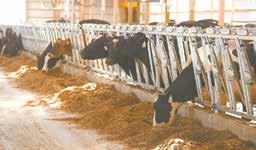
Dairy Star • Saturday, April 13, 2024 • Page 15 Turn to OUR SIDE | Page 16
www.norbco.com 67962 State Hwy 55, Watkins, MN 55389 • 320-764-5000 MA KING COW COMFORT OUR PRIORITY Curtain SystemsVentilation SystemsFreestall SystemsHeadlocks
Anna Butler
Browerville, Minnesota
Todd County
80 cows
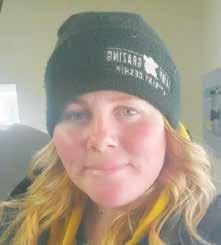
When did you know you wanted to be a farmer, and why are you considering a career in dairy? I knew from a young age I wanted to farm. I was outside any chance I had. I was always helping my brothers with their chores, or they would get me up at 5 a.m. to help them at the neighbor’s farm. I was Dad’s helper. Anytime he would come into the house to ask if someone could come and help, I was the rst to jump up and volunteer. It got me out of the house and out of helping in the house. I considered a career in dairy because I love working with animals, being outside, doing eldwork and being able to continue the family dairy. I honestly don’t think I could ever have a job sitting at a desk somewhere.
How have you continued to increase your role on the farm? I pretty much do just about everything on the farm. There are still a few things I’m learning, but with farming, you are always learning something new every day. I do most of the selecting of bulls we use for A.I. I read up on the different breeds we use and consider which bulls to use on each cow. I look at components, body depth/dairy frame, and feet and legs. I do a lot of the tillage in the spring. I do some planting and cutting of hay, raking and wrapping. I haul manure and help with harvest in the fall. I also help with the maintenance and repair of tractors and machinery as well as the milking equipment. I am also getting into the bookkeeping and record keeping side of the farm.
Malorie Thorson Waverly, Minnesota
Wright County
250 cows

When did you know you wanted to be a farmer, and why are you considering a career in dairy? My love for the dairy industry has always been a prominent part of my personality. Ever since I was little, I have been helping my mom with chores around the farm and enjoying every minute. My love for the industry only grew when I got to share my passion with consumers at the county fair or dairy princess events. My parents saw this and inspired me to always pursue a career that I love and am passionate about. I want to pursue a career in the dairy industry, because I know the impact it makes on consumers and our nation, along with the pride I feel being a part of less than 1% of the population.
How have you continued to increase your role on the farm? I have continued to increase my role on the farm by helping with herd health management. I have mastered the collar monitoring system, implemented vaccinations and herd health practices, and implemented reproductive health protocols.
What is the most enjoyable chore to do on the farm? I love morning milking. I can think about the upcoming day ahead and plan out what needs to get done, so I can set goals for myself and be more productive. Morning milking is also a time where I can see the sunrise and remind myself of the beautiful life that God has blessed me with.
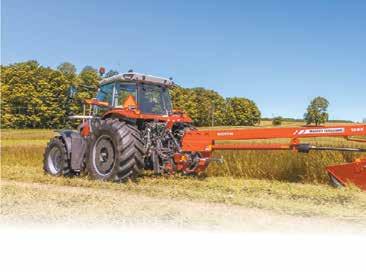

What is the most enjoyable chore to do on the farm? I enjoy doing all the chores, but my favorite is raising calves. I have been in charge of calves ever since I was little. It’s always fun to see what color of calf you will get from a cow with all the crossbreeding we do. It is rewarding to watch them grow and see how my hard work has paid off when they come into the barn as cows. I enjoy hearing all the compliments I get for how my calves look.
What excites you about the future of the dairy industry? Being able to keep the small family farm life going for the next generation. Being with a cooperative that supports small family farms and continues to grow.
What challenges do you have as you embark on your career? Mother Nature. She always bats last. Keeping up with all the new regulations that keep coming out every year. Having to work twice as hard to keep the family farm going, as it seems that all the small family dairy farms are selling out at a fast pace. Another challenge I face is nding help on the farm, as my parents are looking to slow down.
Tell us about your farm and your plans for the dairy this year. My grandparents purchased the farm in 1963. In 1989, my parents bought the farm. We formed a partnership this year as a step toward my ownership of the farm. I farm with my parents, Mike and Keri Salber. We ship our milk to CROPP Cooperative. My parents started transitioning to organic production in 2000 and began shipping organic milk in 2003. We have an 80-cow organic dairy and small beef herd. We have a swing-8 parlor. The milk cows are housed in a hoop barn on a bedded pack in the winter. The cattle 6 months old and up are on pasture from May until September-October, depending on weather and what forage we have available. The majority of the herd are crossbred cattle, using Fleckvieh, Normande, Brown Swiss and Holstein. We grow alfalfa, small grains and corn. We have approximately 230 acres of tillable land, 120 acres of improved pasture and 220 acres of native pasture. The plan for the dairy this year is to do improvements on the milkhouse and barn.
What excites you about the future of the dairy industry? I am excited to see the technology and advancements that will be invented. I have been amazed to see what the dairy industry has accomplished in the last 20 years with technology. The impact that it has made on environmental sustainability, animal welfare, farmers and consumers has been benecial for the longevity of the industry. The beauty of it all is that it is not going to stop anytime soon. I am excited to see where that will take the industry and how each farmer is going to make it unique to their operation.
What challenges do you have as you embark on your career? How to be sustainable with size. With the uctuations within the industry, rise of ination and labor cost, we need to make sure we can cover all of our bases. I am intrigued to see how we can improve the quality of what we have instead of trying to grow the size of our operation.
Tell us about your farm and your plans for the dairy this year. My family and I live and operate on our 150-year-old dairy farm in Waverly, Minnesota. We milk 250 cows, raise our youngstock and farm around 900 acres of cropland, mostly corn and alfalfa. Our parlor is a double-12 herringbone, and the milk is shipped to First District Association in Litcheld, Minnesota. We plan to continue the transition from having high school student employees to Hispanic employees. We had a decent number of seniors graduate and attend college, including me. We are focusing on training Hispanic employees to effectively work on a smaller-scale dairy farm while maintaining quality with practices.
Rachel Hefel Epworth, Iowa Dubuque County 175 cows


When did you know you wanted to be a farmer, and why are you considering a career in dairy? I started milking cows when I was 6 or 7 years old when my mom tore her rotator cuff. I have done it my entire life since. It is a good lifestyle. I enjoy being around animals, especially cows.
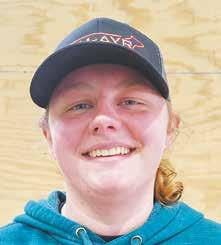
How have you continued to increase your role on the farm? I have increased genetics with showing. I now manage all the breeding and calving. I have handled operating more equipment as well. I started by hauling bales with the skid loader and then went to hauling silage. Now, I am involved in all aspects of eldwork.
What is the most enjoyable chore to do on the farm? I enjoy feeding calves, because I like to watch them grow and develop.
What excites you about the future of the dairy industry? Genetics and the future of genetics. I am excited to continue watching the breeds develop.
What challenges do you have as you embark on your career? The cost of everything is a challenge. It makes it hard to purchase or update things. Of course, the milk price is always a challenge too. It makes it difcult for young people to buy in.
Tell us about your farm and your plans for the dairy this year. The farm is managed by my parents, Mark and Rhonda, and I. We milk in a double-6 parlor, and our cows are housed in a freestall barn. We ship our milk to Prairie Farms Dairy. We have cattle of every breed. We plan to continue showing this year at the county fair, Iowa State fair and World Dairy Expo.
Page 16 • Dairy Star • Saturday, April 13, 2024 Con nued from OUR SIDE | Page 15 www.lakehenryimplement.com 23661 Hwy. 4 , Lake Henry, MN • (320) 243-7411 Implement inc. Call for your parts and service needs! Hesston by Massey Ferguson 1300 Series Mower Conditioners From economy models with conditioning options to advanced center-pivot disc models, rugged Hesston by Massey Ferguson® 1300 Series mowers are all you need to bring in your hay crop quickly — and in great condition. Rates as low as 0% for 48 months. O er valid on select models. Subject to credit review and approval through AGCO Finance LLC. Other terms and conditions may apply. All nancing is in AGCO Finance’s sole discretion. Down payment may be required. Dealer participation may vary. Contact your participating dealer for more details. O er subject to change without notice. FOR 48 MONTHS 0% OR CASH BONUS Valid through April 30, 2024
Thank you to all of our customers for doing business with us! And thank you to all who came to our customer appreciation event!



























Dairy Star • Saturday, April 13, 2024 • Page 17 JOIN OUR TEAM Now Hiring Service Technician Intern Apply Now! SCAN ME bit.ly/3fwYBl6 Paid Internship +1-800-636-5581 | Proudly serving you from Brookings, SD; St. Peter, MN; and Melrose, MN! DEALER Cutting-Edge Milking Equipment | Supply Delivery | Preventive Maintenance Herd Advisory & Software Support | Manure Management Services | Feed Management farm-systems.com © 2022 Farm Syststeems. All rig ts hts rese e rved. A-3386648395 Need Service? Keep your operation up and running with Farm Systems Your Local Milking, Manure and Feed Management Solutions & Service Provider
TOP PERFORMERS
Trent, Kristan, Pete and Jeanne Opelt, of River Crest Dairy LLC | Greenwood, Wisconsin | Clark County | 250 cows
How many times a day do you milk, and what is your current herd average, butterfat and protein? Our cows are milked twice a day. The current herd average is 30,242 pounds of milk with a 4.4% butterfat and 3.4% protein.
Describe your housing and milking facility. All of the cows are housed under one roof in a naturally ventilated, sand-bedded freestall barn with two group calving packs. Cows are milked in a double-8 parallel parlor.
Who is part of your farm team, and what are their roles? The farm team includes the following family members: Trent, feeder; Kristan, herdsman/bookkeeping; Pete, crops/ maintenance; Jeanne, calves; Kyle Opelt, crops/maintenance; Lindsay Van Cuyk, calves; and Jerry Noeldner, heifers. We also have two Amish employees and one part-time high school student.
What is your herd health program? A veterinarian comes every other week for herd health. Cows are vaccinated with BoviShield one month after calving. They are vaccinated during the dry period for mastitis with Endovac and for salmonella.
What does your dry cow and transition program consist of? To dry cows off, we move them into the dry cow pen as
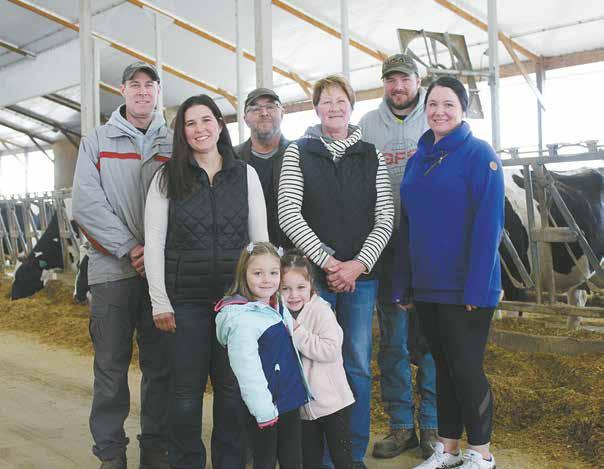
Lexie Opelt (front, from le ) and Maggie Van Cuyk; (back, from le ) Trent Opelt, Kristan Opelt, Pete Opelt, Jeanne Opelt, Kyle Opelt and Lindsay Van Cuyk stand April 8 in the freestall barn at River Crest Dairy LLC near Greenwood, Wisconsin. The farm is home to 250 milking cows.
they leave the parlor. We pull them out of the dry cow pen two days later to be milked out again. Then, two days later, they are milked out one more time and treated with a teat sealant.
We started doing this years ago, because it seems to be easier on the cows that are still milking heavy, and with our setup, it is easy to do. We use selective dry cow therapy, only using antibi-
otics on cows with high somatic cell counts. When we built our barn, we put all the cows under one roof, including dry cows. It eliminates the weekly task of trailering dry cows, and it makes
cow movements easy and stressfree through the entire lactation. The dry cow pen is identical to the milking pens, with deep sand-bedded free stalls and fans. Springing heifers are moved to the dry pen two months before calving, which allows time for vaccines, hoof trimming and adjustment to the barn. The group calving packs are located adjacent to the dry pen. Cows and springing heifers are moved to the packs two weeks before calving and remain on the calving packs at least 24 hours after calving before going to the fresh pen. They stay in the fresh pen about 30 days then move to a 2-year-old or mature cow pen for the rest of the lactation. Dry cows and close-ups are fed winter rye, corn silage and minimal haylage, depending on our rye inventory. X-Zelit is top-dressed and mixed in by hand to closeups to prevent milk fever.
What is the composition of your ration, and how has that changed in recent years? Milking cows are fed alfalfa, brown mid-rib corn silage, whey, dry corn and a protein/mineral mix. We have not made any major changes to the ration since adding whey. We tend to make minor adjustments based on forage quality and inventory.
Turn to TOP PERFORMERS | Page 20




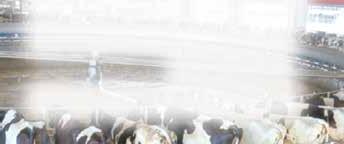














































Page 18 • Dairy Star • Saturday, April 13, 2024 Over 85 employees to serve you 24/7/365 and to keep your herd comfortable and pro table. We pride ourselves in great, respectful service every time we step onto your farm. We also service all brands of milking equipment. We’re here to help, just give a holler! THANK YOU FOR BEING A DAIRY FARMER Dorchester, WI 715-654-5252 Spring Valley, WI 715-772-3201 West Salem, WI 608-633-6690 Mondovi, WI 715-926-5777 Mora, MN 320-703-9752 Pierz, MN 320-468-2494 St Charles, MN 507-932-4288 Wadena, MN 218-632-5416 Main: (715) 772-3201 advanceddairy@wwt.net Business Hours, all locations: Mon - Fri 8:00 am - 4:30 pm, Sat & Sun Closed Call For An Appointment - 24/7 Emergency Service Available from all locations We repair all makes and models of ATVs, side by sides, snowmobiles, chainsaws, lawn care equipment, etc. ELECTRIC MOTOR SALES & SERVICE Full time technician on site Mon.-Fri. 8-5 REPAIR Hwy 25 • Pierz • 468-2168 LITTLE ROCK, MN 320-584-5147 PIERZ, MN 320-468-2168 LASTRUP, MN 320-468-2543 BUCKMAN, MN 320-468-6433 FOLLOW US ON FACEBOOK! www.sunriseagcoop.com Mowers & Tillers THINK Spring! CHICK ORDERS! PLACE YOUR Zero Turn Mowers ATTACHMENTS Mow
DANIELLE NAUMAN/DAIRY STAR





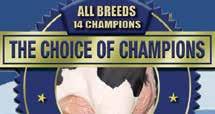



Doug and Julie Martin, son Grant and wife Kim, daughter Jill and
“There’s nothing like the sight of fresh Jersey cows on green grass. We love Udder Comfort™ for those fresh cows. We spray udders 2x/day for 5 days after calving. We don’t do intramammary treatments while in the milking period, but we do dry treat a few. If we get flareups, we use Udder Comfort after milkings, and in most cases, they clear up within a week,” says Jill Wiser, dairy manager and partner in her family’s Pleasant Valley Jerseys, Chambersburg, Pa., a grazing dairy milking 300 Jerseys.
“We’ve been using Udder Comfort for 15 years. Nothing else we tried worked. We always have Udder Comfort here because it’s the only one that works. It gets swelling down fast and makes cows comfortable so they do better,” Jill explains and looks forward to trying the Udder Comfort BatteryOperated Backpack Sprayer to do large fresh groups quickly as their seasonal spring calving gets underway soon.






Dairy Star • Saturday, April 13, 2024 • Page 19
— Jill Wiser “... the only one that works!” Quality Udders Make Quality Milk PLEASANT VALLEY JERSEYS,
Chambersburg, PA
husband Josh Wiser
Registered Jerseys, grazing herd 12,000M 5.8F 4.2P, 200,000 SCC For external application to the udder only, after milking, as an essential component of udder management. Always wash and dry teats thoroughly before milking. Her Comfort is Our Passion! Softer udders [ Faster milking Better quality [ MORE MILK 1.888.773.7153 uddercomfort.com Helping reach their potential since 1998! PO Box 160, Albany, MN • (320) 845-2184 • Fax (320) 845-2187tfn Catch the Dairy Star’s Mark Klaphake with Joe Gill at 6:45 a.m. the 2nd & 4th Fridays of the month on KASM! Joe Gill • Farm Director SERVING CENTRAL MINNESOTA FOR OVER 50 YEARS FARM INFORMATION STATION •Easy To Clean • Quick And Easy To Install • Hidden Fastener • Low Maintenance • Mold and Mildew Resistant • Distinctive Tongue and Groove System • Seamless Appearance • Economical • No Painting Required 715-644-2350 Chippewa Valley Dairy Supply 6053 CTY. HWY. G • STANLEY, WI 54768 • Andrew Zimmerman
SLAT WALL KITS ALSO AVAILABLE
300
Wall and Ceiling Panels
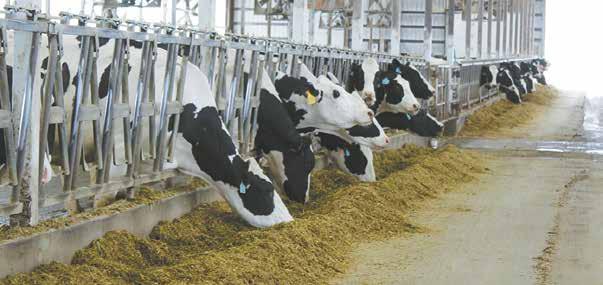
Tell us about the forages you plant and detail your harvest strategies. We plant alfalfa, BMR corn for milking cows, and conventional corn for heifer and dry cow silage. We also started planting winter rye for dry cow feed a few years ago. We plant peas and triticale with our newseeding alfalfa and harvest it for heifer forage. All forage is custom harvested.
What is your average somatic cell count, and how does that affect your production? Our SCC is around 100,000 according to Dairy Herd Improvement Association testing. It is lower in the tank, because we usually pasteurize milk from a few high SCC cows for calf milk. We used to try hard to keep our SCC lower, but when they stopped paying high premiums for a re-


ally low count, we backed off a little on culling and treating mastitis. Production didn’t seem to change.
What change has created the biggest improvement in your herd average? In 2018, we started feeding whey, and it was a game-changer. It’s a pain to work with and requires management, but our components immediately sky-rocketed. If we run into a supply problem with the whey, it causes issues with production.
What technology do you use to monitor your herd? We don’t have a heat detection system or anything fancy to monitor the cows. We use tail paint and walk the pens, which only takes about 15 minutes a day. The parlor is simple and shows milk weights
and temperatures, but nothing is recorded back to a computer. Milking employees write down high-temperature cows as they milk.
What is your breeding program, and what role does genetics play in your production level? Cows are bred rst service to a G6G program. Then, they are monitored for repeat heats. Beef semen is used on the bottom one-third of the cows, and we’ll probably increase that. The top 50% of heifers get sexed semen on the rst service. The remaining services are conventional semen. We are trying to nd the balance of how much beef semen to use. Our heifer facilities are sized to the number of heifers we need, so we regularly pick and choose extra heifers to sell after weaning to keep our
numbers where we need them. We don’t genomic test, but we know the important role genetics play. We try to be consistent in selecting bulls for pounds of fat and protein, daughter pregnancy rate, udders, feet and legs, and strength. We keep an eye on a number of other traits. We do not intentionally breed for big, tall cows but try to steer clear of bulls that sire shallow, narrow cows.
List three management strategies that have helped you attain your production and component level. Attention to detail in all areas of the farm. Our entire team of family members and employees try to do an exceptional job of taking care of the little things, day in and day out. Consistency with details is critical if you want consistent production.
The combination of dry corn and whey has boosted components and protability. BMR corn silage has helped increase intakes and, therefore, production.
Tell us about your farm and your plans for the dairy in the next year. River Crest Dairy LLC is owned by Pete and Jeanne Opelt, their son, Trent, and his wife, Kristan. The LLC was formed in 2015 when the freestall barn and parlor were built to combine the two tiestall herds. In 2017, a calf barn with automatic feeders was built. We raise our heifers and farm almost 700 acres, growing all of our own forage and grain corn. We do not have any major plans for the next year. We want to continue to try to get more production from the cows and the acres that we have.
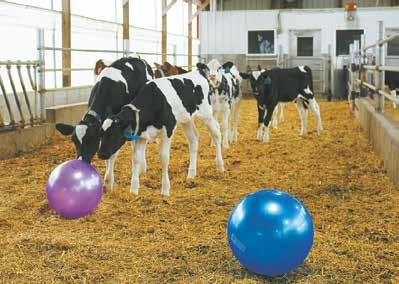









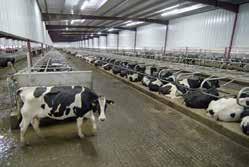


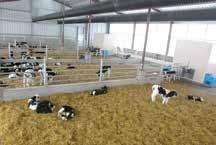


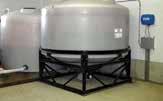















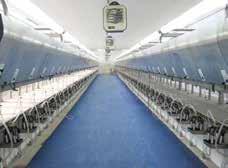





















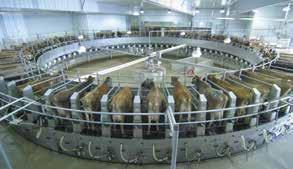




Page 20 • Dairy Star • Saturday, April 13, 2024
Con nued from TOP PERFORMERS | Page 18
DANIELLE NAUMAN/DAIRY STAR
Cows eat a total mixed ra on April 8 at River Crest Dairy LLC near Greenwood, Wisconsin. The herd averages over 30,000 pounds of milk with a 4.4% bu erfat test and 3.4% protein.
DANIELLE NAUMAN/DAIRY STAR Calves play with balls April 8 in the calf barn at River Crest Dairy LLC near Greenwood, Wisconsin. The Opelt family began raising their calves with automa c feeders in 2017.





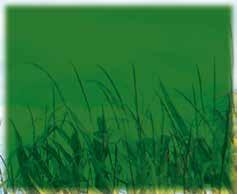
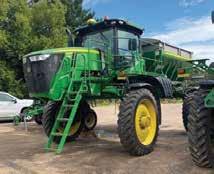




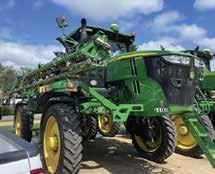












$141,100
JD 2680H 2021, 35 ft., 3-Section Folding, #579164 ............................... $139,900
JD 2680H 2021, 35 ft., 3-Section Folding, #574929 ............................... $134,900
JD 637 2000, 29 ft., 3-Section Folding, 9” Spacing, #565358 .................... $23,900
JD 2680H 2022, 30 ft., 3-Section Folding, #556294 ............................... $129,900
DRAWN PLANTERS
JD 1775 2018, 12 Row, 30” Spacing, #570817 ........................................ $108,000
Case IH 2150 2021, 16 Row, 30” Spacing, #569307 ............................... $199,900
JD 1775NT 2022, 24 Row, 30” Spacing, #549842 ................................... $389,900


JD 1770NT 2013, 16 Row, 30” Spacing, #578120 ..................................... $70,900
JD 1795 2023, 24 Row, 20” Spacing, #573347 ........................................ $419,900
JD DB60 2017, 24 Row, 30” Spacing, #562192 ....................................... $249,900
JD DB60 2017, 24 Row, 30” Spacing, #574768 ....................................... $315,000
JD DB60 2013, 24 Row, 30” Spacing, #550243 ....................................... $149,900
JD 7200 1990, 12 Row, 30” Spacing, #577052 ............................................ $7,500
JD DB60 2018, 24 Row, 30” Spacing, #573437 ....................................... $289,900
JD 1760 2008, 12 Row, 30” Spacing, #568124 .......................................... $29,500
JD DB66 2012, 36 Row, 22” Spacing, #556901 ....................................... $195,900
JD DB66 2011, 36 Row, 22” Spacing, #578691 ....................................... $182,000
JD 1775 2022, 12 Row, 30” Spacing, #574581 ........................................ $139,000







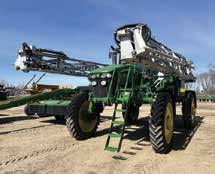

JD 1770NT CCS 2013, 24 Row, 30” Spacing, #571367 ............................ $109,900
JD DB60 2010, 24 Row, 30” Spacing, #569759 ....................................... $151,500
JD 1770NT CCS 2009, 16 Row, 30” Spacing, #576764 ............................ $133,500
JD 1775NT 2023, 24 Row, 30” Spacing, #566196 ................................... $369,900
JD 1775NT 2020, 24 Row, 30” Spacing, #579102 ................................... $297,900
JD DB66 2022, 36 Row, 22” Spacing, #576258 ....................................... $479,000
JD DB60 2020, 24 Row, 30” Spacing, #569113 ....................................... $349,900
JD DB66 2007, 36 Row, 22” Spacing, #575704 ....................................... $129,900
JD 1770NT CCS 2008, 24 Row, 30” Spacing, #574675 .............................. $89,900
JD 1770NT CCS 2013, 24 Row, 30” Spacing, #578773 ............................ $119,900
JD 1775NT 2015, 24 Row, 30” Spacing, #577213 ................................... $159,900
JD 1775NT 2021, 12 Row, 30” Spacing, #579443 ................................... $215,000
Kinze 3500 2016, 8 Row, 30” Spacing, #578235 ...................................... $59,900
JD DB66 2023, 36 Row, 22” Spacing, #574902 ....................................... $532,900
JD 7200 1994, 12 Row, 30” Spacing, #576034 .......................................... $15,500
JD DB66 2003, 36 Row, 22” Spacing, #577083 ......................................... $63,500
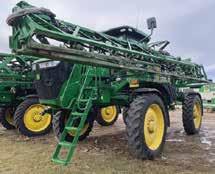



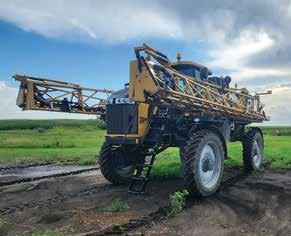


JD 1775 2022, 12 Row, 30” Spacing, #578705 ........................................ $142,500
JD 1775 2019, 12 Row, 30” Spacing, #578706 .......................................... $99,900
JD 1770 2001, 12 Row, 30” Spacing, #578830 .......................................... $29,900
JD DB60 2013, 24 Row, 30” Spacing, #578708 ....................................... $139,900
JD DB60 2019, 24 Row, 30” Spacing, #551039 ....................................... $299,900

JD DB66 2019, 36 Row, 22” Spacing, #572188 ....................................... $379,900
JD DB80 2012, 32 Row, 30” Spacing, #571885 ....................................... $232,900
JD 7200 1995, 16 Row, 30” Spacing, #578819 .......................................... $13,900
JD R4030 2016, 120 ft. Boom, 20” Spacing, 1138 hrs., #568430







Dairy Star • Saturday, April 13, 2024 • Page 21 Equipment and pictures added daily • Go to www.mmcjd.com Locations throughout minnesota & western wisconsin! CALL TODAY! (320)365-1653 SEE OUR COMPLETE INVENTORY WITH PICTURES AND DESCRIPTIONS AT: www.mmcjd.com 2017 John Deere R4038, 2265 hrs., #563225 $159,900 Financing subject to pre-approval through JD Financial. Some restrictions apply. See dealer for details. FLEXIBLE FINANCING OR CASH DISCOUNTS ON QUALIFIED SPRAYERS DISKS JD 2680H 2021, 18 ft., 3-Section Folding, 11” Spacing, #574795 ............. $79,900 JD 2623 2014, 37 ft., 5-Section Folding, 9” Spacing, #579549 .................. $39,900 Degelman ProTill 33 2016, 33 ft., 3-Section Folding, #565423 .............. $89,900 JD 2680H 2020, 30 ft., 3-Section Folding, #576275 ............................... $119,000 Wil-Rich 7620 2004, 23 ft., 3-Section Folding, #572480 ......................... $16,500 JD 2680H 2021, 30 ft., 3-Section Folding, 9” Spacing, #574954 ............. $119,900
2680H 2022, 40 ft., 3-Section Folding, #564729 ............................... $149,900 Orthman 5TT 2019, 8 ft., Rigid, 9” Spacing, #576019 .............................. $15,900
Mach-Till 261 2021, 26 ft., 3-Section Folding, #571167 ............... $99,900
2680H 2023, 35 ft., 3-Section Folding, #576773 ...............................
JD
Kinze
JD
SELF-PROPELLED SPRAYERS
............ $262,900 JD 410R 2022, 120 ft. Boom, 20” Spacing, 244 hrs., #567218................. $469,900 JD 612R 2023, 120 ft. Carbon Fiber Boom, 20” Spacing, 3 hrs., #572276 $624,900 JD R4030 2014, 90 ft. Boom, 20” Spacing, 1859 hrs., #578647 .............. $146,500 JD 410R 2023, 120 ft. Boom, 20” Spacing, 250 hrs., #574505................. $469,500 JD 410R 2023, 120 ft. Boom, 20” Spacing, 157 hrs., #540611................. $529,900 JD 410R 2023, 90 ft. Carbon Fiber Boom, 20” Spacing, 403 hrs., #573903 .................................................................................................. $549,900 JD 410R 2023, 90 ft. Carbon Fiber Boom, 20” Spacing, 341 hrs., #573906 .................................................................................................. $549,900 Case IH SPX4410 2006, 120 ft. Boom, 4625 hrs., #574897 ...................... $59,000 JD 412R 2022, 90 ft. Carbon Fiber Boom, 20” Spacing, 574 hrs., #576415 .................................................................................................. $494,900 JD R4038 2015, Dry Box 300 cu. ft. Boom, 3150 hrs., #574160 .............. $121,000 Hagie STS12 2013, 120 ft. Boom, 20” Spacing, 2703 hrs., #577086 ....... $189,900 JD R4030 WET KIT 2018, 120 ft. Boom, 20” Spacing, 1500 hrs., #571141 $27,500 JD 412R 2023, 90 ft. Carbon Fiber Boom, 20” Spacing, 389 hrs., #576152 .................................................................................................. $551,500 JD R4045 2019, 120 ft. Boom, 20” Spacing, 2794 hrs., #571107 ............ $299,900 JD R4038 2018, 90 ft. Boom, 20” Spacing, 2099 hrs., #572639 .............. $245,900 JD 4940 2013, 120 ft. Boom, 15” Spacing, 2815 hrs., #572036 ............... $144,900 JD R4038 2019, 120 ft. Boom, 20” Spacing, 2145 hrs., #571743 ............ $279,900 Hagie STS12 2021, 120 ft. Boom, 15” Spacing, 939 hrs., #573156 ......... $459,900 Hagie STS12 2022, 120 ft. Boom, 595 hrs., #568653 ............................. $559,900 Hagie STS12 2022, 120 ft. Boom, 15” Spacing, 882 hrs., #575712 ........ $569,900 JD 410R 2023, 120 ft. Boom, 20” Spacing, 325 hrs., #575913................. $539,900 Hagie STS12 2019, 120 ft. Boom, 15” Spacing, 1276 hrs., #571900 ....... $389,900 JD R4038 2018, 90 ft. Boom, 20” Spacing, 2841 hrs., #577961 .............. $239,900 Hagie STS12 2019, 120 ft. Boom, 15” Spacing, 1400 hrs., #570657 ....... $379,900 JD R4038 2016, 90 ft. Boom, 20” Spacing, 2490 hrs., #563226 .............. $169,900 JD 600R 2022, Dry Box 200 cu. ft. Boom, 320 hrs., #575888 .................. $539,000 JD 4730 2008, 100 ft. Boom, 3620 hrs., #575085 ................................... $104,500 JD 612R 2022, 120 ft. Boom, 20” Spacing, 355 hrs., #559687................. $539,900 JD 4830 2013, 120 ft. Boom, 1221 hrs., #574190 ................................... $182,500 JD 612R 2023, 120 ft. Boom, 20” Spacing, 175 hrs., #541071................. $589,900 RoGator RG1300C 2018, 120 ft. Boom, 20” Spacing, 3275 hrs., #576304 .................................................................................................. $156,800 JD 4700 1998, 90 ft. Boom, 20” Spacing, 5000 hrs., #575696 ................... $42,500 0 Force FL3430-18 #570667 $57,500 $146,500 2014 John Deere R4030 1859 hrs., #578647 $262,900 2016 John Deere R4030 1138 hrs., #568430 $169,900 2016 John Deere R4038 2490 hrs., #563226 $104,500 2008 John Deere 4730 3620 hrs., #575085 $182,500 2013 John Deere 4830 1221 hrs., #574190 $156,800 2018 RoGator RG1300C 3275 hrs., #576304













Bob’s Dairy Supply Dorchester, WI 715-654-5252
Ederer Dairy Supply Plain, WI 608-546-3713
DeLaval Dairy Service Kaukauna, WI 866-335-2825
Joe’s Refrigeration Inc. Withee, WI 715-229-2321
Mlsna Dairy Supply Inc. Cashton, WI 608-654-5106
Professional


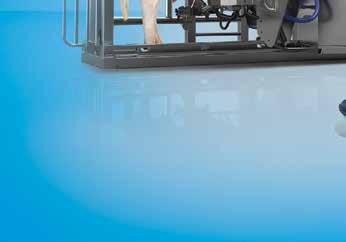
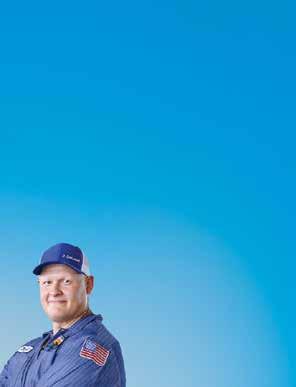




Page 22 • Dairy Star • Saturday, April 13, 2024 Specializing in forage blower parts & repair | Fieldline Forage Blowers, Silage Carts & Manure Spreaders W3215 CTY RD N, OWEN, WI 54460 | 715-316-3127 | FAX: 715-223-1479 HORST REPAIR Fieldline FL580 Spreader Variable spd, Hyd drive web, Flotation tires, Hyd brakes & susp, 580 cu ft RENT or BUY Fieldline FL440 Forage Blower 1000 RPM “Highest capacity on the market”, Very Heavy Duty Machines Ask About a FREE DEMO Fieldline FL860 Forage Blower 540 RPM “High Capacity - Heavy Duty”, Auto Water & Applicator Ask About a FREE DEMO ‘15 Fieldline FL440 1000 RPM, Thru the Shop, Serviced and Ready to Go! $13,500 Miller Pro 5300 18’ Chopper Box, CLEAN, LOW WEAR, Field Ready $14,900 Badger 1200 18’ Chopper Box, NEW STAINLESS Conveyor $10,995 Badger 260 Blower Refurbished $3,250 Case IH 600 Fresh Paint, Serviced & Ready $2,500 NH 40 1000 RPM Blower “Fully Rebuilt - Parts Warranty” $5,500 NEW Boyer 1822 Cart Gear Fits 18’-22’ forage boxes, 19,000# Hubs, Available w/truck tires or floater tires, Heavy Duty units, Starting at $11,700 AgriSpeed Tractor / Wagon Hitches Call for Price NEED FORAGE BLOWER PARTS? We have them in Stock! Call for free parts catalog COMPARE & SAVE Contact one of the following dealers to learn more: IOWA Prairie Land Ag Supply Inc. Rock Valley, IA
Dairy Systems, Inc.
Union,
712-476-9290 United
West
IA 563-422-5355 Monticello, IA 319-465-5931 WISCONSIN Advanced Dairy Spring Valley, WI 715-772-3201
Dairy Services Arlington, WI 608-635-0268 Redeker Dairy Equipment Brandon, WI 920-346-5579 The Scharine Group Inc. Whitewater, WI 800 472-2880 Mt Horeb, WI 800-872-3470 MINNESOTA & SOUTH DAKOTA Farm Systems Melrose, MN 320-256-3276 Brookings, SD 800-636-5581 Advanced Dairy Mora, MN 320-679-1029 Pierz, MN 320-468-2494 St. Charles, MN 507-932-4288 Wadena, MN 218-632-5416 is a registered trademark of Tetra Laval Holdings & Finance S.A. and “DeLaval” is a registered trade/servicemark of DeLaval Holding AB © 2024 DeLaval Inc. DeLaval, 11100 North Congress Avenue, Kansas City, Missouri 64153-1296. Dairy producer testimonials reflect their real-life experience using DeLaval products. Results in testimonials have not been independently verified and DeLaval does not claim the results are typical. Actual performance and improvement will depend on a number of factors, including prior milking practices, type of cows, farm and herd maintenance practices. Testimonials do not constitute warranties or guaranties of service or performance. www.delaval.com MY VMS™ LETS ME RETROFIT MY WAY YOUR VMS™ YOUR WAY We’ve had older barns that had served a useful life that we were able to facelift, add VMS to them, and they’re back to being extremely productive barns with extremely productive cows. Jared Feltz Feltz Family Farms, Wisconsin, USA 700 cows on 6 VMS V300 and 4 VMS Classic “ To find out more about how VMS™ can work your way, visit delaval.com or call your local DeLaval representative.
Their Holstein family
Timmers win PDCA Distinguished Breeder Award
By Emily Breth emily.b@star-pub.com
ELLSWORTH, Minn.
Matt Timmer has devoted more than 20 years of his life to breeding Holstein cows. And recently, his and his family’s dedication to their herd’s genetics has garnered attention.
Timmer, and his wife, Polly, and their children, Jacob and Aiden, of Mat-ArDor Holsteins, were chosen for a Distinguished Breeder Award from the Minnesota Purebred Dairy Cattle Association. The Timmers were among three dairy farms recognized this year.
“I didn’t set out to receive any awards,” Timmer said. “I just breed cows because I like milking cows. It was a great honor to be selected since I was not expecting anything.”
The Timmers milk 45 registered Holsteins and Red & White Holsteins near Ellsworth. In addition, Timmer
works at a neighboring dairy farm.
“We started breeding cows for type and show,” Timmer said. “We are still trying to push for type with more incentive on components.”
Home of more than 30 Excellent cows, Mat-ArDor Holsteins has a BAA of 111.3. The farm has a rolling herd average of 26,500 pounds of milk with a 4.4% butterfat test and 3.3% protein.
“We’ve been trying to achieve better components through feeding different byproducts, cow care and cow comfort,” Timmer said. “Plus, our genetics are starting to show up in that area.”
While they might focus more on milk production and components now than they used to, the Timmers continue to consider traits like snug udders and sound feet and legs.
“We never really paid a lot of attention to it, and now it’s kind of more in the forefront,” Timmer said. “In
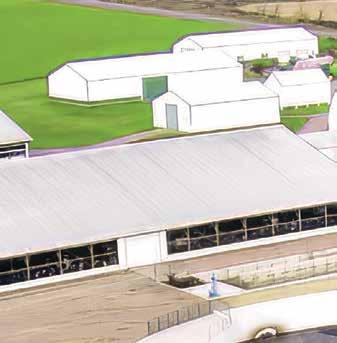
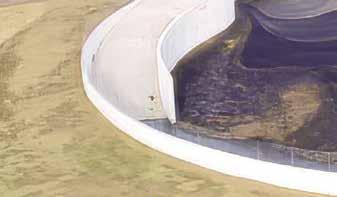
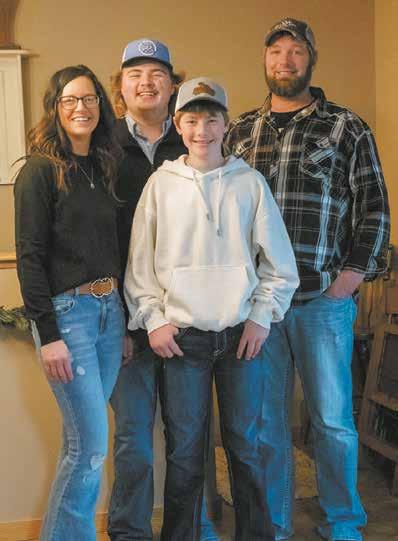
the early days, we’d sacrice production for type, but they are getting some bulls that can do both.”
The Timmers have also been genomic testing their heifers to help with mating decisions.
One cow set their program in motion.
“Mat-Ar-Dor Vent Cut B3941-RED was 92 points, and she was the cow that got us into the Reds and showing,” Timmer said. “When she came around, we were offered some money to sell her but decided not to. We have been able to sell offspring out of her and keep breeding out of the cow family, so it’s cool to refer back to the Red cow. She is still relevant.”
Another cow family that can be found on the farm stems from the late Mat-ArDor Lheros Kory B202 EX94, the farm’s rst 94-point homebred cow.
“I’m pretty proud of that cow and have a lot of offspring from her,” Timmer said.










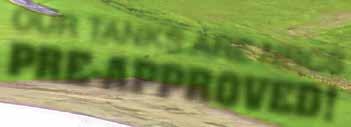


Dairy Star • Saturday, April 13, 2024 • Page 23 THE NATION’S LEADER IN AGRICULTURAL CONCRETE (920) 948-9661 | www.pippingconcrete.com dennis@pippingconcrete.com 37+ years in business | U.S. Navy Veteran owned dennis@pippingconcrete.com
PHOTO SUBMITTED
Turn to TIMMERS | Page 25
The Timmer family — Polly (from le ), Jacob, Aiden and Ma — stand together in December 2023 near Ellsworth, Minnesota. The Timmer family milks 45 registered Holsteins and Red and White Holsteins and was given the Dis nguished Breeder Award from the Minnesota Purebred Dairy Ca le Associa on.
Remote Monitoring Made Easy
Advanced Dairy Spring Valley, WI; Mondovi, WI; West Salem, WI; Mora, MN; Pierz, MN; Wadena, MN; St Charles, MN
Central Ag Supply Juneau, WI; Baraboo, WI
J. Gile Dairy Equipment, Inc. Cuba City, WI
Redeker Dairy Equipment Brandon, WI
Stanley Schmitz Inc. Chilton, WI
Paul Mueller Company’s MAXXimizer® L-40 package chiller has plugand-play design and cloud connectivity, so you benefit from remote, real-time access to your refrigeration system data and chilled milk temperature. 1-800-MUELLER
from Parlor to Processor…

Tri-County Dairy Supply Janesville, WI
Fuller’s Milker Center Lancaster, WI; Richland Center, WI
Eastern Iowa Dairy Systems Epworth, IA
Sioux Dairy Equipment Rock Valley, IA; Colton, SD
United Dairy Systems West Union, IA; Monticello, IA
Gorter’s Clay & Dairy Equipment Pipestone, MN
Leedstone Melrose, MN; Glencoe, MN; Plainview, MN; Menomonie, WI
Monroe Westfalia Surge Monroe, WI
Lely Center Monroe Monroe, WI
Total Dairy Service Kewaunee, WI
Midwest Livestock Systems Zumbrota, MN; Renner, SD; Menomonie, WI; Kaukauna, WI; Weston, WI
Page 24 • Dairy Star • Saturday, April 13, 2024
| PAULMUELLER.COM
24-2402210927p-DFESGF-Dairy Star April MAXXimizer 10.125x14.75 Ad.indd 1
Timmer said 50% of the herd goes back to those two foundation cows, resulting in offspring with the structural and production traits Timmer strives for.
To maintain good genetics, Timmer does his research on the sires he considers using.
“Sire stack is one of the biggest things,” Timmer said. “I make sure that multiple generations of Very Good or Excellent dams are behind them. Then, I just have to match up the right bull with the right cow, keeping in mind all the different functions and production traits.”
When new sires are released, Timmer sorts the list to nd sires with traits he desires. For the Red and White Holsteins, which comprise about 30% of the herd, he uses about three sires for six months along with a handful of Holstein sires.
“Sires come out very regularly, cow families are prevalent, and a lot of families produce good bulls, so I just look through it and start matching,” Timmer said.
Timmer said there are many things he and his family enjoy about cows. He especially appreciates that he and Jacob share the same excitement for high-quality cattle.

“We are both passionate and feed off each other,” Timmer said. “We buy a new cow every once in a while and, after a month, enjoy exchanging what we like and what we don’t like about her.”
Jacob and Aiden are active in 4-H. Timmer leases cattle to nieces and nephews and two families that
have expressed an interest in showing.
“My oldest son is getting pretty good with the clippers, so he will help them get the cow t for the show, milk her and wash her,” Timmer said. “The kids that come around and help love showing the calves, so it’s pretty fun.”







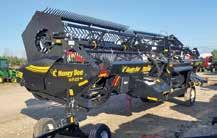
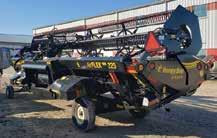
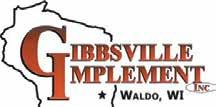
Dairy Star • Saturday, April 13, 2024 • Page 25
“With the flow being so even you can run faster and and the combine isn’t working as hard. The nine inches of flex allows us to pick up some field loss we would’ve had with our previous header.”
LIGHTWEIGHT,FASTANDBUILTTOLAST WWW.GIBBSVILLEIMPLEMENT.COM NEWAIRFLEXSDXHEADSINSTOCK-CALL! 2023HoneyBeeAF225SDX 25‘ w/transport $114,514lessprograms 2023HoneyBeeAF236SDX 36‘ w/transport $128,524lessprograms W4927ClearviewRd.Waldo,WI53093 920-528-1436
TheAirFLEXSDXfeaturessensorsandairsuspensionthatallowthe exheader toshavetheground,pickingupmoreofthecrop.It’slightweightyetdurable, sophisticatedyeteasytouse,allwhileintegratingcutting-edgeinnovation.Crafted onthefarm,you’llappreciatethecombinationofthoughtfuldesign,highperformance andsimplicity–andtheextramoneyitwillgenerate.
Con nued from TIMMERS | Page 23
PHOTO SUBMITTED
Jacob Timmer shows Mat-Ar-Dor CECE EX-91 at the 2021 Minnesota State Fair in Falcon Heights, Minnesota. Timmer is acve in 4-H and is passionate about high-quality ca le.
PHOTO SUBMITTED Aiden Timmer shows Mat-Ar-Dor Warrior Roni VG-85 in August 2023 at the District IV Holstein show at the Pipestone County Fairgrounds in Pipestone, Minnesota. Aiden’s father, Ma Timmer, has been breeding ca le for over 20 years.
Caring for almost half a century
Sonstegard specializes in fertility, conventional practices
By Emily Breth emily.b@star-pub.com
HOFFMAN, Minn. —
For 49 years, rope halter and sleeve at his side, veterinarian Gregg Sonstegard has been helping farmers and animals alike. Though technology has changed, Sonstegard’s ways have not.
Sonstegard owns Nordic Veterinary Service in Hoffman, and his work has ranged from routine herd checks of beef and dairy cattle to fertility programs to helping at sale barns.
“I still palpate the cows,” Sonstegard said. “Most of the time I can do just as good of a job with my arm as an ultrasound. That’s a big change to help the industry, but I never really used it.”
Working with the fertility of animals, Sonstegard said, has been one of the most constant and enjoyable things throughout his career.
“I did a lot of fertility work over the years,” Sonstegard said. “I had over 80 herds in a fertility program. It’s a lot of work, but it’s routine. Most days I’d be checking cows.”
The rst time Sonstegard repaired a displaced abomasum, he was working on a fertility program in Pelican Rapids at a farm he still works with today.
Sonstegard said the advancement of antibiotic protocol that prevents antibiotics from entering the milk supply chain is an important one for dairy farmers.
Sonstegard has made many lasting connections between farmers and other veterinarians.
“There’s a shortage of large animal vets in areas, so we try to help out some other veterinarians when it gets busy,” he said.
As farmers have left the industry, Sonstegard said he has seen a reduction in large animal veterinary work on farms. His staff has dwindled to two ofce workers who handle the scheduling and administrative work.
“Here at the clinic, we do small animals too,” Sonstegard said. “It keeps me busy, and I enjoy it quite a bit.”
Through the years, Sonstegard received a lot of calls in the middle of the night.
“(I did) whatever it took to get it done,” Sonstegard said.

“It didn’t bother me because I liked doing it. Plus, a lot of the time I was working into the night anyway to get work done.”
His wife, Mary, has been supportive of his career every step of the way.
“At one point, she had to do some driving for me when I got night calls,” Sonstegard said. “The kids went with me one or two times during the day because there was something they wanted to watch.”
Sonstegard has known since his senior year of high school that he wanted to be a veterinarian. Sonstegard worked on his parents’ hobby farm, raising goats, sheep, turkeys and cattle. He started riding around with a local veterinarian during high school.
The World’s Best TMR Processor



























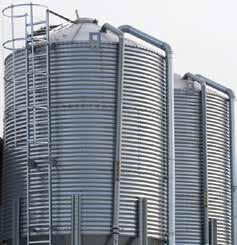









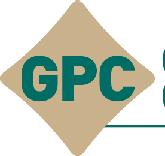

Page 26 • Dairy Star • Saturday, April 13, 2024
Keep your cattle happy & healthy with a great TMR mix. A Supreme vertical mixer is powerful, thorough & accurate, providing the best TMR mix on the market. Unlike other mixers, a Supreme is built to last, providing exceptionally accurate mixes throughout its entire life. With proper care & maintenance, a Supreme will offer the same great mix from the first cow to the last - Guaranteed. NOW AVAILABLE! 1500 Triple Pull Type Mixer 920-853-3516 Potter, WI 920-477-5292 Eden, WI 920-324-3597 Waupun, WI 920-261-5301 Watertown, WI WEaupunquipment g A 1250T Mixer Come see it at the WPS Farm Show!
EMILY BRETH/DAIRY STAR
Turn to SONSTEGARD | Page 27
Gregg Sonstegard stands with Jenny Stormo April 4 at Nordic Veterinary Service in Hoffman, Minnesota. Sonstegard has been a veterinarian for 49 years. Stormo has worked with Sonstegard for 26 years, scheduling small animal visits and doing administra�ve work.
Feed Bin FINANCING PROGRAM *At the end of the 12 months, interest rate converts to 4.00% for the next 12 months, and then standard variable rate until maturity BENSON · CLONTARF · DEGRAFF · MILAN · MURDOCK · SUNBURG SU INTEREST RATE FOR 12 MONTHS* 0% PROGRAM PURPOSE Provide customers with access to safer and more efficient storage solutions as costs of bags and delivery continue to rise. PROGRAM OVERVIEW Take advantage of low interest rates on feed storage bins and associated equipment while purchasing feed from GPC. Take advantage of interest free financing today! • GPC will provide a customized feed storage bin solution for your operation at a competitive cost. • All bins will be equipped with a monitoring system to help ensure that your animals never run out of feed. www.GlacialPlains.com • 320-843-3999 CAApril6-1B-MS * Offer subject to credit approval and program requirements
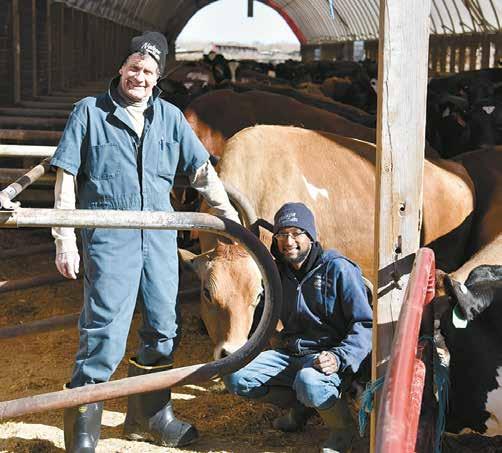
During Sonstegard’s rst year in college, he took courses to prepare him for veterinary school. After three years, he was accepted into the University of Minnesota College of Veterinary Medicine and graduated in 1975. He became licensed in Minnesota and North Dakota.
Sonstegard worked in Watertown and Pelican Rapids before working for Lake Region Veterinary Center in Elbow Lake. In 1980, Sonstegard purchased the clinic in Hoffman and started Nordic Veterinary Service.
Throughout the following years, Sonstegard bought the clinic in the neighboring town of Kensington and has had many others work with him prior to the decline in farm numbers.
“I enjoy working with cattle,” Sonstegard said. “I also enjoyed working with mushers at dog sled races. I did work at the Beargrease sled dog race in Duluth and the Iditarod race in Alaska.”
Sonstegard said his work varies greatly. He has worked with a dairy
farm producing A2 milk as well as organic dairy farms that were in the process of changing their herd health management.
“For the sales barn, I pregnancy check cows and make sure they have ofcial identication tags and prepared health certicates,” Sonstegard said.
Over the years, Sonstegard has worked at barns in Fargo, North Dakota, and Fergus Falls, Perham, Long Prairie and Belgrade. Through the exotic sales held once a month in Long Prairie, he has worked with a variety of animals, including llamas, pot belly pigs, chickens, birds, goats, sheep and pigs.
Sonstegard has spent decades of work on the road and gone through many trucks, putting as much as 450,000 miles on some of them.
“It’s what I wanted to do,” Sonstegard said. “I like doing things for other people who appreciate and are thankful for me helping out, whether it’s an emergency or a routine checkup.”

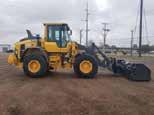
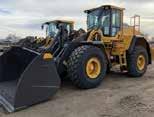
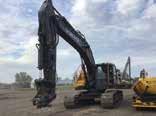








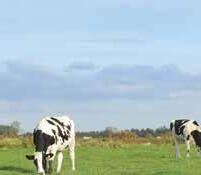

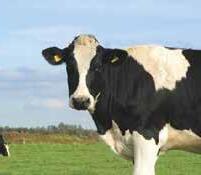



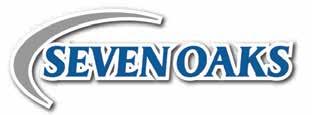



Dairy Star • Saturday, April 13, 2024 • Page 27 BENEFITS OF USING DIRECTIONAL DRILLING INSTALLATION INCLUDE: Continuation of Normal Operation Avoidance of identi ed Infrastructure Installation Maintain Integrity of Driveway, Roadways, Buildings, and Natural Features Little to No Disturbance to Wetlands or Other Sensitives Areas Many Unique Installation Capabilities Vs. Open Cutting/Digging (Entering underBuildings or Tanks) Minimal Site Restoration PRODUCT INSTALLATION Gas Lines Power Wire/ Lines Communication/ Fiber Optic Water Lines/Water Mains Drainage/ Tile Lines Forced/ On Grade Sewer Manure Transfer Lines Land Improvements Drain Tile Design/ Installation • Ditch Cleaning & Grading • Fenceline Clearing Changing weather and higher inputs got you down? Using Drain Tile to manage excess moisture in the soil pro le is the foundation for increasing pro tability per acre. - Less compaction - Better soil Structure - Allows more days per year for eld operations - More Yields with same or less inputs Contact us m line! today to see how we can improve your botto MIKE HAESE MERCHANDISER 920-372-8549 ext: 1595 We can Supply your Bulk Feed and Bedding! Animal Feed Products: • Canola Meal • Corn Gluten Pellets • Dry Distillers Grain • Feed Quality Wheat Straw • Hominy • Oat Hulls • Soy Hull Pellets • Soybean Meal • Western Dry baled hay & Local dry baled hay • Wet Corn Gluten Feed • Wet Distillers Grain • Whole Fuzzy Cottonseed Animal Bedding Products: • Bedding Straw • Green Cut Sawdust • Kiln Dried Sawdust • Screened Freestall Sand We understand that running out of product has a negative impact on your margins. We have developed a network of storage facilities to draw from in case of a supplier shortage or breakdown, with a large trucking base to ensure timely delivery. www.SevenOaksTeam.com Call Us to Discuss Your Project Now! Chad Van Asten 920-450-2844 www.SevenOaksTeam.com 800-289-6225 www.transourceusa.com ‘17 Volvo CE L60H 3,990 hours Call for Price ‘21 Volvo CE EC380EL 544 hours Call For Price ‘21 Volvo CE L180H 409 hours Call for Price PREMIUM PRODUCTS BACKED BY SUPERIOR SUPPORT Sioux Falls, SD • Rapid City, SD • Aberdeen, SD • Sioux City, IA
Con�nued from SONSTEGARD | Page 26
EMILY BRETH/DAIRY STAR
Gregg Sonstegard (le�) visits with Evan Quick April 4 at Quick’s farm near Hoffman, Minnesota. Sonstegard has been a veterinarian for close to 50 years.






DAIRY ST R


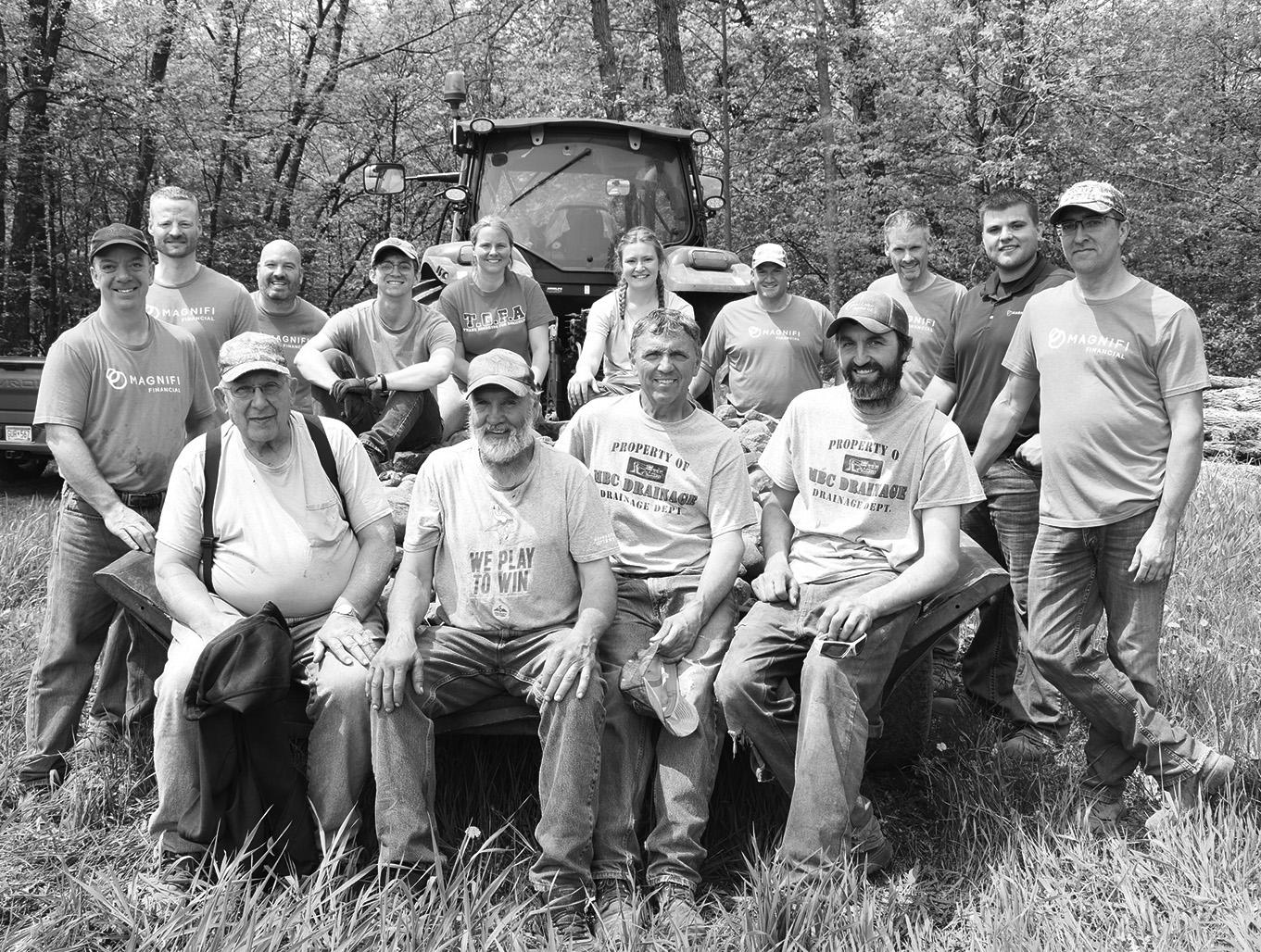







Page 28 • Dairy Star • Saturday, April 13, 2024
IN DAIRY women
Tell us about your family and farm. My husband, Shelby, and I and our daughter, Kinzia, own and operate Crazy Daze Dairy near Davis, Illinois. We milk around 80 cows in a step-up parlor and farm enough land to support the growing, certied-organic dairy herd. We joined the dairy industry in 2015, building our farm from scratch.
What is a typical day like for you on the dairy? I have a full-time job off the farm during the day. Most of my lunch hours are spent running farm errands by either picking up supplies or dropping parts off to get xed. Blain’s Farm & Fleet employees know me by name. A typical day for me includes evening milking and helping with any additional chores that need to be done. On the weekends, I take care of the morning and evening milking. Outside of milking, I help with odds and ends with everything else to make sure everything runs smoothly.
What decision have you made in the last year that has beneted your farm? Allowing my husband to purchase yet another tractor and upgrade our other farming equipment, which we all know can be very expensive.
Tell us about your most memorable experience working on the farm. It’s hard to just pick one. The rst one that comes to mind is when I was kicked in the face by a calf and had to walk around with a black eye for a few weeks. Another was when I was pinned in the back of the freestall barn by a cow. Then, it charged at me and chased me right out of the barn. The most memorable experience is seeing my husband’s dream come true. He had one goal: to milk cows and farm. Observing and working beside him has been fullling for me as well. As with any dream, we have had our fair share of struggles throughout our journey. However, the challenges have created more memories and a stronger foundation for our family.
What have you enjoyed most about dairy farming or your tie to the dairy industry? Being a part of the dairy industry and dairy community and talking with other dairy farmers and gaining insight and experience through their sto-


Nicole Baker Davis, Illinois
Stephenson County
80 cows
ries. There are many more support groups than we could have ever imagined along with plenty of ways to be involved, tell our story and engage with others. Social media platforms and dairy conferences are helpful as well.
What is your biggest accomplishment in your dairy career? Without growing up on a dairy or having any farm experience, my biggest accomplishment would be having learned what I learned about the dairy industry so far. Learning and applying the operational nuances of how to run a happy, healthy (and slightly crazy) dairy farm has been extremely satisfying.
What are things you do to promote your farm or the dairy industry? We enjoy attending expos, farm tours and attending our cooperative’s regional farm meetings. I started an Instagram page for our farm and post regularly on TikTok to showcase our lifestyle and offer a behindthe-scenes look into our daily routine.
What advice would you give another woman in the dairy industry? Make time for yourself. Chores are a daily necessity in the dairy industry, and they can take control of your time, if you allow it. Spend every moment you can off the farm and always make time for your family and friends.
What is a challenge in the dairy industry you have faced, and how did you overcome it? One challenge that we faced that we will never forget was getting hit with a quota in 2017. We were docked for shipping too much milk and were only getting paid for a certain amount. The quota was taken off in 2021. We overcame that challenge by watching books very closely and getting by with the very minimum.
When you get a spare moment, what do you do? I sit on the Stephenson County Board as an elected ofcial for our district. I also serve on the Stephenson County Emergency Telephone System Board. I love keeping up with all the new trends, especially related to fashion or social media. I’m also an ambassador/inuencer for a local boutique that gives me an occasional opportunity to spend time with the girls.





































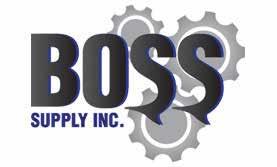
Dairy Star • Saturday, April 13, 2024 • Page 29 Your Leading Supplier of Manure Handling Equipment in Southern Minnesota Your Yo FEATURING OUR CUSTOM DESIGNED, QUALITY BUILT, AND FASTEST OFFLOADING TANKER TRAILERS IN THE INDUSTRY. We are also a proud dealer of: Give Joey Burns a call: 507-461-0038 Email: parts@bosssupplyinc.com 414 South Main St. Janesville, MN 56048 We are also Give Joe Email: part s 414 South Now Introducing our new line of replacement parts compatible with Houle & GEA Liquid Manure Equipment! *Parts are not OEM, manufactured, or aff iliated with Houle/GEA* WWW.BOSS- S UPPLY.COM SEEOUR INVENTORY Celebrating over 40 Years in Business 1010 Hoeschler Dr. • Sparta, WI 54656 Phone: 608-269-3830 Toll Free: 1-888-863-0227 Email: prestonde@prestonde.com Does your milking equipment need maintenance? DAIRY EQUIPMENT INC. We service all dairy equipment! Give us a call to schedule a visit.




Dairy producers are the ultimate citizen scientists
Citizen science has become something of a buzzword in recent years. The term refers to non-scientists or the general public participating in research. There are countless examples of this, but it has been used extensively in the birding and natural resources spaces. There is even a federal government website dedicated to connecting non-scientists with projects where they can contribute (www.citizenscience.gov).

Further, I predict that scientic researchers will increase the use of citizen scientists in research as more advanced mobile technology is placed into public citizens’ hands.
While the rest of the world catches up, I can safely say that dairy producers are the ultimate citizen scientists and have been for over a century. This can largely be attributed to test-day milk recording which dairy produc-
ers established in the early 20th century as a way to gather information on their animals. Eventually, this paved the way for DHI testing services as we know them today.
Test-day milk recording is the bedrock of genetic improvement in the U.S. and is based upon producers sharing data. Producers participating in DHI testing share not only milk yield and component information; they also contribute data related to milk quality, reproduction data and pedigree information, to name a few.
Producers voluntarily opt to allow these data to ow into a national cooperator database that is managed by the Council on Dairy Cattle Breeding. In 2023, over 3.2 million records were added to the database that is used to conduct genetic evaluations. Researchers have used these data to
Bongards’ Creameries
Has been a quality market for MN dairy farmers for over 100 years. MN producers provide one of the country’s most distinctive brands of cheese that is still made using the same Old World craftsmanship and has been combined with cutting-edge technology to produce cheese that delivers unforgettable taste with unparalleled quality. MN Dairy farmers and Bongards, quality that stands the test of time. We offer a competitive base price, premiums, and the best eld representatives in the industry.
13200 Co. Rd. 51
Bongards, MN 55368
(952) 466-5521
Fax (952) 466-5556
110 3rd Ave. NE
Perham, MN 56573
(218) 346-4680
Fax (218) 346-4684

develop genetic evaluations for many of the traits that are utilized today. The information that has been gained through test-day milk recording has allowed for the dairy industry to make rapid, prolonged genetic progress.
There are recent examples of these data being used to evaluate new traits that are used for genetic selection. For instance, the introduction of genetic evaluations for cow health traits. The health data that fuels these genetic traits is recorded by dairy producers into on-farm herd management software, such as DairyComp or PCDart. Eventually these data ow up to the Council on Dairy Cattle Breeding and are used for genetic evaluations. Health trait evaluations are now available for Holsteins, Brown Swiss and Jerseys.
There has been a large increase in the number of health observations being recorded and entering the cooperator database. As noted previously, producers voluntarily allow these data to enter the database managed by CDCB, so it is important that producers who participate in DHI testing
continue to allow data to ow into the database and be used for research.
Another great example, outside of DHI testing, is the current situation regarding Early Onset Muscle Weakness Syndrome in Holstein calves. Dairy producers and veterinarians in Florida, New York and Pennsylvania noticed that calves were having difculty standing and contacted a researcher at Penn State University. The producers then provided genetic samples of healthy and affected calves, which allowed researchers to discover a genetic mutation that was leading to the affected condition. This is a clear example of dairy producers serving as citizen scientists.
One nal note: As new data are generated on farms through technology, it is critical that data continue to ow from producers to researchers. This collaborative relationship between producers and researchers has assisted in rapid progress in our industry. It is crucial that it continues for the long-term success of the dairy industry.
Dana Adams adam1744@umn.edu
320-204-2968
Joe Armstrong armst225@umn.edu
612.624.3610
Luciano Caixeta lcaixeta@umn.edu
612-625-3130
Gerard Cramer gcramer@umn.edu
612-625-8184
Marcia Endres miendres@umn.edu
612-624-5391
Les Hansen hanse009@umn.edu
612-624-2277
Brad Heins hein0106@umn.edu
320-589-1711
Nathan Hulinsky huli0013@umn.edu
320-203-6104
Karen Johnson ande9495@umn.edu
320-484-4334
Emily Krekelberg krek0033@umn.edu
507-280-2863
Claire LaCanne lacanne@umn.edu
507-332-6109
Brenda Miller nels4220@umn.edu
320-732-4435
Isaac Salfer ijsalfer@umn.edu
320-296-1357
Jim Salfer salfe001@umn.edu
320-203-6093
Mike Schutz mschutz@umn.edu
612-624-1205
Melissa Wilson mlw@umn.edu
612-625-4276
Isaac Haagen hagge041@umn.edu
612-624-7455
Michael Boland boland@umn.edu
612-625-3013
Sabrina Florentino slpore@umn.edu
507-441-1765


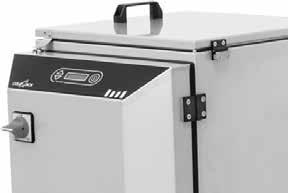


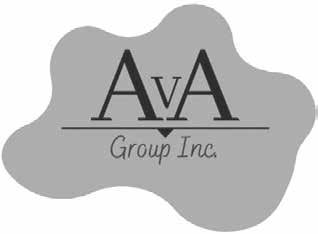
Page 30 • Dairy Star • Saturday, April 13, 2024
www.extension.umn.edu/dairy
GETTING CALVES OFF TO A profitable start WITH Calf Health blog www.avagroupinc.us Contact: avagroupinc.us@gmail.com We’re great with calves, because calves are all we do Getting Calves Through Times of Variable Weather > 715.773.1595
Isaac Haagen University of Minnesota
Developing a hoof trimming schedule for a grazing herd
Lameness is one of the costliest health disorders of dairy cattle, even in a grazing dairy herd. However, many grazing dairy cattle are not part of a routine hoof trimming schedule.
There is an old adage that grazing dairy cattle do not need to have their hooves trimmed, because they will wear them down while walking on pasture. The thought is that as cows walk in pasture and cow lanes every day, they can wear their hooves and maintain proper hoof length. However, in the northern U.S., most grazing herds are conned because of the snow and cold weather and are fed stored feeds and a total mixed ration. If hooves are not maintained, lameness results, which can decrease milk production and reduce welfare of grazing dairy cows.
cows that needed hooves trimmed, and we trimmed cows that were dry or close to dry off. We maybe trimmed 90 cows per year, and usually it was cows with issues or that had extremely long hooves.

Brad Heins
University of Minnesota
Our past experiences with the University of Minnesota grazing research herd in Morris, Minnesota, has provided insight into why hoof trimming is important in grazing dairy herds.
The University of Minnesota West Central Research and Outreach Center has a dairy operation that milks 275 cows twice daily and is representative of a mid-size Minnesota dairy farm. The cows are split between a conventional grazing and a certied organic grazing herd. Treatment options are limited with our organic dairy herd, so developing a hoof trimming schedule is of utmost importance. On our grazing dairy, hoof trimming was always an afterthought, which is common on many farms. Typically, we only trimmed
During spring 2019, we almost had a disaster at our dairy farm. That spring was very rainy, which resulted in a lot of cows walking through the mud to pastures. This can be typical in a lot of grazing dairy herds in the spring, depending on the weather. However, we found ourselves with cows that were lame with many hoof issues. In our 180cow conventional grazing herd, we treated 38 cows from April to August for hoof issues. We used antibiotics in that herd during that wet, rainy spring. Our organic herd also had many hoof issues, and that took a lot more time and thought to deal with because we could not use antibiotics. We knew something needed to be done, and we had to make a change. I am sure we sacriced production with our cows that spring, which would have reduced our protability. So, we decided to develop a six-month maintenance trimming schedule.
In September 2019, we started trimming every cow in our herd. We usually trimmed the cows over a two-day period. We have tracked the hoof issues for our cows across the last three years. Table 1 has the percentage of cows with hoof issues for every six-month trimming. For the rst trimming, we had a lot of cows with thin soles, white line disease, ssures, toe ulcers and sole

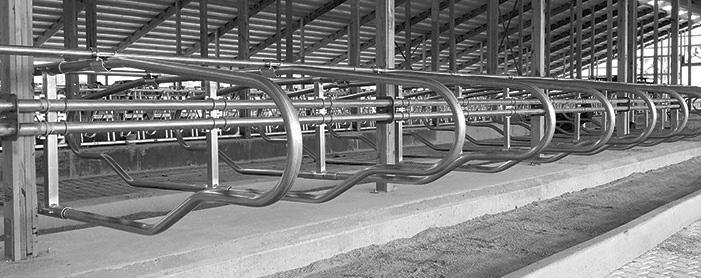

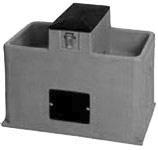

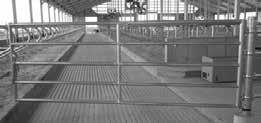
ulcers. We had a few cows with digital dermatitis, or hairy warts, but not very many and those cases were not severe. Hairy warts are not a major issue in our herd, because we are on a maintenance trimming schedule. However, over 15% of our cows had hoof issues in 2019, which was extremely too many.
Thin soles are usually observed in cows where hooves are exposed to wet, muddy conditions and in cows with long walking distances. Grazing cattle often walk long distances from pastures to milking parlors or barns; therefore, their prevalence may be higher than observed in connement cows. Cows that have thin soles usually have a slow and painful walking motion and are considered lame. White line disease are lesions that affect the sole and the wall of the claw. It is one of the most common lesions in grazing dairy cattle, and these may appear as hemorrhages, separations of the hoof and abscesses. Sole or toe ulcers are severe hemorrhages and are very painful for cows. Since we
have started a routine hoof trimming schedule, we have seen some of these hoof issues go down in our herd. Thin soles and white line disease cases are down to 1% of cows, and we have reduced the percentage of cows with hoof issues to less than 2%.
How did we reduce the prevalence of many of the hoof issues? It was quite simple. We started a proper maintenance trimming schedule every six months. We trim every cow (lactating and dry) on the same day every six months. This maintenance trimming is normal trimming of a cow’s hooves. Every grazing dairy herd should be on a schedule to trim all cows twice per year. It is important to work with a hoof trimmer to determine each farm’s schedule and to ensure that all cows are trimmed correctly. Normal hoof trimming can reduce or prevent lameness in grazing dairy cattle and improve longevity of cows, as well as productivity and protability.




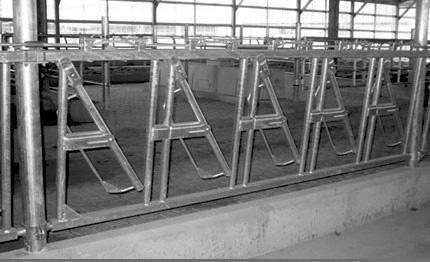



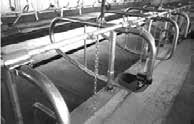




Dairy Star • Saturday, April 13, 2024 • Page 31 One Piece Polythylene Construction MANUFACTURING Freudenthal 715-748-4132 • 1-800-688-0104 • W. 6322 CTH O • MEDFORD, WI 54451 Visit our website: www.freudenthalmfg.com Complete Line Of Ritchie Watering Fountains Fresh Water On Demand 24 Hours a Day • Top Quality Materials • Smart Design • Built to Last COMPLETE WATERER PARTS ON HAND BUY DIRECT FROM THE MANUFACTURER AND SAVE! CS-60 Comfort Stall Heaviest In The Industry AUTO RELEASE PANELS THE HEAVIEST BUILT IN THE DAIRY INDUSTRY. UNMATCHED BY ANY OF OUR COMPETITORS. Heaviest, Strongest, Custom Cattle Gate on the Market! We Ship Anywhere! ALL STEEL COW TRAINERS NOW IN STOCK Diagonal Feed Thru Panel Made to Order Elevated Dual Rail Suspended Freestalls • Provides superior lunge area • Fully adjustable • No stall mounts in the concrete or sand • Installation labor savings • Much stronger than our competitors beam systems • Head to head and single row options available • Stall system stays high and dry, resulting in longer life • Compare the weight of this system, heaviest available on the market today BRISKET BOARD CLAMPS AVAILABLE We Carry A Complete Line Of Stall & Stanchion Clamps At Low Prices. CALL FOR THE ONES YOU NEED! • Non absorbent keeping cows safe from germs and bacteria. • Provides anti slip surface reducing risk of serious injuries. • Improves udder and joint health. • Easy to clean • A 48”W x 72”L mat can be trimmed all the way down to 42”W x 66”L. Poly Square Calf Huts 5’ Wide x 6’6” long HIGH COMFORT MAT LEGEND GROOVED ROLL • Proven for extreme durability • 5mm stainless cable inlay • Guaranteed NEVER to stretch • Grooved top for traction • Can be used with automatic & skid steer scrapers • 10 year warranty PRAIRIE PRIDE BINS
Dairy kids part of winning team
Lake City boys basketball team places second at state tournament
By Amy Kyllo amy.k@star-pub.com
LAKE CITY, Minn. —
The Lake City boys basketball team found success on the court, taking second place in the Minnesota Class AA state tournament.
Centers Rylee Fick and Connor Burgeson are both active on dairy farms. Fick is the son of Troy and Tara Fick, and Connor is the son of Heidi Burgeson.
Last year, the Lake City boys basketball team narrowly missed the state tournament, losing in sections to local rival Plainview-ElginMillville Community Schools by a 3-point shot.
“Losing last year hurt, especially by one 3-pointer with two seconds on the clock left,” Connor said. “So all season, all of us on the team had a mindset that we needed to win.”
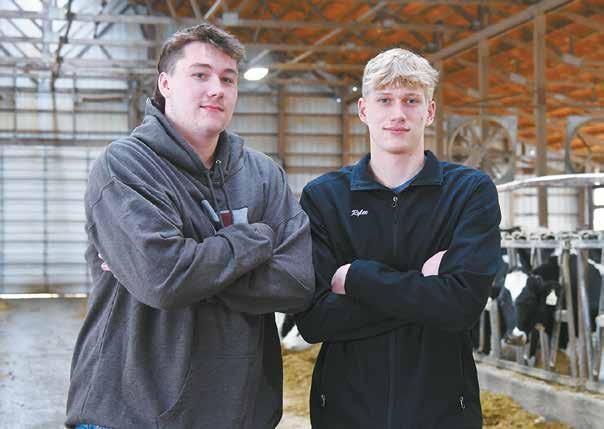
Connor Burgeson (le�) and Rylee Fick stand in a freestall barn April 1 on Fick’s family’s farm near Lake City, Minnesota. Fick and Burgeson were centers for the Lake City basketball team that took second place at the Minnesota Class AA state tournament and are ac�ve on different dairy farms.
The last time the team was in the state tournament was 2019.
Connor said the highlight of his season was going to state. The 6-foot-8 senior’s season statistics included 23 offensive rebounds and 22 defensive rebounds.
“Not everyone gets to experience (state) and play basketball and do what they love,” Connor said.


Rylee, a starting senior for Lake City, was chosen for the Class AA all-tournament team. He made his rst double-double with 10 points and 18 rebounds in the rst game of the regular state tournament.
After missing state so narrowly last season, the team was looking toward the state tournament all year, Connor said.
“We hoped we’d make state,” Connor said. “You’re not 100% sure, but (you have a good feeling).”
Connor’s and Rylee’s mothers said that the community has had high expectations for this team’s success for a long time.
“They’ve been called our dream team,” Heidi said.
Tara agreed.
“Everybody had the mindset … that these boys were going to go somewhere when they’re seniors,” Tara said. “They’ve said it for years.”
Rylee said a highlight for him this season was playing well in the postseason.
“I was very surprised,” Rylee said. “I thought I’d be more nervous.”
It is a different environment playing in Williams Arena or the Target Center than your home gym, Connor said.
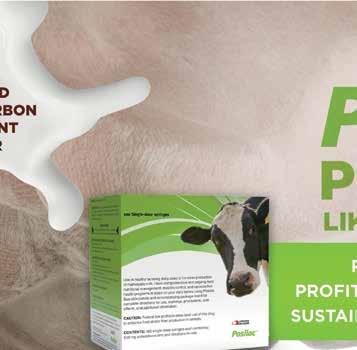

Rylee and Connor, who are friends, have been playing together since they were on a basketball team in third grade.
Turn to BASKETBALL | Page 33


Page 32 • Dairy Star • Saturday, April 13, 2024
AMY KYLLO/DAIRY STAR
Both athletes are active on the farm, especially with eldwork.
Rylee’s family milks
250 cows and farms 800 owned and rented acres near Lake City. Rylee helps with many aspects of eldwork such as driving the silage truck, helping chop corn and
hay, and hauling manure from the slurry in the spring and fall. He also helps bed calves and administer vaccinations.
Connor’s family has 185 head of beef cattle and farms about 1,300 owned and rented acres in addition to custom work. Connor helps





with plowing and digging, driving grain carts, making corn stalk bales and custom farming. He also helps with bedding, feeding and hauling manure.
Connor also milks three days a week for Jake Wiebusch on the farm his parents, Jeff and Ruby, own near Lake City. The Wiebusches milk 125 cows in a double-12 parallel parlor and farm 350 acres.
The two athletes said only two other members of their team have rural backgrounds.
Rylee said coming from a farm feels different.
“You don’t have all that time to put into basketball like some of the town kids do,” he said.
Both athletes said they have learned communication on the farm and have taken it to their sport.
“Basketball is a team sport,” Rylee said. “You need to communicate to know what’s going on, on the court.”
Rylee also mentioned work ethic.
“Put in your time, and you’ll get results,” he said.
Connor also said farming makes him more aggressive on the court.
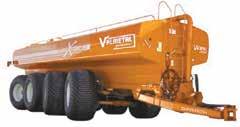
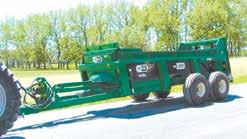


“You play stronger; you have a better mindset,” Connor said. “Farming isn’t always easy, and neither is basketball. You know you’re going to go through ups and downs, and that’s a lot to do with farming too.”
Both boys have
early work release from school. In the spring and fall, they use the release to work on the farm. Over winter, they use their release to work together at Millville Valley Meats.
In the future, Rylee hopes to work full time
for Ag Partners. He already has been working for the company during the summer.
Connor hopes to apprentice at Knobelsdorff, building solar panels. Connor said his dream is to have a beef and crop farm as well.
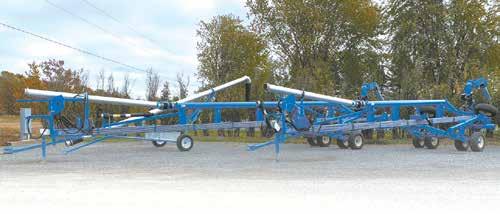

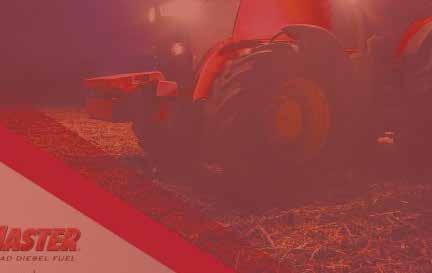
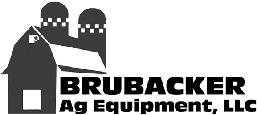
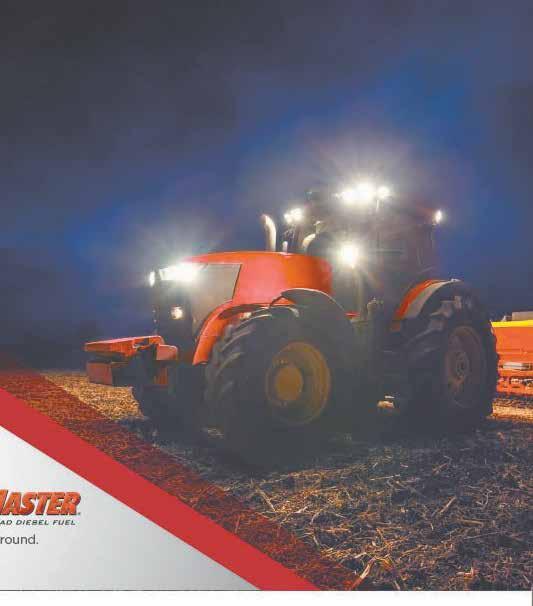



Dairy Star • Saturday, April 13, 2024 • Page 33 HARD WORK DEMANDS A HARD-WORKING DIESEL. A more complete additive package for a more complete burn. Keeping your o -road engines on point. Diesel that doesn’t mess around. Madison, SD (605) 256-4516 © 2022 CHS Inc. Cenex® is a registered trademark of CHS Inc. CURTISS 715-613-7308 EDGAR 715-352-2011 BOSCOBEL 715-937-5190 Edgar Curtiss Boscobel MAXX-TRAC HYDRA RAM SPREADERS HR 550 HR 400 Lagoon Pumps 42 ft. & 52 ft. FEEDING & MANURE HANDLING EQUIPMENT MANURE TANKERS IN STOCK IN STOCK IN STOCK IN STOCK! AUTO-TRAC
Con�nued from BASKETBALL | Page 32
PHOTO COURTESY OF QUINN SWEENEY
Connor Burgeson holds the basketball during a game for Lake City, Minnesota. The 6-foot-8 senior’s season sta�s�cs included 23 offensive rebounds and 22 defensive rebounds.
PHOTO COURTESY OF QUINN SWEENEY
Rylee Fick dunks the basketball during a basketball game against Albany at the state tournament. Fick, a star�ng senior for Lake City, Minnesota, was chosen for the Class AA all-tournament team at state. He made his rst double-double with 10 points and 18 rebounds in the rst game of the regular state tournament.


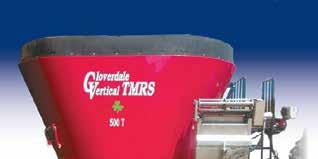


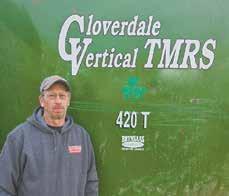
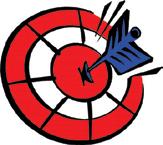



Spring is baseball season. From sitting sandwiched between Dad and Mom in the front seat of a Buick Park Avenue with the radio on to asking Dad the score when he stopped in the barn, the Minnesota Twins have always been part of my life.
Our family is avid baseball fans, spurred on by the fact that my dad loves the sport and always knows the interesting color commentary.
Dad taught us the nuances of the game which transform baseball from a slow, relaxed sport to a precisely detailed, high stakes, exciting sport. We not only learned to appreciate the sport, but in the process, we spent time with Dad.
Every kid goes through a stage between about ages 8 and 14 where they are obsessed with something. For some, it’s horses or a hobby. For me, it was baseball.


 By Amy Kyllo Staff Writer
By Amy Kyllo Staff Writer
At this point, we didn’t have internet. So, one year, I took a planner from our feed salesman and wrote down the scores from every Twins game. I listed if it was a home game. I had the starting rotation semi-memorized, so I listed the starting pitcher too.
My dad’s little treat growing up was to go into town, get a cup of black coffee at Kwik Trip and buy a copy of the Star Tribune. I saved the sports section and cut out all the Twins pictures. With my extensive selection of clippings, I created homemade Twins posters, which I used to envelop my room with Twins pride.
Joe Mauer was my favorite player, so his photos had special precedence. My dresser had a large mirror on it, and I carefully taped up his photos on the periphery.
We made it to a game every summer. On July 10, 2015, we were sitting on the very top row of the very top tier of the stadium when I saw my most memorable game.















The game was normal up until the last inning. We entered the bottom of the ninth trailing Detroit 6-1. My family planned to stick it out to the end even though we knew they were going to lose.
That was when the craziness began.
The Twins went on to score four runs to make it 6-5 when Brian Dozier came to the plate with two men on. A swing of his bat launched the Twins to an 8-6 walk-off victory. The reworks that showered the night sky after the game were small compared to the reworks on the baseball diamond that night.
Another game that stands out was also against Detroit. A few rows back from us was a family of Detroit fans. Somehow, whenever the Twins were ahead, I turned around and smirked at the dad, and when Detroit was ahead, he smirked at me. I’m pretty sure the Twins won that game, so I probably got in the last smirk.









To me, radio is where baseball shines. The voices of the announcers make a soothing background for doing chores or driving. We didn’t have TV service growing up, so listening to the Twins was the only way we were going to follow them.
I remember being 10 years old in 2009 and listening to game No. 163 to determine the winner of the division between the Twins and Detroit Tigers. The game went 12 innings before the Twins nally won.
The coverage of that game the next day was taped to my wall for years.
Outside afterward, I was on an exhilarated and euphoric high. I remember eating victory pops (suckers that Dad gave us) in the milking parlor as we celebrated.
In high school, I asked for a pair of hearing protection ear muffs with radio inside. I used them to listen to the Twins, music and other radio programming like “The Ramsey Show,” while chopping, mowing lawn or working. They were a bit of a terror to my family, because I would work half deaf to anything they needed to say.
I kept good track of the Twins up through 2019, but I’m a little embarrassed to say that I haven’t listened to games the last couple of years. 2020 was too weird of a year to follow, and during the following summers, I was no longer in my usual summer routine of being on the farm and listening while I worked. I am hoping to get back into it and reignite my super-fan status for America’s best pastime this summer.
Page 34 • Dairy Star • Saturday, April 13, 2024 KIOTI.com CS a new KIOTI CS2210 and CS2220. For example, with a d icing in US dollars. Additional fees including, b ailable on new equipment only. Prio 302024 AMonth A&C Farm Service, Inc. 412 Business 23 South • Paynesville, MN 320-243-3736 • www.acfarmservice.com CSSeriesSpringintoSavings CS22 HP 10SERIES CS Series Spring into Savings Purchase a KIOTI CS2210 subcompact tractor as low as $9,999*- OR – as low as $136 a month*. Eligible Units: CS2210 HST model with Ag, Turf or R4 tires and CS2220HST model with Ag, Turf or R4 tires. (Tractor Only) $9999 AMonth $136 ASASLOWAS LOWAS** Feeding Flexibility & Durability in One Mixer 5 YR. OR 5,000 LOAD WARRANTY ON MIXING TUBS, AUGER, FLOOR AND FRAME. STAINLESS STEEL CONVEYORS 9 Different Sizes to choose from 175 cu. ft. - 1,300 cu. ft. Go to www.cloverdaletmr.com for more information. We have had our Cloverdale for one year and feed Angus Holstein cross. Our daily gain and herd health have improved and we have reduced our cost. - Tim Knutson, Ridgeway, IA DEALERS STOCK REPLACEMENT PARTS FOR OTHER BRAND MIXERS Isaacson Sales & Service, Inc. Lafayette, MN 507-228-8270 888-228-8270 Ross Equipment Co., Inc. Lonsdale, MN 800-645-7677 507-744-2525 Brynsaas Sales & Service, Inc. Decorah, IA www.brynsaas.com 563-382-4484 Hartung Sales & Service, Inc. Freeport, MN 320-836-2697 RT Equipment Baltic, SD 605-359-0228 Contact your local dealer to learn more! Target Your Customers! The Dairy Star is sent only to DAIRY FARMERS! If you would like to advertise in the DAIRY STAR, call 320-352-6303 for more information. Those Twins baseball memories
Thank you, dairy farmers
Hopefully, if you follow along with my Princess Kay Facebook and Instagram posts, you will have noticed that March was National Nutrition Month.
I highlighted a few of the aspects of dairy products that make it so essential in our diets. For example, what a great source of protein and calcium it is. I even learned that cheese helps us sleep better.
This is just another way that all of you are helping your communities and world, by making sure that we have access to the super food that is dairy. March was also lled with many visits and appearances that I am excited to share with you.
On the Road with
Princess Kay



 By Emma Kuball 70th Princess Kay of the Milky Way
By Emma Kuball 70th Princess Kay of the Milky Way
First, I had a classroom visit to Sunset Terrace Elementary School in Rochester, Minnesota. I met with 80 rst grade students. We read a book and talked about cow care. We talked about how it’s important that, as dairy farmers, we are listening to our cows and what they are telling us they need. Some of the students were curious how we can tell if our cows need something. So, I explained to them that we have monitors that tell us if something is wrong, and sometimes, dairy farmers know their cows so well that they can see if something isn’t quite right.
I also let them know that our cows have a secret superpower: They are the ultimate upcyclers. We talked about the cycle of growing the crops to feed the cows. Then, the cows produce milk and waste. Then, we can use the waste to grow more crops.
Finally, we ended the visit by writing thank you cards. The students were so excited to write to all of you and let you know that they are thankful for the work you do for them.
“Thank you, dairy farmers, for the milk.”
“Thank you, farmers, for growing our food. We love you!”
“Thank you, you are the best.”
“Thank you for everything!”
“Thank you for helping us. Thank you for growing our food.”
“Thank you for working hard.”
“Thank you for producing our milk, ice cream and cheese.”
I hope these notes brighten your day and that you are able to see how much the students in Minnesota care about the work that we do as dairy farmers.
Next, I attended the Minnesota Farm Bureau Federation Ag Day Gala. It is so special that we have such strong programs in the U.S. to listen to farmers and act. But, it also provides us with a support system of people to turn to when we need help. Over the past two years of working with the Minnesota Farm Bureau Federation, I have grown so many connections. When I go to an event with them, it feels like I am visiting family. They invited me to give the milk toast, so we all raised a glass of milk to Minnesota dairy farmers.
I also visited the All-Breeds Convention. There were nearly 100 students who attended. It was my rst time at the convention. My dad went along with me. On our way to the convention, he told me all about his experiences in the organization. I loved hanging out with all the students, and it is in-
credible to know that they are the future of the dairy industry and that the future is bright.
I ended March by attending the Rice County American Dairy Association Dairy Princess Banquet. They invited me to speak, and I crowned the next county dairy princesses. It was fun to return to my home county and visit with the dairy farmers who made all of this possible for me. I am glad that I was able to thank them for all they have done for me.
Wishing you all a happy spring, as we look forward to planting season.
Princess Kay of the Milky Way, Emma Kuball,
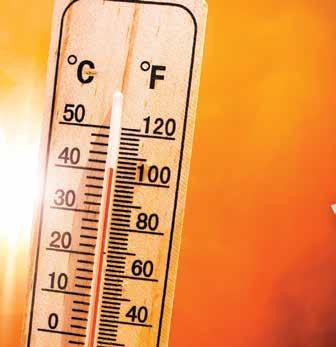
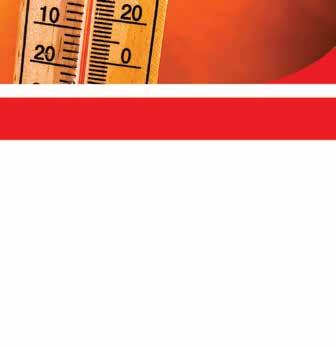


serves as the Minnesota dairy community’s goodwill ambassador. Kuball grew up in Waterville, Minnesota, working on her family’s sixth-generation dairy farm. She attends the University of Wisconsin-River Falls, studying agriculture education, and looks forward to becoming an FFA advisor. She enjoys reading, crocheting and baking. Her parents are Nate and Shannon Kuball.
Princess Kay is active doing school visits, representing dairy farmers and sharing the importance of dairy farming and dairy foods at appearances across Minnesota.

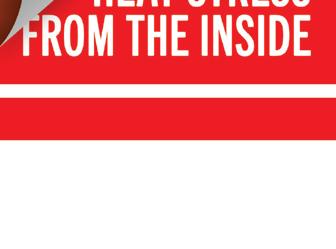







Dairy Star • Saturday, April 13, 2024 • Page 35 Editorial disclaimer: The views expressed by our columnists are the opinions and thoughts of the author and do not reect the opinions and views of Dairy Star staff and ownership. Phone: (320) 259-6680 Web: www.cobaselect.com Buyer assumes all responsibility for use, storage and handling of this product. Select Sires Inc. makes no claims or warranties, expressed or implied. Manufactured for Select Sires Inc., 11740 U.S. 42 N, Plain City, OH 43064. PLAN AHEAD AND SAVE! BOVINE ACCELLYTE II promotion valid from March 1 to April 30, 2024 Let BOVINE ACCELLYTE II reduce stress for both you and your cattle this summer! 2024 Booking Program Promotional Price March 1 - April 30 1-19 bags $79.25 20-79 bags $78.00 80 or more bags $76.00 With summer heat approaching, maintaining health, production and growth is vital to being profitable. BOVINE ACCELLYTE II is a specialized electrolyte for periods of stress, rehydration and pre-hydration during events such as: BOVINE ACCELLYTE II helps to promote feed and water intake, and therefore, restores electrolyte functions and water retention to prevent losses due to dehydration. •Heat stress•Calving•Illness •Feed changes •Shipping/receiving SKIDLOADERS TRACTORS BACKHOES EXCAVATORS & BULLDOZERS joewelcheq.com 507-724-3183 Electronic Dairy Board Repair Service Specializing in: WestfaliaSurge, BouMatic, & DeLaval pulsators & Takeoffs, circuit boards, Mueller milk tank circuit boards. Call: (c) 406-590-7764 www.circuit xer.wixsite.com/ boumaticboardrepair Repair vs. Replace
Taking the plunge
People on vacation often have a list of must-see attractions. Many moons ago, when our two sons were grade schoolers, my wife, our boys and I went on a family vacation to the Black Hills. One of our must-see attractions was Hot Springs, South Dakota.
Located on the southern edge of the Black Hills, Hot Springs is a quiet little community that boasts several unique features. For instance, Hot Springs is where young ladies go to participate in the annual Miss South Dakota competition. On the opposite side of the coin, Hot Springs is also where a trove of gnarly old mammoth bones were discovered in an ancient sinkhole.
Hot Springs is probably best known for its namesake’s natural hot springs.
Among the most famous hot springs are those that serve Evans Plunge. Evans Plunge is a humungous indoor swimming pool that’s fed by the warm springs bubbling up through its gravel oor. Bathing
in its mineral-laden water has been touted as being the cure for everything from acne to zinc deciency. But, our sons weren’t interested in curing anything unless it involved a waterslide.
The whole way out to the Black Hills, all we heard from the boys was “Hot Springs” this and “waterslide” that. Their mother and I got so sick of these constant reminders that we couldn’t wait to visit Evans Plunge just so we could nally quit hearing the word “waterslide.”
We wended our way to Hot Springs, checked into a hotel (My wife is a big fan of credit card camping.) and jumped into our swimsuits — all except for my wife.
When asked if she was going to join the fun, my wife took a pass, citing her total lack of a tan. I was astonished that she didn’t want to tag along to keep an eye on me. “After all,” I teased, “there’ll probably be some of the latest swimsuit fashions on display at


the pool.”
“That’s not a concern,” she replied. “By the way, why don’t you let me hang onto your glasses for you?”
Drat! She had obviously caught onto the fact that I can’t see squat without my glasses.
My wife dropped us off at Evans Plunge, and our sons immediately sprinted off to the waterslides. I lagged behind with a towel wrapped around my waist. Being ogled by strangers suddenly made me feel self-conscious about my neon-white legs.


Evans Plunge has monstrous waterslides, one of which is a soaring blue tube that spirals downward like a giant corkscrew. I was skittish about the thing, so I observed it for a while from a safe distance.

Little kids would clamber up the waterslide’s stairs and, with no apparent fear, hurl themselves into the tube’s gaping maw. They would come out of the bottom at a stately pace, settling into the 87-degree water as gently as thistle down.
“Heck,” I thought. “If those little kids can handle that waterslide, so can I.”
This is the kind of thinking that causes so many guys so much grief.
What I didn’t realize is that there’s a specic law of physics that applies to waterslides: weight plus gravity equals speed. The puny little kids who were riding the waterslide were nearly at a stop when they reached the bottom. Those of us who are more, shall we say, substantial, go faster — a lot faster. People who are really substantial can attain relativistic speeds; time stands still for them.
I was ignorant of all this as I began to hurtle down the devilish blue tube. Acceleration built at an alarming rate, and a frightful feeling gripped my gut. Water sprayed into my eyes, nearly blinding me as I sped down the ever-tightening spiral.
I was ejected, totally disoriented, into the pool at warp 9, splitting the water with a thunderous kersplash. Many onlookers thought that they were witnessing a recreation of the parting of the Red Sea. My landing was most undignied, with high-pressure water being forced into my nose, mouth and ears and into places that I don’t care to mention.
•
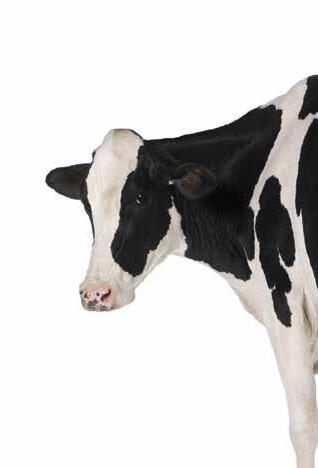
On the plus side, I was able to expand my vocabulary that day. As I clumsily hauled myself out of the pool, I overheard a couple of teenaged boys snicker and call out, “Hydro-wedgie.” This new phrase had the double effect of being both uncomfortable and true.
I decided to spend the rest of the afternoon quietly soaking in the soothing waters of Evans Plunge until I resembled a giant pink prune.
And, I discovered one more thing that Evans Plunge can brag about: I nally got rid of all that gunk from underneath my ngernails.
Jerry Nelson is a recovering dairy farmer from Volga, South Dakota. He and his wife, Julie, have two sons and live on the farm where Jerry’s great-grandfather homesteaded over 110 years ago. Jerry works for Dairy Star as a staff writer and ad salesman. Feel free to email him at jerry.n@dairystar.com.












Page 36 • Dairy Star • Saturday, April 13, 2024
By Jerry Nelson Columnist
Melrose, MN Jake—320.761.9630 jmoline@Leedstone.com Glencoe, MN Paul—320.510.0200 pbecker@Leedstone.com Plainview, MN Gregg—507.696.5518 gluebke@Leedstone.com Menomonie, WI Mark—507.259.8047 mjurgenson@Leedstone.com CONTACT YOUR LEEDSTONE REP TODAY! Leedstone.com/equipment-team • • Family & veterinarian owned since 1994 LESS LABOR FOR YOU; GREATER COMFORT FOR HER With A5 Astronaut Automated Milking Robots Ask your neighbors how they like their robots! Every farm should have one! Join the 100+ farm families who benefit from a combined 300 Astronauts and see for yourself!
See
and
each cow
Optimize
your herd
Reduce
Gain
low-energy equipment
Dear County Agent Guy
You: •
health
productivity data on
•
the production of
•
manual, physical labor in milking •
from high-performance,
She:
Gains
Can
Gets
Enjoys
Keeping Families on the Farm™ Follow us on social media for the lastest news on Lely and more, with Leedstone! Blue Hilltop, Inc. Dana Berreau 507-879-3593 / 800-821-7092 Box 116, Lake Wilson, MN 56151 Your Mixer, Spreader, Hay Processor Headquarters We carry:
freedom and feels less stress •
milk 3 to 5 times per day •
unique-to-her-body treatment •
consistency in her routine
Is 3-times-a-day milking best for you, your cows?
According to the University of Wisconsin-Madison’s Dr. Nigel Cook, the immediate effects of adding more cows to a pen are mostly positive, i.e., more milk in the tank; while, the long-term effects of overcrowding take more time to develop, e.g., more lame cows, thin cows, open cows, lower producing cows and so forth.
Veterinary Wisdom
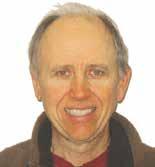 By Jim Bennett
By Jim Bennett
Farmers crowd pens more than in the past because the value of a cow in real dollars has, until very recently, continued to drop for a long time, and the cost of a building, per stall, has signicantly increased. Increasing parlor throughput by reducing the amount of udder stimulation time, for example, by not fore stripping, will increase the amount of milk sold per parlor stall per hour or per day. However, if reducing stimulation time results in more cows with delayed milk ejection, milk production per milking will be reduced by 7 pounds for every cow with a one-minute delay, according to Michigan State University’s Dr. Ron Erskine.
That is 7 pounds per milking, not per day. Farmers strive for more milk per stall by increasing parlor throughput simply because selling more milk per unit of xed cost is always a promising idea, and of
course, the cost of building a parlor has dramatically increased as well.
Cook also points out that milking cows twice a day versus three times a day reduces some of the negative effects of overcrowding, because cows have additional time to lie down now that they can skip one trip to the parlor.
Erskine also points out that milking cows twice a day may result in a smaller proportion of cows with signicant delays in milk ejection if udder stimulation time is inadequate, because cows milked twice daily usually have greater intra-udder pressure due to the presence of more milk.
This is why Cook, Erskine and I recently found ourselves together in a room chatting about twotimes-a-day versus three-times-a-day milking in today’s industry.
Most dairy veterinarians have seen at least one farmer sell a bunch of cows and then not seen a corresponding reduction in herd milk production. This may be because the other cows immediately compensate from having more stall space or bunk space and produce more milk. More likely, though, is that the cows that were sold were not all that productive.
Often, these are “broken” cows, meaning animals that were very productive at one time but due to a series of unfortunate events, for example, lameness, mastitis or poor reproductive performance, no longer are.
Dairy veterinarians who spend a signicant amount of time evaluating milking routines also have all seen the effects of improving udder stimulation,
including increased milk production per cow.
Veterinarians also have seen clients switch from twice-daily milking to thrice-daily and harvest 7-8 pounds more milk per cow per day. They have also seen clients who switched from three-times-a-day milking to two-times-a-day milking and did not see a signicant reduction in milk produced per cow.
Taken together, these observations can be hard to reconcile, but on this particular day, we speculated that perhaps, in some herds with very high stocking rates, two-times-a-day milking might be a better choice than three-times-a-day milking, because of positive effects of cow health, milk ejection or both.
Dairy nancial experts who consult for herds of signicant size in our part of the country will often opine that milking 3X will return more net dollars than milking 2X, and past experience has shown this to usually be true. However, in some cases, that advice might be wrong. It might be wrong because we are not able to fully understand, calculate and project the cumulative effects of crowding pens and crowding parlors. This is not to suggest that anyone reading this article switch from 3X to 2X, but perhaps, some might want to ask more questions and explore the topic further. Three-times-a-day milking may not be best for you and your cows.
Jim Bennett is one of four dairy veterinarians at Northern Valley Dairy Production Medicine Center in Plainview, Minnesota. He consults on dairy farms in other states. He and his wife, Pam, have four children. Jim can be reached at bennettnvac@gmail.com.

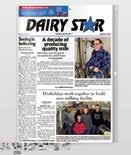






JD
PRWD, 892 hrs., 538 CH hrs., #565399
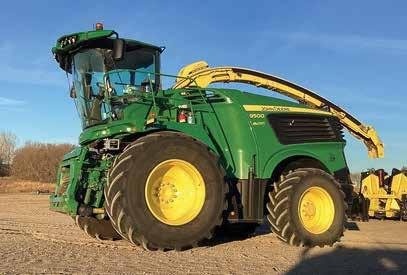













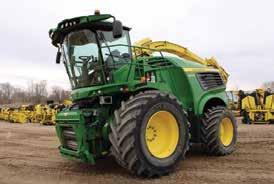




Dairy Star • Saturday, April 13, 2024 • Page 37
Columnist
Read the Dairy Star iry Star online FREE at www.dair ystar.com at www.dairystar.com E-EDITION Several units price-reduced! Over 25 available Locations throughout minnesota & western wisconsin! CALL TODAY! (320)352-6511 SEE OUR COMPLETE INVENTORY WITH PICTURES AND DESCRIPTIONS AT: www.mmcjd.com 2010 John Deere 7550 2778 hrs., #579487 $146,500 2022 John Deere 9500 613 hrs., #565391 $505,900 2019 John Deere 9900 1396 hrs., #550177 $399,900 SELF-PROPELLED FORAGE HARVESTERS JD 6810 1993, Kernel Processor, PRWD, 5200 hrs., 3800 CH hrs., #579404 ......... $30,000 JD 7550 2010, Kernel Processor, PRWD, 2778 hrs., 1896 CH hrs., #579487 ....... $146,500 JD 7750 2008, Kernel Processor, 4691 hrs., 2991 CH hrs., #568793 .................... $89,500 JD 8400 2023, Kernel Processor, PRWD, 26 hrs., #560608 ................................ $531,000 JD 8400 2021, Kernel Processor, PRWD, 527 hrs., 317 CH hrs., #574593 ........... $441,000 JD 8600 2016, Kernel Processor, PRWD, 1610 hrs., 1200 CH hrs., #555841 ....... $235,900 JD 9500 2022, Kernel Processor, PRWD, 613 hrs., 317 CH hrs., #565391 ........... $505,900 JD 9600 2022, Kernel Processor, PRWD, 663 hrs., 507 CH hrs., #576032 ........... $499,900 JD 9600 2021, Kernel Processor,
...........
Kernel Processor,
775 CH hrs., #565393 ......... $375,000
$420,000 JD 9600 2020,
PRWD, 1310 hrs.,
9600 2019, Kernel Processor, PRWD, 1311 hrs., 811 CH hrs., #532049 ......... $369,900 JD 9600 2019, Kernel Processor, PRWD, 1741 hrs., 1130 CH hrs., #553763 ....... $329,900 JD 9700 2021, Kernel Processor, PRWD, 831 hrs., 527 CH hrs., #571817 ........... $479,900 JD 9700 2021, Kernel Processor, PRWD, 1200 hrs., 900 CH hrs., #579477 ......... $454,900 JD 9700 2020, Kernel Processor, PRWD, 968 hrs., 500 CH hrs., #552460 ........... $469,900 JD 9700 2020, Kernel Processor, PRWD, 1170 hrs., 835 CH hrs., #543646 ......... $439,900 JD 9800 2022, Kernel Processor, PRWD, 565 hrs., 375 CH hrs., #572207 ........... $575,000 JD 9800 2021, Kernel Processor, PRWD, 576 hrs., 302 CH hrs., #550106 ........... $518,000 JD 9800 2021, Kernel Processor, PRWD, 627 hrs., 369 CH hrs., #552624 ........... $509,900 JD 9800 2020, Kernel Processor, PRWD, 1333 hrs., 859 CH hrs., #536344 ......... $429,900 JD 9800 2020, Kernel Processor, PRWD, 1538 hrs., 942 CH hrs., #554135 ......... $389,900 JD 9800 2019, Kernel Processor, PRWD, 1063 hrs., 660 CH hrs., #550175 ......... $439,900 JD 9900 2022, Kernel Processor, PRWD, 746 hrs., 330 CH hrs., #565395 ........... $595,000 JD 9900 2022, Kernel Processor, PRWD, 2000 hrs., 1500 CH hrs., #574301 ....... $349,900 JD 9900 2021, Kernel Processor, PRWD, 1057 hrs., 675 CH hrs., #565397 ......... $509,900 JD 9900 2021, Kernel Processor, PRWD, 1353 hrs., 990 CH hrs., #573149 ......... $409,900 JD 9900 2019, Kernel Processor, PRWD, 1396 hrs., 884 CH hrs., #550177 ......... $399,900
Paying farm kids
Last month, I told you all about my ongoing foray into the world of nances, taxes and accounting. Tonight, as I sat down at our desk to write up this month’s story, in front of the keyboard was a stack of time sheets and a shiny folder from our local bank. I’m not behind on payroll, or at least not for the employees I’m not related to. They all get their hours added up and checks written the rst and 15th of each month. These time sheets are from our kids. Finishing up adding up hours and getting them paid is next on my list, I swear.
In the past, we paid the kids with commodity wages by giving them a calf or cow to sell in their name at the sales barn every now and then. If you’re not familiar with that IRS loophole, you can pay an employee in commodities and avoid having to withhold payroll taxes. At this point, I should
make some kind of legal-sounding disclaimer that I am in no way a tax professional, and you should probably ask a CPA if you plan to apply anything I mention in this article to your business.
That said, you have been warned. Paying the kids in calves is both a good way to reward them for their hard work on the farm as well as familiarize them with the variable nature of pay in the agricultural industry. Some years, you may get $700 for a day-old Holstein bull calf, and some years, you almost have to pay someone to take a month-old Jersey calf. The kids come to the barn six mornings a week to help nish morning chores, for which they will continue to receive calves and cull cows as compensation. They are now doing much more on the farm, and even with the high price of calves this year, it’s time to start writing them checks.

When Emily and I joined the farm, Dad and I formed a limited liability company to transfer ownership of operational assets and to split the land off from the operational part of the farm. Because I don’t own 100% of the LLC shares, I can’t pay the kids directly from the farm without us and them paying payroll taxes unnecessarily. Unless the place they work for is a sole proprietorship owned by a parent, the business will have to withhold federal payroll tax. This is why there is a shiny folder from New Market Bank next to the timesheets. We formed a sole proprietorship that our kids will work for and opened a business checking account. Our new family business will provide casual labor for such tasks as calf feeding, milking and eldwork, which will be billed to the LLC. I’ll put the money in the checking account, then I’ll write out checks to the kids for their hours worked. We need to negotiate wage rates and their employment contract, which I hope will be a fun learning lesson for them in conducting business.
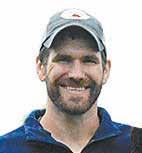 By Tim Zweber Farmer & Columnist From the Zweber Farm
By Tim Zweber Farmer & Columnist From the Zweber Farm
The next thing to do with the kids is set them up with Roth individual retirement accounts to invest their hard-earned wealth in. They may be a long way from worrying about how much money they have set aside for retirement, but the sooner they start investing their money, the less they’ll have to put away every month later on in life, thanks to compounding growth and a whole lot of years to do it. They can also pull money out of a Roth IRA for college or a home purchase, if they so choose. Otherwise, it will sit there, growing tax free, until they need it when they retire someday.
The part of getting paid more that they are less excited about is that we will be asking them to pay for more of their expenses, such as clothes and activities. A bed and food are complimentary, but registering for a rock climbing competition or going to a summer camp are options they can now decide whether they value enough to write the check for them. Hopefully, making these hard decisions will prepare them for the many tradeoffs they’ll be analyzing soon when they leave home and maybe return or nd their own passions to pursue.
Until next time, keep living the dream, and don’t forget to pay yourself. Sometimes, that’s the hardest check to write at the end of the month.
Tim Zweber farms with his wife, Emily, their three children and his parents, Jon and Lisa, near Elko, Minnesota.

•
•
•

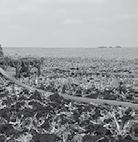





Page 38 • Dairy Star • Saturday, April 13, 2024
LEEDSTONE Melrose, MN 800-996-3303 Glenco, MN 877-864-5575 Plainview, MN 800-548-2540 Menomonie, WI 866-467-4717 ZUMBRO AG SOLLUTIONS LLC Zumbrota, MN 651-380-2856 sioux dairy equipment Rock Valley, IA 800-962-4346 MIDWEST LIVESTOCK Zumbrota, MN 507-732-4673 Menomonie,WI 715-235-5144 Renner, SD 605-274-3656 Central ag supply Juneau, WI 920-386-2611 Baraboo, WI 608-356-8384 800-597-2394 or 605-338-6351 5301 West 12th St., Sioux Falls, SD www.pfeifersonline.com 5
www.dhfieldservices.com D&HFIELD SERVICES, INC . Darrin Herickhoff 320-760-0848
Liquid Manure Handling
•
Solid Manure Handling
Trucking
Pushing & Packing
Executing excellence through presence in the process
Nick Saban, one of the greatest coaches in sports, announced his retirement earlier this year after coaching college football for 28 years.
During his tenure as a coach, he acquired an astonishing seven national titles — the most in college football history — and 292 wins as a head coach. That’s an incredible feat
The NexGen: Adventures of two dairy daughters

of the year.
Small details lead to big results. It sounds simple. Each cow should have clean, dry teats at milking. However, how many can condently say they accomplish that task on every cow, every milking, every day of the year? They say the devil is in the details, but rather, it’s in being present and completing the details 100% of the time each and every day.





 By Megan Schrupp & Ellen Stenger Columnists
By Megan Schrupp & Ellen Stenger Columnists
to accomplish.
Saban’s philosophy of leadership was key to his success and one that we can all apply to our dairy businesses to achieve high levels of excellence as well. That key philosophy is: The way you do one thing is the way you do everything.
Saban’s approach isn’t novel but is effective nonetheless. He believes that results are a direct product of the process. And so, when we alter our focus onto the daily processes which occur on our dairy rather than the outcome and our goals, we bring operational excellence to our dairy businesses. We move our attention to the variables that we can control every day, and we do not worry about those that are out of our control.
Numerous things are out of our control on our dairies, such as the milk price, feed costs and the weather. Now, we realize dairies may act to mitigate some of the volatility in milk and feed markets, but the overall prices, to a large part, are uncontrollable. Therefore, we devote our time and energy to executing the things that we can manage, such as the daily milking process, breeding, feeding, daily care of our cows and calves, and all the other tasks that need to be accomplished, wholeheartedly. Consistency in the execution of these tasks to the best of our ability is the key to success at the end of the year.
These small, daily processes rarely lead to immediate returns, but they compound quickly and lead to big wins in many of the key areas of our dairy. Being present and focusing on the way we prepare semen to breed a cow and the insemination process itself can have an immense impact toward meeting and exceeding our reproduction goals at the end
Transition cow daily management is another critical area for a process-focused mindset. At NexGen, we aim to do our best for each and every fresh cow to maximize peak milk and lactational performance of the dairy.
Our focus isn’t on our desired goal, milk production, but rather on the simple, daily tasks applied to a fresh cow and executing those to the best of our ability every day. Paying closer attention to the little things makes it easier to spot opportunities for improvement. Each fresh cow receives our predetermined protocol. However, when we are present in the process we are completing, we can quickly pivot if needed. Attention to our process with real-time information, such as eating time from our cow monitoring technology, enables us to identify alterations in a specic cow and tailor our protocol to what she needs. Those small, intentional movements enhance our herd health and, ultimately, protability at the end of the year.
There is also a peace that comes with a process-controlled mindset, because at the end of the day, you know you did your best and gave it your all. When we are presented with those challenging days, when nothing seems to cooperate, a consistent focus on doing your best every day gets you through to the next, new day. When the fresh cow you have been spending immense amounts of time and effort with doesn’t fare well, knowing that you did your absolute best minimizes discouragement and keeps you on track.
Saban, in 28 years as a college coach, led hundreds of athletes to consistently winning football seasons; during that time, he never had a losing season. He taught these athletes to approach every task, no matter how small and unimportant it may seem, with a sense of high performance, accountability and purpose. He understood that these small, daily actions would lead to results.
Develop a mindset of processedfocused excellence in your dairy with your team to drive your dairy to the heights of excellence.
Megan Schrupp and Ellen Stenger are sisters and co-owners of both NexGen Dairy and NexGen Market in Eden Valley, Minnesota. They can be reached at Nexgendairy@gmail.com.





































Dairy Star • Saturday, April 13, 2024 • Page 39 Easy as peel and stick! 3011 7th St. S. Waite Park, MN www.mntarpandliner.com • Available in 2in, 4in and 8in widths • Buy in bulk of 82ft per roll Or by the inch or foot. bli2i4id8i Specifications • Grain Trucks • Side Dumpers • Gravel Trucks • Farm Trucks New & Repair Tarps • Vinyl Tarps • Tents • Vinyl Seats • Camper Canvas • Boat Covers • Boat Lift Covers • Canvas Repairs • Truck Tarps lT BtC Applications And more! Step 1. Clean damaged fabric surface Step 2. Cut PETACKS to desired size Step 3. Peel & Stick PETACKS Patch is permanent and ready for immediate use! 3 Step Process 320-257-5535 UV Resistant Weather Resistant Temperature Resistant 80 lbs. Adhesion Strength Impermeable Bond Durability Covered Structures Vinyl Coated Tarps Peel & Stick ! Truck Liner Roll Top Under New Ownership!
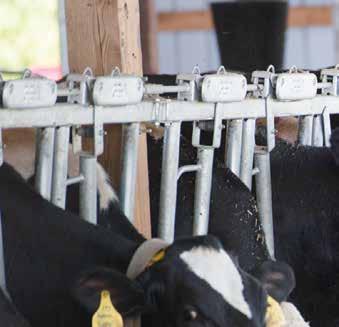
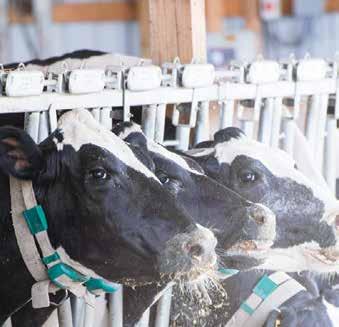
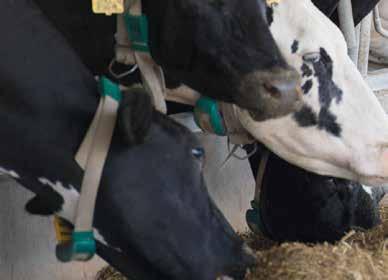
pregnancy rate

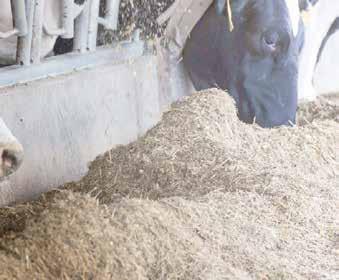
7% “CowScout pays for itself. We’re improving reproduction and finding health issues sooner, before they escalate into something more severesaving treatment costs and lost production while saving labor and being more efficient with our time. CowScout is one of the best investments we’ve made.”

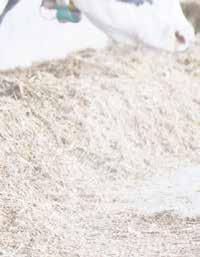
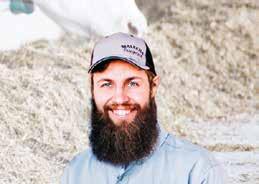
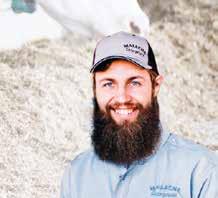




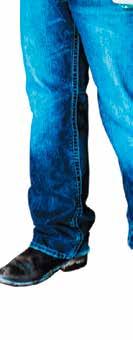

Page 40 • Dairy Star • Saturday, April 13, 2024 BENJAMIN WUEBKERS Malecha Dairy Villard, MN Milking 1,070 cows GEA.com/DairyFarming Contact Your Local GEA Milking Equipment Dealer:
our
CONCEPTION RATE MISSED HEATS Central Ag Supply, Inc. Centre Dairy Equipment and Supply Inc. Sauk Centre, MN Eastern Iowa Dairy Systems Five Star Supply Fuller’s Milker Center, Inc. J Gile Dairy Equipment, Inc. Leedstone, Inc. Midwest Livestock Systems Midwest Livestock SystemsKozlovsky Dairy Equipment
Westfalia Surge Sioux Dairy Equipment, Inc. Rock Valley, IA Stanley Schmitz, Inc. Tri-County Dairy Supply Preston Dairy Equipment
CowScout™ has improved
by
Monroe





















































































































































































































































































































































































































































































































































 By Amy Kyllo Staff Writer
By Amy Kyllo Staff Writer
















 By Emma Kuball 70th Princess Kay of the Milky Way
By Emma Kuball 70th Princess Kay of the Milky Way























 By Jim Bennett
By Jim Bennett




























 By Tim Zweber Farmer & Columnist From the Zweber Farm
By Tim Zweber Farmer & Columnist From the Zweber Farm










 By Megan Schrupp & Ellen Stenger Columnists
By Megan Schrupp & Ellen Stenger Columnists



































